Hero’s Journey Example with Harry Potter
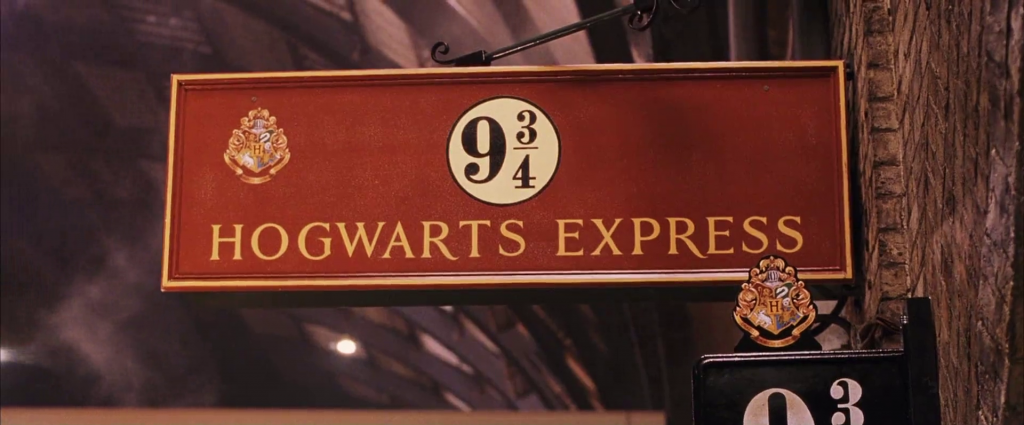
The Hero’s Journey is a popular writing framework that outlines a main character’s journey from zero to hero. Famous movies and stories have been shown to fit the narrative pattern of the Hero’s Journey. One of those titles is Harry Potter and the Philosopher’s Stone.
Given the fame of the story and the series in general, and other stories following the framework, there is success in the Hero’s Journey. In this article, we’ll dissect the first of J.K. Rowling’s Harry Potter novel series, and see how Rowling wrote the Hero’s Journey for Harry.

Quick Recap: Hero’s Journey
The Hero’s Journey can be best seen as a writing guide, formulated after success stories of heroic protagonists. First described by Joseph Campbell and then later revised by Christopher Vogler, the Hero’s Journey outlines the basic recipe for a main character’s adventures.
Campbell introduced 3 main acts, further broken down into 17 finer stages. Vogler, 50 years after Campbell’s version, published a refined version with only 12 stages. These are as follows:
Ordinary Adventure
Call to adventure, refusal of the call, meeting with the mentor, crossing the first threshold, tests, allies, enemies, approach to the inmost cave, reward (seizing the sword), the road back, resurrection, return with the elixir.
We’ll be using Vogler’s version in going through the novel Harry Potter and the Philosopher’s Stone.
The Story Choice
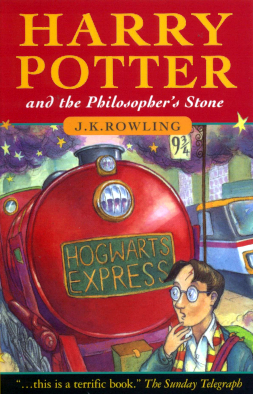
We will be studying Harry Potter and the Philosopher’s Stone by J.K. Rowling. The first of seven fantasy novels in the Harry Potter series, this novel enjoyed great success upon its release in 1997. So much, so that the entire series has been adapted into equally critically acclaimed films.
We didn’t choose a Harry Potter title for this study because it has all the stages of the Hero’s Journey. In fact, this book does not have all of the stages, with some a bit more subtle than others.
However, showing a story with a missing piece or two of the framework would help you understand that the Hero’s Journey is not a rigid guide. It is simply a tool to help writers write the kind of story that their main character deserves. Plus, we deem that a popular book would be perfect for helping you understand the Hero’s Journey.
With that out of the way, let’s go into the discussion!
The First Act – Departure
Similar to the Three-Act Structure , the first act, Departure, is a pretty short section of the novel. The Departure covers Chapters 1 to 6 of the book, starting from the introduction of Harry to his, well, departure from Privet Drive to Hogwarts.
The first chapter couldn’t have been more of a perfect fit for this stage, where the introduction of the Dursleys enforces that they are normal, thank you very much . However, the entire first chapter also introduces the “special” or magical world, with Professor McGonagall, Professor Dumbledore, and Hagrid dropping off baby Harry.
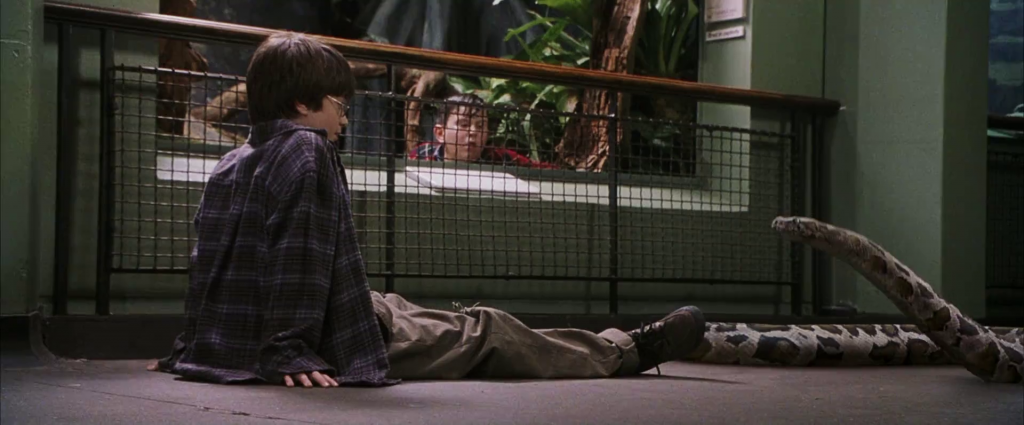
The second chapter then comes back to show the ordinary life of the Dursleys with Harry. Harry is special, that much is clear to Petunia and Vernon. However, they’ve come to shrug him off as weird, then treat the “weird things” happening around Harry as a consequence of him being weird.
The call comes swiftly in the form of an oddly specific mail for Harry. Of course, the weird-averse Dursleys snatch this letter and hamper the succeeding mail from ever reaching their true recipient.
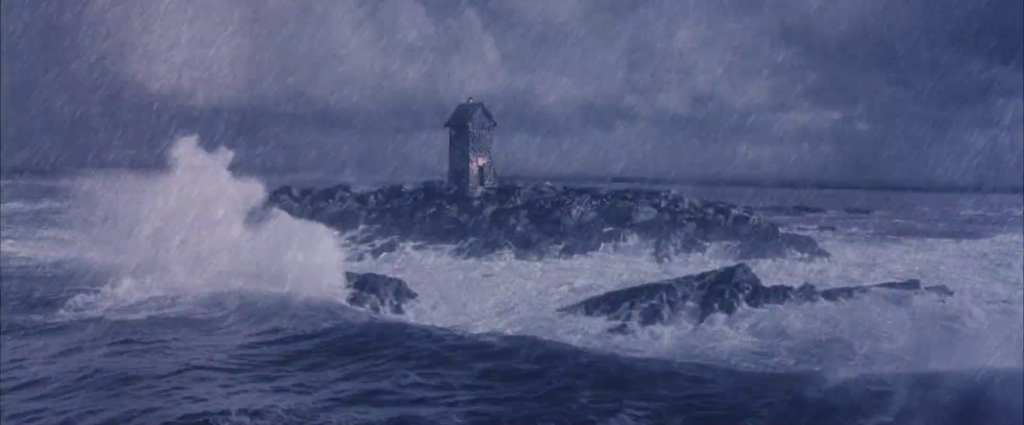
More calls to adventure come through for Harry, to the point that the mails even come through the fireplace, plus the hundred letters sent to the hotel that the Dursleys and Harry moved to. Not even a rocky island accessible only by boat can stop the ultimate call for Harry…
The story is unique in the sense that the three consecutive stages — Call to Adventure, Refusal of the Call, and Meeting the Mentor — all condense into a single scene.
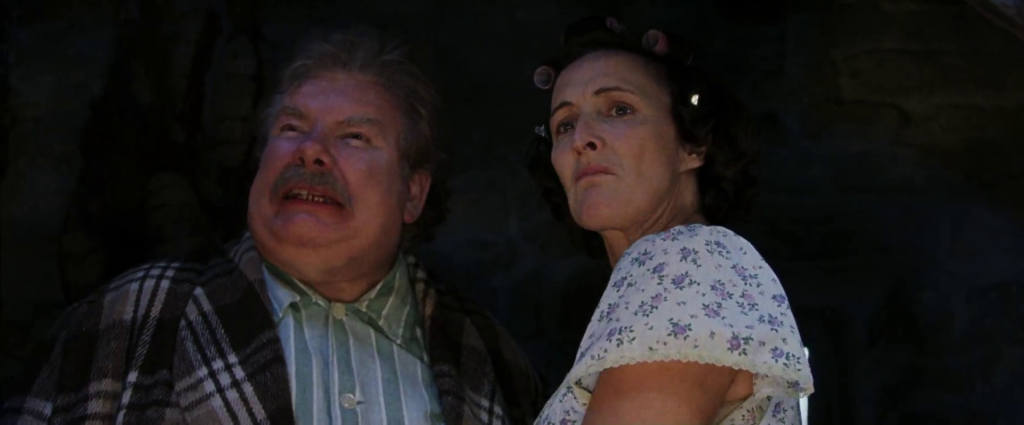
As Hagrid arrives at the dilapidated house, delivering the final invitation, the Dursleys vehemently try to stop Harry. In this case, Harry was not the one refusing the call, but rather the Dursleys. (Although one can say that Harry’s self-doubt about his capability is also a refusal.)
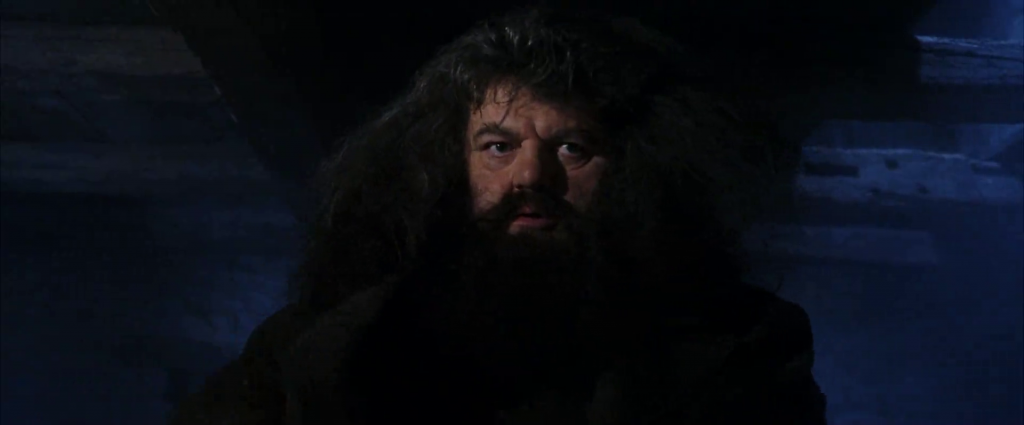
Hagrid’s introduction can be seen as Harry’s first meeting with the long line of mentors that he will gain throughout the story. Hagrid tells Harry of his true nature as a wizard, giving him the much-needed confidence boost to accept the Hogwarts invitation.
Later on, Harry will meet more mentors, most prominently Professor Dumbledore, but Hagrid kicks off this stage.

In this stage, the threshold is presented quite literally. Hagrid brings Harry to Diagon Alley through a magical wall in the Leaky Cauldron. Entering the Leaky Cauldron is part of the threshold, already showing contrasting differences between the special world and the ordinary world.
In the ordinary/Muggle world, Harry is but a normal boy with nothing to his name. However, in the magical world, Harry’s name is celebrated as the Boy Who Lived, as patrons in the pub hurriedly greet him.
Diagon Alley is where Harry first crosses the threshold, with the magical wall serving as the literal threshold. There, Harry experiences his first exposure to magic. It befits its role as an introduction to the magical world; a marketplace is common enough in the ordinary world, but its contents are magical.
Second Act: Initiation
Following a similar cadence with the Three-Act Structure again, the second act, Initiation, comprises the greater bulk of the story. In the novel, this act covers so much of the book; from Chapter 6 up until a part of Chapter 17, half a chapter shy of the end of the novel.
The culprit for the big composition of the second act lies in this stage, running for almost the entirety of the Second Act. Multiple minor trials, important allies that become life-long friends, and difficult enemies prop up in every chapter. Harry, despite being a neophyte at all this magic stuff, is tested at every corner.

The very first test that Harry encountered would be the Sorting Hat and his possible entry as a Slytherin student. Other prominent trials include the alluring temptations of the Mirror of Erised (which, fun fact, is spelled the reverse of desire), and his admission into the varsity Quidditch team while juggling the usual 12-year-old school problems.
In this novel, we are also introduced to the iconic trio that would be called the main characters of the series. We meet Ronald Weasley and his family of redhead wizards at Platform 9 ¾, while Hermione Granger, the genius Muggle-born witch, appears shortly during the train ride.
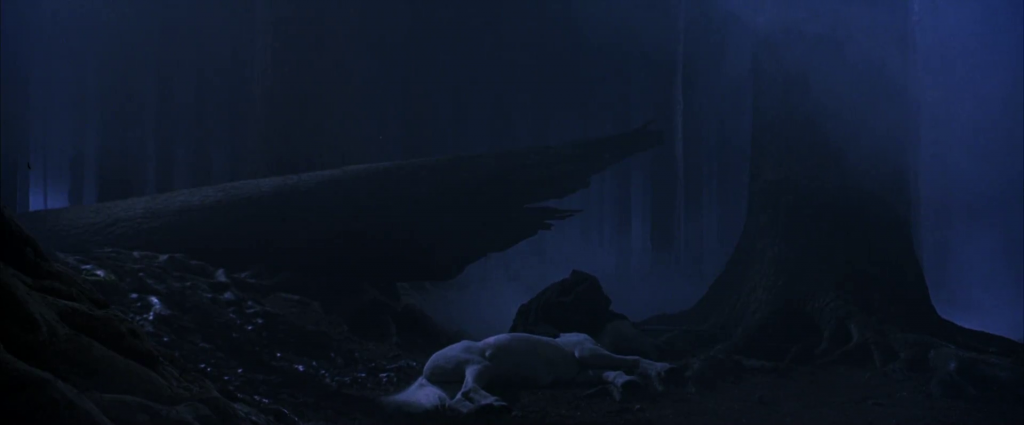
The first enemy that manifests in the novel would be Draco Malfoy, who Harry initially meets in Diagon Alley and his squad with Crabbe and Goyle. Harry also views Professor Snape as a villainous character, although in the end his name is cleared. In Chapter 15, where Harry and company venture out to the Forbidden Forest for detention, Voldemort is also confirmed to be alive, enforcing his role as the series’ main antagonist.
Chapter 16 makes full use of the allies that Harry made from the previous stage for the descent to the inmost cave or descent to the trapdoor underneath Fluffy. Neville even attempts to hinder their plan, yet is bound by Hermione’s spell.
The approach toward the final battle place is cleverly designed, as each trap in the dungeon requires specific talents, talents that the three protagonists excel at individually.
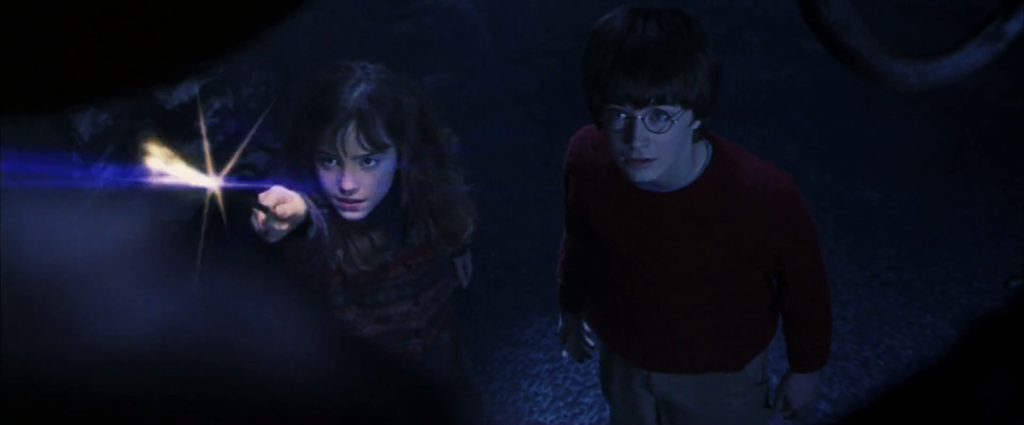
Hermione’s time with the books becomes well-spent after she realizes the proper spell to neutralize the Devil’s Snare. Harry’s Quidditch seeker skills come in handy as he catches a very specific flying key. Ron’s smugness at wizard chess is tested against a human-sized chessboard, where he even has to sacrifice himself. Lastly, Hermione’s intellect solves the logic puzzle with potions, but the final ordeal can only be faced by the main character himself.
Now proceeding to the last trial of the Philosopher’s Stone, Harry meets Professor Quirrell, previously a jumpy and nervous character, revealing his true nature. We get to meet a disembodied Voldemort, residing inside Quirrell’s body for support. Harry also sees the final trial, the Mirror of Erised.
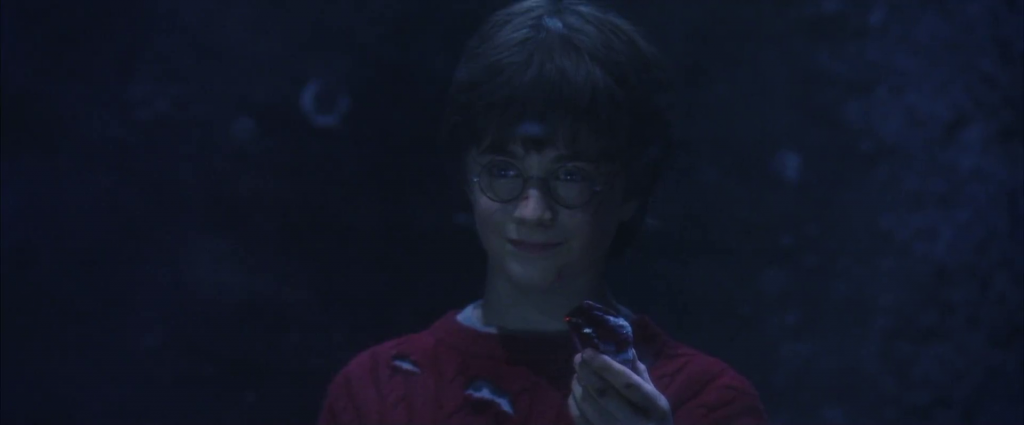
Realizing that Harry can decode the secret of the Mirror, Professor Quirrell urges him to reveal it to him. However, when Harry lies, Quirrell (and by extension, Voldemort) attacks him. With a little bit of mum’s magic, Harry successfully defeats Professor Quirrell and Voldemort (by smothering said mum’s magic all over them).
This stage is effectively weaved in the Ordeal stage, where it was revealed to Harry by the Mirror of Erised that he has the Philosopher’s Stone. Later on, when Harry gains consciousness after the fight, Professor Dumbledore reveals to him the enchantment tied to the Stone and the Mirror: only those searching but not intending to use the Stone gets it.
Third Act: Return
The third act is very short in the novel; it comprises less than a chapter and does not even have one of the stages in this act.
This stage is completely skipped, as the story jumps right into the hospital wing after the fight in the dungeon.
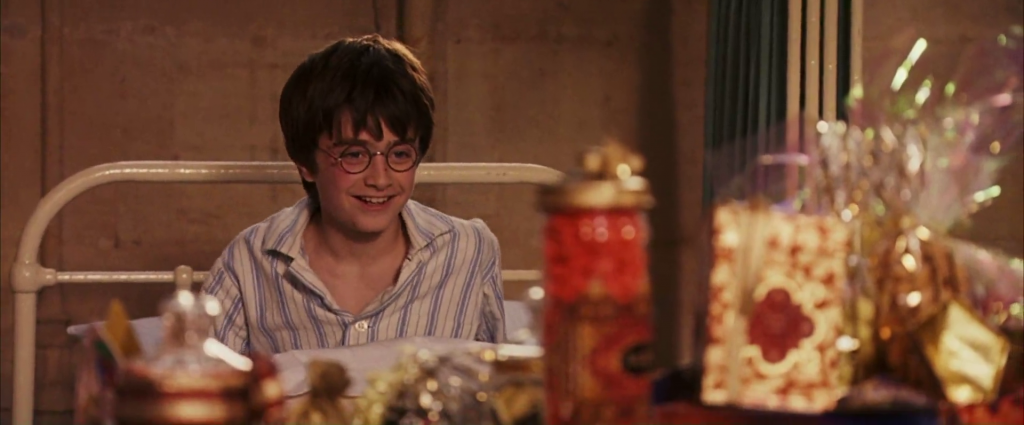
Although Harry does not die and get reborn, the end of the Ordeal and his eventual awakening in the hospital wing can serve as a symbolic resurrection.
In this stage, Harry’s ‘Elixirs’ are physical and intangible. Harry (and the Gryffindor House) wins the House Cup and gains a photo album containing images of his parents.
Dumbledore also explains the protection that Harry’s mother granted to him upon her death. Finally, Harry gets the assurance that despite being the boy who lived in the cupboard under the stairs, he is destined for something far greater.
(A goofy bonus: Harry gets to mess around with the Dursleys, specifically Dudley, using magic.)
Harry’s Hero’s Journey
The Hero’s Journey is an amazing framework to write stories of unknown characters pushing through the mud to gain heroic recognition. We can see that successful stories, like Harry Potter and the Philosopher’s Stone , follow the general narrative pattern well, and we can attribute the beauty of such stories to this pattern.
Of course, if you also want to write a hero’s story with the Hero’s Journey, LivingWriter’s got you! With a fitting template to get you started on the Hero’s Journey and a slew of features for authors, LivingWriter has got everything you’ll need to write a fantastic hero’s journey.
Try LivingWriter now!
Leave a Reply Cancel reply
Your email address will not be published. Required fields are marked *
Save my name, email, and website in this browser for the next time I comment.
- Writing Tips
- Travel Writing
- Try LivingWriter
Harry Potter Hero’s Journey Explained
- Post author By Punit Thakkar
- Post date March 14, 2024
Arguably the most popular cultural phenomenon in the modern literary and film world, Harry Potter, written by J.K. Rowling, is a masterclass in classical storytelling. In this post, we will examine the story using the 12 Steps of the Hero’s Journey framework.
1. Ordinary World
In Harry Potter and the Philosopher’s Stone, Harry lives with the Dursleys, unaware of his magical heritage.
Movie Adaptation : The film showcases Harry’s mundane life with the Dursleys, establishing his outsider status and the oppressive environment he endures.
2. Call to Adventure
Harry receives his Hogwarts acceptance letter, signaling his entry into the world of magic and his destiny as a wizard.
Movie Adaptation : The scene where Hagrid delivers Harry’s letter serves as a pivotal moment, igniting Harry’s curiosity and setting him on the path to Hogwarts.
3. Refusal of the Call
Harry initially questions his abilities and doubts the truth of his magical heritage, resisting the idea of leaving the Dursleys.
Movie Adaptation : Harry expresses reluctance to accept his identity as a wizard, fearing the unknown and the implications it holds for his future.
4. Meeting the Mentor
Harry meets Professor Dumbledore, who becomes his mentor and guide throughout his time at Hogwarts.
Movie Adaptation : Dumbledore imparts wisdom and guidance to Harry, nurturing his growth and offering support during moments of doubt and uncertainty.
5. Crossing the Threshold
Harry boards the Hogwarts Express and enters the magical world, leaving behind his life with the Dursleys.
Movie Adaptation : The scene where Harry enters Diagon Alley and experiences the wonders of the wizarding world for the first time serves as a visual representation of this step.
6. Tests, Allies, Enemies
Throughout his years at Hogwarts, Harry faces numerous tests, forms alliances with Ron and Hermione, and confronts enemies like Draco Malfoy and Voldemort.
Movie Adaptation : Each installment introduces new challenges, friendships, and adversaries, deepening Harry’s understanding of the magical world and his place within it.
7. Approach to the Inmost Cave
Harry and his friends confront Voldemort and his followers, preparing for the ultimate showdown between good and evil.
Movie Adaptation : The climax of each book/movie builds tension as Harry and his allies prepare to confront Voldemort, culminating in the final battle for Hogwarts.
Harry faces his greatest challenge, confronting Voldemort and risking his life to protect those he loves.
Movie Adaptation : The climactic battles between Harry and Voldemort are high-stakes encounters that test Harry’s courage, resilience, and resolve to overcome evil.
Harry emerges victorious, defeating Voldemort and bringing peace to the wizarding world. He receives recognition and finds closure for the struggles he has endured.
Movie Adaptation : The resolution of each installment offers closure and celebrates Harry’s triumphs, reinforcing themes of courage, friendship, and the power of love.
10. The Road Back
Harry returns to Hogwarts to complete his education and confront the aftermath of the battle against Voldemort.
Movie Adaptation : The epilogue of Harry Potter and the Deathly Hallows provides a glimpse into Harry’s future, as he embarks on a new chapter of his life with his friends and loved ones.
11. Resurrection
Harry confronts the remnants of Voldemort’s dark legacy and works to rebuild society in the aftermath of war.
Movie Adaptation : Harry’s efforts to reconcile with the past and forge a path toward healing demonstrate his resilience and determination to create a better future for the wizarding world.
12. Return with the Elixir
Harry returns to his Ordinary World with wisdom, growth, and a renewed sense of hope for the future.
Movie Adaptation : The series concludes with Harry passing on the lessons he has learned to the next generation, ensuring that his legacy lives on in the hearts of future witches and wizards.
Related: Use Hero’s Journey and create custom templates for your screenplay
How Harry Potter Uses Hero’s Journey
Archetypal characters.
In addition to Harry as the hero, the series features a wide array of archetypal characters, including the mentor (Dumbledore), the trickster (Fred and George Weasley), the threshold guardian (Argus Filch), and the shape-shifter (Sirius Black).
These characters fulfill specific roles within the hero’s journey structure, providing guidance, obstacles, and allies to aid Harry on his quest.
Mythological Influences
J.K. Rowling drew inspiration from various mythological and literary sources in crafting the Harry Potter series. Elements of Celtic mythology, Arthurian legend, and classical Greek mythology can be found woven throughout the narrative.
The hero’s journey itself is a universal narrative archetype that transcends cultures and time periods, reflecting fundamental truths about the human experience.
Subversion of Tropes
While the Harry Potter series adheres to many conventions of the hero’s journey, it also subverts expectations and challenges traditional tropes. For example, Harry’s journey is not a solitary one; he relies on the support of his friends and allies to overcome obstacles.
Additionally, characters like Severus Snape and Draco Malfoy undergo complex arcs that defy simple categorization as purely heroic or villainous.
Personal Growth and Inner Conflict
One of the hallmarks of the hero’s journey is the protagonist’s journey of personal growth and self-discovery. Throughout the series, Harry grapples with issues of identity, belonging, and the weight of his destiny.
Harry’s internal struggles and moral dilemmas add depth to his character, showcasing the psychological complexity inherent in the hero’s journey.
Recurring Motifs and Symbols
Rowling employs recurring motifs and symbols throughout the series, such as the Deathly Hallows, the lightning bolt scar on Harry’s forehead, and the significance of certain magical creatures like the phoenix and the basilisk.
These symbols serve as thematic anchors, reinforcing key themes and providing layers of meaning for readers and viewers to interpret.
Cyclical Nature of the Journey
The hero’s journey is inherently cyclical, with the protagonist undergoing multiple iterations of the journey as they face new challenges and obstacles. In the Harry Potter series, each book/movie follows a similar narrative structure, with Harry embarking on a new quest each year at Hogwarts.
However, each iteration of the journey builds upon the previous ones, leading to greater complexity and depth in Harry’s character development and the overarching plot.
Read: Shrek Hero’s Journey Analysis
- Tags harry potter analysis , harry potter heros journey , harry potter story , harry potter themes , heros journey 12 steps

- Department of Mysteries / The Quibbler
Harry Potter and the Hero’s Journey
by MuggleNet · Published March 6, 2012 · Updated March 7, 2023
Abstract: Does “Harry Potter” follow the basic outline of epic poetry?
We’ve all heard of the epic poems of the Odyssey and Beowulf . These poems follow a specific outline – this is called the “Hero’s Journey.” The Hero’s Journey has three big divisions – Separation, Initiation, and Return. The question is, how does this relate to Harry Potter?
We’ll begin with Separation. It has three subcategories – Call to Adventure, Refusal of the Call, and Crossing the First Threshold. The Call to Adventure is when the protagonist sort of awakens from the world of drudgery and desolation to pursue something more. In the case of Harry Potter , this is when Hagrid arrives at the hut on the rock in the first book and tells Harry that he is a wizard. The Refusal of the Call is when the hero has self-doubt. Again, in Harry Potter and The Sorcerer’s Stone , pg. 58 (U.S. Version): “‘Hagrid,’ he [Harry] said quietly, ‘I think you must have made a mistake. I don’t think I can be a wizard.'” The last sub-division is crossing the first threshold. This is when the hero discovers what they can do. There is a sense of danger, and usually a guardian. In the Greek myths, it would be some sort of monster, including Cerebus, the three-headed dog. Coincidentally; Harry’s first threshold is the forbidden corridor on the third floor in Sorcerer’s Stone , and the first guardian is Fluffy. He encounters Voldemort for the first time and discovers how strong he really is. Of course, his bravery and skill will continue to be tested throughout the series.
The second part of the Hero’s Journey is Initiation. It has five sub-divisions – The Road of Trials, Atonement with the Father, Apotheosis, and the Ultimate Boon. The Road of Trials has tasks that prepare the hero to pursue an ultimate goal. In the Harry Potter series, this stage basically comprises books two through four. In Chamber of Secrets , Harry has to face Tom Riddle and destroy one of Voldemort’s seven Horcruxes (though he doesn’t know about them yet.) In Prisoner of Azkaban , he has to test his magic skills by saving himself and Sirius from dementors by producing a full-fledged Patronus. In Goblet of Fire , he is selected as the fourth champion of the Triwizard Tournament, in which he has to fight a dragon, save Ron from the underwater world of the mermaids, run through a maze of creatures and spells, and duel Voldemort. While dueling Voldemort, Voldemort’s wand rebounded and showed the last people Voldemort had killed – including Harry’s parents. This could be considered Atonement with the Father. In Greek myths, the parental figure is responsible for guiding the hero through the journey, though usually, this character is the father. However, in the graveyard, Lily is the one who says “‘When the connection is broken, we will linger for only moments… but we will give you time… you must get to the portkey, it will return you to Hogwarts… Do you understand Harry?'” pg. 667 (GoF U.S. Version). She is helping him escape from Voldemort, most likely saving his life. After Harry returns to Hogwarts, he is deemed the Triwizard Tournament winner and gets a few hundred Galleons as prize money. This is one of the Ultimate Boons (the benefit, favor, or blessing that is bestowed on the hero.) that Harry receives. In Harry’s fifth year, he realizes his skill and courage when he flies to the Ministry to save Sirius and ends up facing Voldemort yet again, as well as Death Eaters, then learns of the prophecy from Dumbledore. This is Apotheosis, or the hero’s epiphany – in other words – when they realize that they have skill. He gets his second Ultimate Boon in Harry Potter and the Half-Blood Prince when he gets his O.W.L.s and sees that he can still be an Auror.
The final part of the Hero’s Journey is Return. It has five sub-divisions – Refusal of the Return, the Magical Flight, Crossing the Return Threshold, Master of Two Worlds, and Freedom to Live. Every June, Harry has to return to number 4, Privet Drive even though he hates it, because he becomes isolated from the wizarding world. This is the Refusal of the Return. In Deathly Hallows , he is escorted from his home to the Burrow, thereby breaking the curse that protects him. This is the Magical Flight, where the hero is commissioned to return to the world to fix it, and the protector, or in our case, the protectors, may support him on a return journey. There are obviously challenges, either in the arrival or the departure. In Deathly Hallows , the challenge is in the departure, when they are attacked by Death Eaters. Harry, Ron, and Hermione then go on an adventure to find the remaining Horcruxes but have to return to Hogwarts to find the last ones. This is Crossing the Return Threshold – he has to come full cycle and symbolically loses his life. However, in Deathly Hallows , Harry actually dies, but since he is the Master of Death, he can continue to live. The second to last stage, Master of Two Worlds, comes when Harry gets the Resurrection Stone and gains supreme knowledge of both the living world and the dead. The final stage, Freedom to Live, is achieved when the hero can pass freely between the two realms. For Harry – and this is achieved throughout the book series – this is the ability to blend in as a Muggle but continue to live in the wizarding world.
- Next story Harry Potter and the Macbeth Essay
- Previous story The Dumbledore-Severus Relationship, Was it Really Loyalty Between Them?
MuggleNet Archive
Important dates, sat, apr 27, sun, apr 28, mon, apr 29, tue, apr 30.
Tom the Inkeeper
Scorpius Malfoy

The Harry Potter Movies: A Hero’s Journey Guide
Step into the magical world of Hogwarts as we embark on an extraordinary adventure through “The Harry Potter Movies: A Hero’s Journey Guide.” From the first enchanting scene to the epic battles against dark forces, this guide will take you on a spellbinding journey through the beloved film series. Get ready to immerse yourself in the wizarding world as we explore the themes, characters, and captivating storylines that have captivated audiences worldwide.
Whether you’re a die-hard fan or a muggle who’s curious about the hype, this guide is your ticket to discovering the magic behind the movies. Join Harry, Hermione, and Ron as they navigate the challenges of friendship, love, and the ultimate battle between good and evil. Through this hero’s journey, we’ll delve into the depths of bravery, sacrifice, and the power of believing in oneself.
So grab your wand, hop on your broomstick, and get ready for an adventure like no other! From the moment you step foot into the wizarding world, you’ll be transported to a place where anything is possible. Let’s dive into the world of “The Harry Potter Movies: A Hero’s Journey Guide” and uncover the secrets that lie within. Accio popcorn! It’s time to begin our magical journey.
Table of Contents
Embark on a magical adventure with “The Harry Potter Movies: A Hero’s Journey Guide.” Explore the epic story of Harry Potter and his friends as they navigate through challenges, discover their true identities, and ultimately face the ultimate battle against the dark forces. This guide takes you on a journey through each film, highlighting the key moments, character development, and themes that make the series so captivating. Whether you’re a die-hard fan or new to the wizarding world, this guide is a must-read for all Harry Potter enthusiasts.

Harry Potter is a beloved book series that has captured the hearts of millions around the world. The magical world of Hogwarts and the adventures of Harry, Ron, and Hermione have become iconic. The success of the books led to the creation of a film series that brought the characters and their stories to life on the big screen. In this article, we will explore the Harry Potter movies and how they follow the hero’s journey narrative structure.
The Hero’s Journey in the Harry Potter Movies
The hero’s journey is a storytelling framework that has been used for centuries. It follows a hero as they embark on a transformative journey, facing challenges and overcoming obstacles along the way. The Harry Potter movies, like the books, follow this narrative structure, taking the audience on a magical adventure filled with danger, friendship, and self-discovery.
From the first film, “Harry Potter and the Philosopher’s Stone,” to the final installment, “Harry Potter and the Deathly Hallows – Part 2,” the movies trace Harry’s growth as a wizard and as a person. Each film represents a stage in his journey, from the call to adventure to the ultimate confrontation with the dark wizard Lord Voldemort.
The Call to Adventure: Harry Discovers He’s a Wizard
In the first movie, Harry receives his acceptance letter to Hogwarts School of Witchcraft and Wizardry, revealing his true identity as a wizard. This marks the beginning of his hero’s journey. He is thrust into a world of magic and mystery, leaving behind his mundane life with the Dursleys. Harry’s call to adventure sets him on a path of self-discovery and purpose.
As Harry enters the wizarding world, he encounters challenges and allies that will shape his journey. He forms strong friendships with Ron Weasley and Hermione Granger, who become his loyal companions throughout the series. Together, they navigate the trials and tribulations of Hogwarts, facing both external threats and internal conflicts.
The Road of Trials: Facing Challenges and Overcoming Obstacles
Throughout the Harry Potter movies, the trio faces numerous challenges and obstacles that test their courage, intelligence, and loyalty. From battling trolls and dragons to outsmarting dark wizards, Harry, Ron, and Hermione must rely on their skills and the power of friendship to overcome these trials.
One of the most significant trials they face is the Triwizard Tournament in “Harry Potter and the Goblet of Fire.” Harry is unexpectedly chosen as one of the champions, thrusting him into a dangerous competition against older and more experienced wizards. This trial pushes Harry to his limits and forces him to confront his fears.
The Ultimate Confrontation: Harry vs. Voldemort
The climax of the Harry Potter movies comes in the final battle between Harry and Lord Voldemort. This ultimate confrontation represents the culmination of Harry’s hero’s journey. Throughout the series, Harry learns about his connection to Voldemort and the prophecy that foretells their final showdown.
In “Harry Potter and the Deathly Hallows – Part 2,” Harry, Ron, and Hermione embark on a mission to find and destroy Voldemort’s Horcruxes, objects that contain pieces of his soul. This quest leads them to the Battle of Hogwarts, where Harry must face his greatest fear and confront Voldemort once and for all.
The Impact of the Harry Potter Movies
The Harry Potter movies have had a profound impact on popular culture. They not only brought J.K. Rowling’s magical world to life but also introduced a new generation of fans to the joy of reading. The films captured the essence of the books, enchanting audiences with their stunning visuals, memorable characters, and powerful storytelling.
Moreover, the Harry Potter movies showcased the importance of friendship, bravery, and standing up for what is right. They taught valuable life lessons and inspired countless individuals to embrace their own hero’s journey, confronting their fears and striving for greatness.
With their successful adaptation of the hero’s journey narrative structure, the Harry Potter movies have become timeless classics that continue to captivate audiences of all ages. Whether you’re a die-hard fan or a newcomer to the wizarding world, these films offer a magical experience that will transport you to a world filled with wonder and adventure.
Key Takeaways: The Harry Potter Movies: A Hero’s Journey Guide
- Harry Potter embarks on a magical adventure filled with friendship, bravery, and self-discovery.
- Each movie follows the structure of the hero’s journey, where Harry faces challenges and grows as a character.
- The movies showcase themes like love, loyalty, and the power of good versus evil.
- Through his journey, Harry learns valuable lessons about friendship, forgiveness, and the importance of standing up for what is right.
- The Harry Potter movies captivate audiences of all ages, offering a magical escape into a world of wonder and imagination.
Frequently Asked Questions
The Harry Potter Movies: A Hero’s Journey Guide is a comprehensive guide that explores the themes and elements of the popular Harry Potter film series. Here are some frequently asked questions about this guide:
1. What is the significance of the hero’s journey in the Harry Potter movies?
The hero’s journey is a storytelling framework that follows the adventures of a protagonist as they embark on a transformative quest. In the Harry Potter movies, this framework is used to depict the growth and development of Harry Potter as he navigates through the wizarding world. From his ordinary life at Privet Drive to his ultimate battle against Lord Voldemort, Harry goes through various stages of the hero’s journey, such as the call to adventure, facing trials and tribulations, and ultimately achieving victory.
By analyzing the hero’s journey in the Harry Potter movies, we can gain a deeper understanding of the character development, narrative structure, and overarching themes of the series. It allows us to appreciate the hero’s transformation and the lessons he learns along the way, making the movies even more captivating and meaningful.
2. How does the hero’s journey guide enhance the viewing experience of the Harry Potter movies?
The hero’s journey guide provides a framework that allows viewers to analyze and interpret the Harry Potter movies on a deeper level. By understanding the stages and archetypes of the hero’s journey, viewers can identify the key moments and themes in the movies, enriching their overall viewing experience.
For example, recognizing the call to adventure, the mentor figure, and the ultimate ordeal can help viewers appreciate the character arcs and narrative progression in the movies. It also helps viewers connect with the universal themes of courage, friendship, and self-discovery that are central to the hero’s journey. The guide acts as a companion that enhances the storytelling and allows viewers to engage with the movies in a more meaningful way.
3. Are there any specific examples of the hero’s journey in the Harry Potter movies?
Yes, the Harry Potter movies are filled with examples of the hero’s journey. One notable example is Harry’s acceptance of his role as the Chosen One in “Harry Potter and the Sorcerer’s Stone.” This marks the beginning of his journey as he enters the wizarding world and begins his training at Hogwarts School of Witchcraft and Wizardry.
Another example is Harry’s encounter with the mentor figure, Albus Dumbledore. Throughout the series, Dumbledore provides guidance, wisdom, and support to Harry, helping him navigate the challenges and temptations he faces. This mentor-student relationship is a crucial aspect of the hero’s journey and contributes to Harry’s growth as a character.
4. Can the hero’s journey guide be applied to other movies or stories?
Absolutely! The hero’s journey is a universal storytelling framework that can be applied to various movies, books, and stories. It is a template that resonates with audiences across different cultures and time periods, as it reflects the fundamental aspects of human experience and transformation.
Whether it’s Luke Skywalker in Star Wars, Frodo Baggins in The Lord of the Rings, or Dorothy in The Wizard of Oz, the hero’s journey can be found in countless narratives. By understanding this framework, we can recognize the similarities and patterns that exist in these stories and gain a deeper appreciation for the universal themes they explore.
5. How can the hero’s journey guide inspire aspiring writers and filmmakers?
The hero’s journey guide serves as an invaluable tool for aspiring writers and filmmakers. By studying the hero’s journey in successful movies like the Harry Potter series, they can learn about effective storytelling techniques, character development, and narrative structure.
Understanding the hero’s journey can help aspiring writers and filmmakers create compelling and relatable characters, craft engaging plots, and explore meaningful themes. It provides a roadmap for creating narratives that resonate with audiences and have a lasting impact. By applying the principles of the hero’s journey, aspiring creatives can enhance their storytelling skills and bring their own unique visions to life.
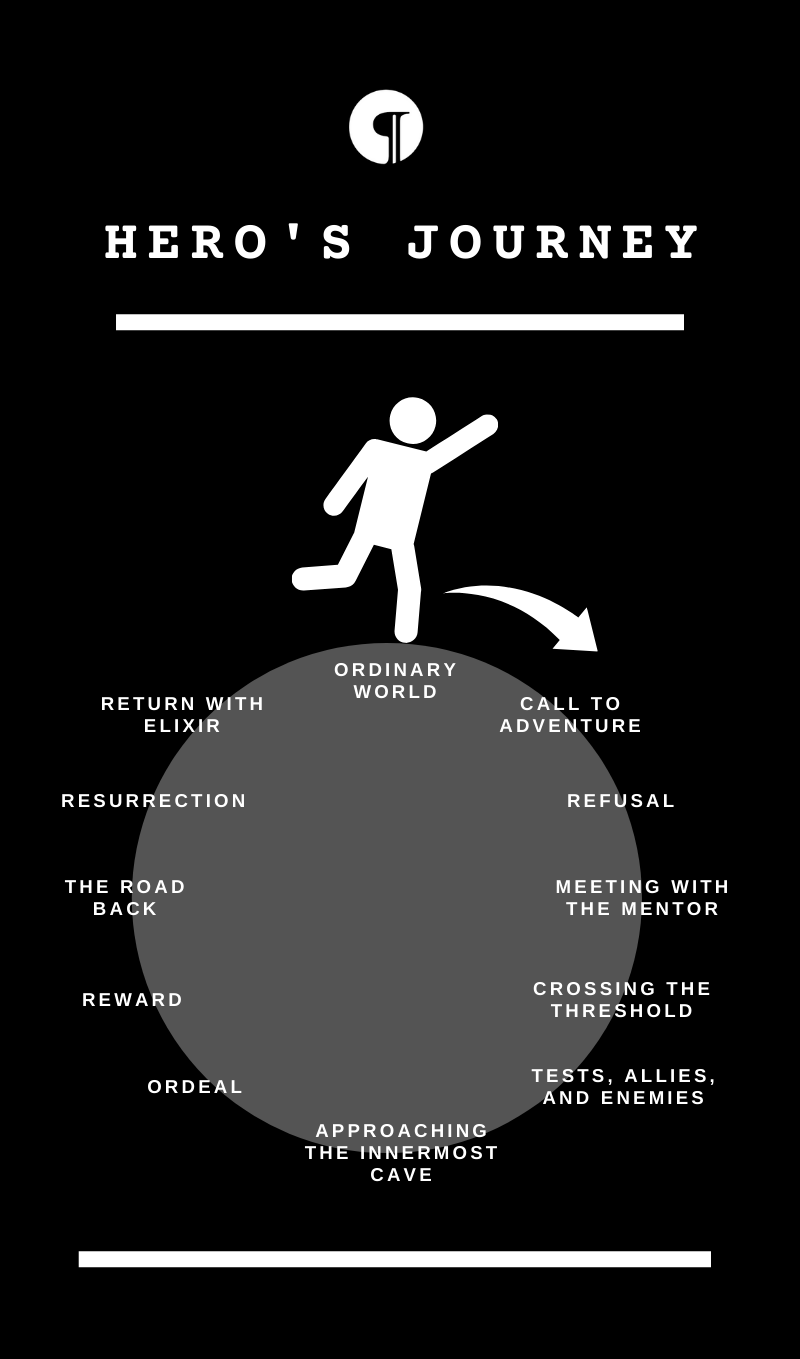
The Life of Harry Potter: The Hero’s Journey Explained (Video Essay / Theory Video)
Final Summary: The Harry Potter Movies – A Hero’s Journey Guide
Well, my magical friends, we’ve reached the end of our hero’s journey through the enchanting world of Harry Potter. From his humble beginnings in the cupboard under the stairs to his epic battles against the Dark Lord, Harry’s adventures have captivated us all. As we reflect on the series, it’s clear that the Harry Potter movies have not only entertained us but also provided us with valuable life lessons and a guide to embark on our own heroic quests.
Throughout this journey, we’ve witnessed Harry’s growth, resilience, and unwavering determination. We’ve learned about the importance of friendship, loyalty, and standing up for what is right. The Harry Potter movies have taken us on a rollercoaster ride of emotions, from laughter to tears, and have reminded us of the power of love and the strength that lies within us.
So, as we bid farewell to Hogwarts and our favorite characters, let’s carry the lessons we’ve learned with us. Let’s embrace our own hero’s journey, facing challenges head-on, and never losing sight of our true selves. Just like Harry, we have the power to overcome obstacles, make a difference in the world, and create our own magic. As we move forward, may the spirit of Harry Potter continue to inspire us and remind us that the hero’s journey is not just a fictional tale, but a blueprint for our own extraordinary lives.
Remember, my fellow wizards and witches, the magic lives on within each of us. It’s time to spread our wings and embark on our own adventures, knowing that the Harry Potter movies have given us the tools to navigate the challenges that lie ahead. So, grab your wands, hold your heads high, and let’s make our hero’s journey a legendary one. Accio, success!
Similar Posts
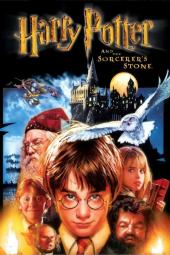
Harry Potter Movies: The Perfect Family Guide
Welcome to the magical world of Harry Potter movies! Whether you’re a die-hard fan or just starting your journey, these films have something for everyone in the family. From thrilling…
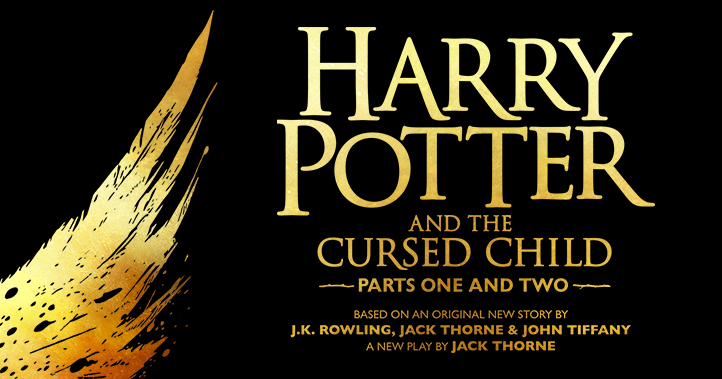
Can I Watch The Harry Potter Movies With Audio Description For The Visually Impaired?
If you’re a fan of the Harry Potter movies and have been wondering, “Can I watch the Harry Potter movies with audio description for the visually impaired?” then I’ve got…
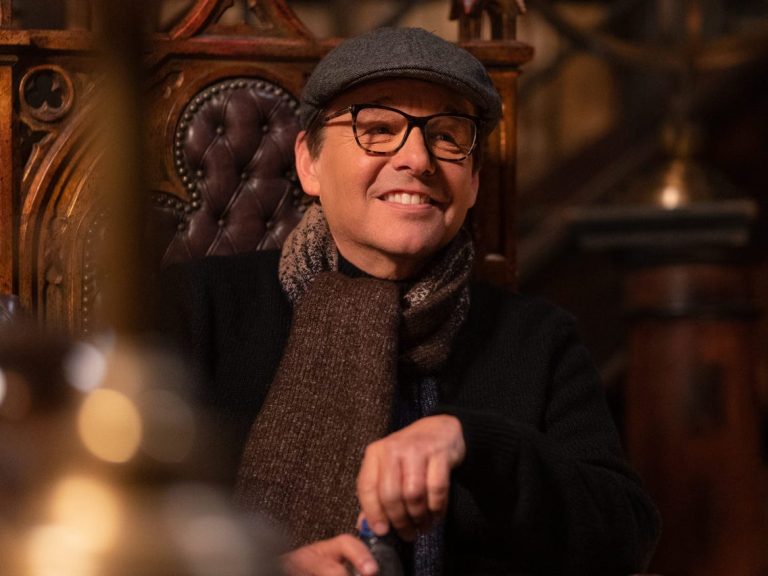
Who Directed The Harry Potter Movies?
If you’ve ever found yourself lost in the magical world of Harry Potter, then you’ve probably wondered, “Who directed the Harry Potter movies?” Well, my friend, you’re in luck because…
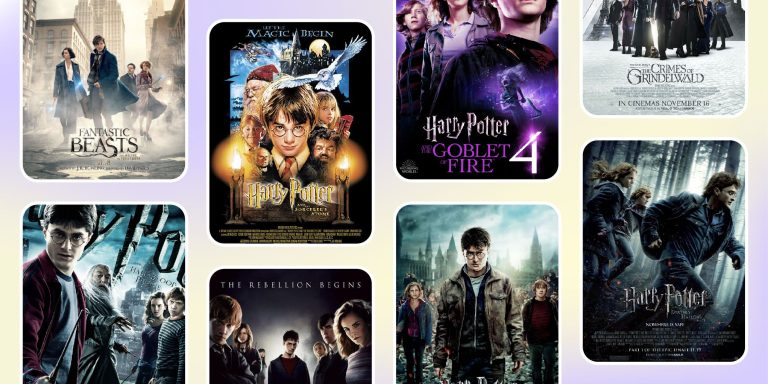
Can I Watch The Harry Potter Movies In Chronological Order?
So, you’re a Harry Potter fan and you’re wondering if you can watch the movies in chronological order? Well, you’re in luck because I’ve got all the answers for you!…
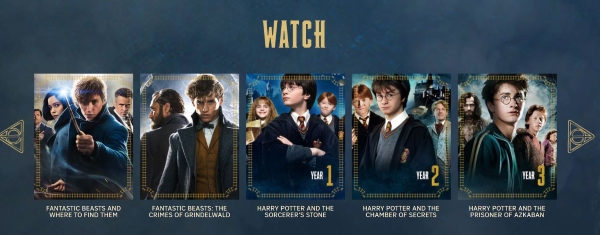
Where Can I Watch The Harry Potter Movies Online?
If you’re a Harry Potter fan, you’re probably itching to immerse yourself in the magical world of Hogwarts once again. And what better way to do that than by watching…
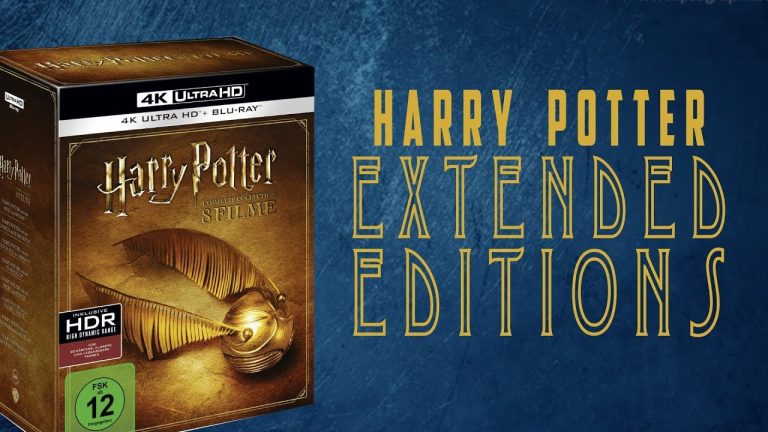
Are There Any Extended Editions Of The Harry Potter Movies?
Ah, the magical world of Harry Potter! If you’re a die-hard fan like me, you’ve probably watched the movies countless times and immersed yourself in the enchanting stories. But here’s…
Leave a Reply Cancel reply
Your email address will not be published. Required fields are marked *
Save my name, email, and website in this browser for the next time I comment.
Literary Myth Form's and the Harry Potter Saga
"the hero's journey", stories you remember for all time.
There are stories that you enjoy for a while, and then STORIES that you remember for your whole life. What is the difference? I remember Dorothy and the Wizard, Star Wars (the "first" three), Lord of the Rings (the books) and the Chronicles of Narnia (the books) from my youth. You can remember Harry Potter, the Lion King, Star Wars (the "second" three), Lord of the Rings (the movies) and the Chronicles of Narnia (the movie), from yours. My mom and dad can remember all those, plus Anne of Green Gables, Hardy Boys, Zane Gray, King Authur and the like. But, we've all read and watched hundreds, even thousands, of other stories and can hardly remember them. Why is this so? What makes the stories of Arthur, Aslan, Luke, Frodo and Harry so intensly memorable, that they seem to come back for several generations in several forms?
In addition, we, in this century, are not alone in having MOST MEMORABLE stories. In times past, there were Hercules, Appolo and Zeus. Also Romulus and Remus, Gulliver, Odysseus and Achilles - all of whom we've learned about in school. You know, sometimes, after we've heard a story, we almost CAN'T FORGET it, even if we tried. Even if the story is so old that no one can verify whether or not it was true, it is still remembered. There is just "something" about it which sort of "rings true" and makes it memorable. Why is that? Because it is OUR Story! All of us! Our own lives follow the same pattern.
An American professor, Joseph John Campbell (March 26, 1904 – October 31, 1987) wondered the same thing and spent his career trying to answer the question. He collected and read nearly every story and myth that he could find. Then he synthesized his life long study of world mythology into a book: "The Hero with a Thousand Faces (1949) . In it, he described that the reason some stories are unforgettable is because they sort of 'ring true' to us. They fit into our own, or others we know, 'lifes journey' pattern.
He called the type of story: "The Hero's Journey." In it, at least the initial pattern is a journeying story, moving from one identity into another - such as from childhood into adulthood. The "traveler" recieves a "calling" into a journey and does not expect to become a "hero." In it he is drawn into a struggle between good and evil where he must make a choice about which side he will follow. Examples of literature in this myth form include: Frodo in Lord of the Rings, Luke and Anakin in Star Wars, Dorothy in Wizard of Oz, Arthur in the Legend of King Arthur, Simba in Disney's The Lion King and, of course, Harry in the Harry Potter books.
Campbell describes that the Hero: starts out as a simple, slightly insecure character (Dorothy, Harry, Frodo, Arthur, Simba) and truly could be called "Everyman" meaning "all of us." In the journey there is always the possibility of rejecting the call; but, if chosen, the path leads toward a "threshold crossing" in which there is no doubt that life is different and will never be the same. The moment when the hero is profoundly aware that they are "not in Kansas" anymore.
There are then tasks to prove the "hero's" worth and in which valuable knowledge and insight is gained prepatory to a "significant battle" of emense importance. There may be a struggle between father and son (as the dead father in Hamlet, or Zeus coming to power). In the story there will be a serious battle and serious wounding ; and throughout the rest of the journey the effect of that wounding will shape the actions of the hero. The real injuries of life add up as we go along; because, they are the genesis of character. Our struggles and 'overcomings' are what makes us human, and an adult, and in a way wise.
In the 'Hero's Journey' there is a mentor who gives spiritual and philosophical guidance to the hero. This person often possesses almost magical powers that reflect a lifetime of study, discipline and aquired wisdom. He often reveals to the hero his purpose or origins. In moments of absolute disconnection and loss and confusion and fear these mentors arrive to give purpose and confidence. [Odysseus began his journey by being concerned for his son's (Telemachus) welfare, so he sought and older friend named "mentor" to look in on him.]
Usually the mentor has another function, early in the journey, to present the hero with a "special gift" which will be useful in the hero's battles to come. In our personal experience, a mentor gives us a gift of an idea, wisdom, or of some discernment. Being able to make those distinctions allows the hero to move forward in the story.
During the hero's journey the mentor dies or is lost . Losses in lifes long journey are great. The first reaction is that "I can't make it without his help." But it is crucial that his help not stay with the hero, or we would never know that the hero has, in fact, taken in the teachings. The mentor is now "within".
In the fight against evil the hero needs more than a mentor and courage. They rely on the help and the friendship of companions . (Dorothy: tin man and scarecrow; frodo: the fellowship; Luke: Han and Lea; Harry: Ron, Hermione and others). The Hero's journey is still done in groups of one or more faithful followers, so he must play well in groups.
There are several "standard" personality types for companions. These are called Archetypes, and are: the "Damsel in distress" (helpless, deserves attention and efforts at rescuing); the "mercinary pirate" (out for himself, outsider, self reliant, but good at heart, must learn to commit himself to a cause outside himself); the "parasite" (a tag along person, who is usually comic); and, the "childlike innocent" (jar jar?)
The hero becomes himself by being tested by various monsters, a sort of "journey into the belly of the whale." Going into the deepest part of oneself. Overcoming doubt about oneself, overcoming our worst fears, and confronting mistakes. A hero must fight demons that come from within his own heart.
Each hero has a villan . Confronting the villan and all he represents is the critical part of the hero's journey. Evil may be seductive, and there may even be an evil mentor who is: seductive and promising. The fundamental greek tragedy is a man who sells his soul to the devil in order to achieve a purpose but results in his own destruction. The price of evil becomes apparant. The Wagnerian Nemesis is: the notion that you are going to be the victim of the things that you sow.
Campbell's insight was that important myths from around the world, having survived for thousands of years, all share this fundamental structure. So, after he published his book, it is not suprising that authors, story-tellers and film-makers all have deliberately used the pattern in their own works. Christopher Vogler , a Hollywood screenwriter, was highly influenced by Campbell. He created a 7-page company memo based on Campbell's work, A Practical Guide to The Hero With a Thousand Faces , which led to the development of Disney's 1994 film The Lion King. Vogler's memo was later developed into the late 1990s book The Writer's Journey: Mythic Structure For Writers , which became the basis for a number of successful Hollywood films and is believed to have been used in the development of the Matrix series.
The Hero's Journey in a nutshell
So, Christopher Vogler said the Hero's Journey can be boiled down like this:
- A hero must start off in an 'ordinary' world, where the stage is set and character relationships are established. Before long the hero will be separated from this world, when he receives a Call to Adventure. But, although he may be eager to accept the quest, at this stage he'll have lingering doubts or fears that need overcoming. So his first, quick response may be a Refusal of the Call.
- Our hero's doubts and fears will be dispelled when he meets a mentor figure, who will give him something he needs, maybe an item and/or advice, so he can progress on his quest. The mentor doesn't have to be old, and may not even be personified, but the role will be there somewhere in the story.
- Armed with the mentor's help, the hero will begin his descent into the world of the unknown by Crossing the Threshold. He may go willingly, or he may be pushed. This often happens symbolically rather than physically - how many stories see the hero 'falling' in love?
- Once he's immersed in the special world of the story, the hero will meet both allies and enemies and will have to undergo a series of tests, culminating in an Ordeal and a consequent (usually metaphorical) death and rebirth.
- Emerging from this the hero begins the Road Back, completing the mythic cycle. After confronting death during the ordeal he will have gotten some kind of reward, which will equip him with the will to finish. He must now face a final showdown and at the moment of climax he will experience a Resurrection, bringing with it an element of sacrifice and ultimately a resolution to the story. At the end he will have returned to the ordinary world with an elixir, which he can share with all the people who have benefited from his heroic escapade. He will have been transformed by the journey, and his new understanding will radiate out, affecting everyone.
There are different ways in which the cycle is completed, and this will reflect the style of storytelling. Often European authors of stories will end their works with rough endings and many loose ends and questions. This sort of follows Aristotle's theory in that just signifying an important change has occurred is enough of an ending. In contrast, Hollywood is more eager to produce scripts with reassuring (happy!) endings, and also tends to tie up any loose ends and unanswered questions [except, of course, for the questions that leave an opening for a sequel.]
Harry's "Hero's Journey"
The boy Harry Potter nonchalantly strolled onto J. K. Rowling's mind, fully formed, one day during a long train ride — a handsome orphan, with a scar, who didn't know he was a wizard until he recieved a letter of entrance from a wizarding school. Harry had a job to do, which was more fully discovered in the few moments of solitude that a single-mother author could manage to snatch up in order to think of such things. Each book has its own adventure and "journey" in and of itself. But, each is but a mere portion of a "greater journey" which has finally been disclosed.
[To be continued]
Joseph Campbell: The Hero's Journey
Campbell describes some seventeen stages along this journey. Most stories do NOT contain all 17 stages, some contain only a few; and others may put the stages in a different order.
The adventure begins with the hero receiving a call to action, or he may simply fall or blunder into it. The call may be announced by a "herald," often represented as dark, terrifying or evil, and possibly merely by the crisis of his appearance.
Sometimes the hero initially refuses the call to adventure. When this happens, the hero may suffer, might eventually choose to go, but might continue to refuse.
On the journey he encounters a protective figure (often elderly) who provides special tools and advice for the adventure ahead, such as an amulet or a weapon.
A threshold must be crossed between the familiar world and that which he is not. This might involve facing a "threshold guardian," in order to enter the new zone of experience.
The new zone might be entered by means of a "rebirth" of some sort, which seems to transform and ready for the adventure ahead.
In the unfamiliar world the hero must survive a succession of obstacles and, in so doing, amplify his consciousness. The hero is helped covertly by a supernatural helper or may discover a benign power supporting him in his journey.
Sometimes the ultimate trial is represented as a marriage between the hero and a queen or mother-like figure (or king/father-like). This represents the hero's mastery of life (represented by the feminine) as well as the totality of what can be known.
Other times, when awareness expands, the hero may fixate on how "mortal eyes" don't always see the truth; and can involve a female figure.
Or, the hero might finally reconcile the tyrant and merciful aspects of a father-like authority figure in order to understand both himself and the figure better.
Usually the hero must put aside his "ego" and experience a "breakthrough" expansion of understanding. His idea of reality may change, and he may find a new ability and see a larger point of view, allowing the hero to sacrifice himself.
The hero will then be ready to obtain his goal, an item or new awareness that, will benefit the society that he has left.
Having found contentment in the new world, the hero may not want to return to the ordinary world and bestow the boon onto his fellow man.
When the boon's acquirement (or the hero's return to the world) comes against opposition, a chase or pursuit may ensue before the hero returns.
The hero may need to be rescued by forces from the ordinary world. This may be because the hero has refused to return or because he is successfully blocked from returning with the boon. The hero loses his ego.
The hero returns to the world of common day and must accept it as real.
Because of the boon or due to his experience, the hero may now perceive both the divine and human worlds.
The hero bestows the boon to his fellow man.
---------------
Harry Potter, its characters and insignia are Copyright © by and Trademarks (TM) of JK Rowling and other entities. This site and it's content is Copyright © by Corporate Medical Consulting, LLC.
Breaking Down the Character Archetypes of the Hero’s Journey
You’ve read about George Lucas’s use of Joseph Campbell’s Monomyth found in his 1949 book, A Hero with a Thousand Faces , which is a common narrative pattern found in many stories from many different cultures worldwide. This narrative journey typically involves several character archetypes that affect the hero’s journey from beginning to end.
After the successful debut of Star Wars and Lucas’s discussions on using Campbell’s work as inspiration for his space opera, many producers, development executives, filmmakers, and screenwriters have explored the Monomyth with deeper and simplified approaches.
Christopher Vogler's Interpretation of the Hero's Journey
When Christopher Vogler, a development executive and screenwriter at Disney, was inspired by Joseph Campbell's concept of the story monomyth, he crafted a seven-page memo for Disney's development team and incoming screenwriters.
This memo, A Practical Guide to Joseph Cambell’s The Hero with a Thousand Faces , laid the groundwork for what would later become Vogler's 1992 book, The Writer's Journey: Mythic Structure for Storytellers and Screenwriters . In this book, Vogler expanded upon Campbell’s ideas.
He adapted Campbell's mythical story structure into twelve distinct stages (from Campbell’s initial seventeen). Our concise interpretations of these stages include:
- The Ordinary World : We see the hero's normal life at the start of the story before the adventure begins.
- Call to Adventure : The hero faces an event, conflict, problem, or challenge that makes them begin their adventure.
- Refusal of the Call : The hero initially refuses the adventure because of hesitation, fear, insecurity, or any other issues.
- Meeting the Mentor : The hero encounters a mentor who can give them advice, wisdom, information, or items that ready them for the journey ahead.
- Crossing the Threshold : The hero leaves their ordinary world for the first time and crosses the threshold into adventure.
- Tests, Allies, and Enemies : The hero learns the rules of the new world and endures tests, meets friends, and comes face-to-face with enemies.
- The Approach : The initial plan to take on the central conflict begins, but setbacks cause the hero to try a new approach or adopt new ideas.
- The Ordeal : Things go wrong, and added conflict is introduced . The hero experiences more difficult hurdles and obstacles, some of which may lead to a life crisis.
- The Reward : After surviving The Ordeal, the hero seizes the sword — a reward that they've earned that allows them to take on the biggest conflict. It may be a physical item or piece of knowledge or wisdom that will help them persevere.
- The Road Back : The hero sees the light at the end of the tunnel, but they are about to face even more tests and challenges.
- The Resurrection : The climax. The hero faces a final test, using everything they have learned to take on the conflict once and for all.
- The Return : The hero brings their knowledge or the " elixir " back to the ordinary world.
Within these stages are character archetypes that help to shape the hero’s journey, and their eventual character arc throughout the story.
Read More: Exploring the Twelve Stages of the Hero’s Journey
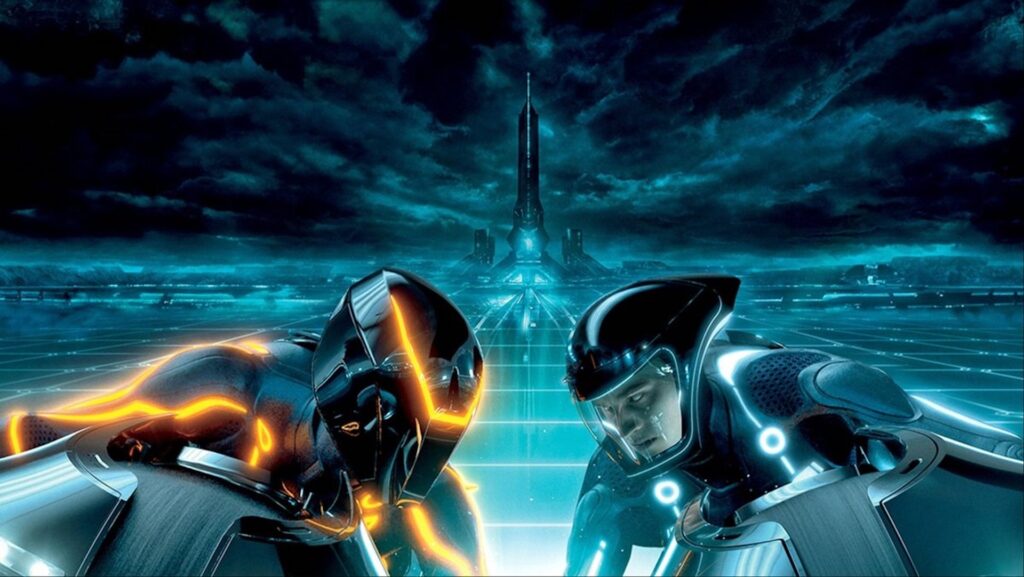
'Tron: Legacy' (2010)
What Are Character Archetypes?
A character archetype is a common recurring representation of a character that embodies a set of universal and recognizable traits or characteristics. These archetypes are seen throughout literature, film, and other storytelling mediums—and they resonate with audiences because they are based on common human experiences or cultural norms.
Archetypes work well because they are instantly recognizable to readers and audiences. For writers, character archetypes can be adapted and molded with ease during character development.
Character archetypes are not specific characters in a story but rather broad categories or templates that individual characters can be based on or inspired by. They represent typical roles characters play in the narrative, and their actions and motivations are often predictable based on the archetype they represent.
However, writers can also choose to subvert those expectations to create a more dynamic character , as well as introduce much-needed twists and turns within the story.
Read More: 10 Character Archetypes in Comedies
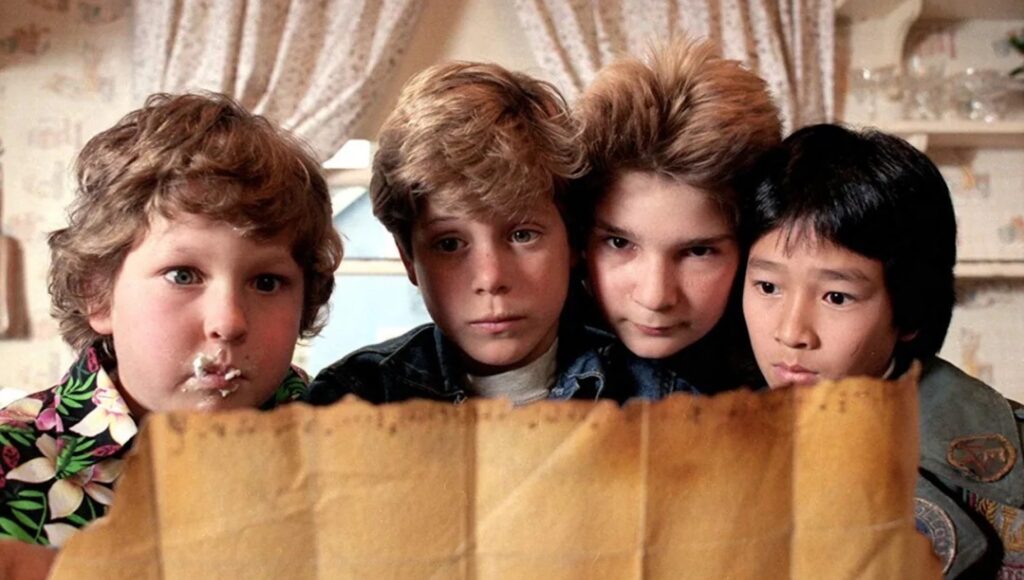
'The Goonies' (1950)
The benefits of using character archetypes include:
- Universality : Archetypes are universally understood and have similar meanings across cultures and historical contexts. This can especially help in the cinematic realm as movies are released in multiple countries and languages.
- Symbolism : These character traits can symbolize a particular aspect of human experience or life. Once again, symbolism is identifiable across many cultures.
- Predictability : Because they are based on common patterns, their behaviors and roles in stories can often be anticipated . Because of that anticipation, writers can choose between subverting those expectations or using the predictability of the archetypes to service the story and protagonist with ease.
- Variability : While archetypes are typical patterns, they allow for variations and depth, meaning a single archetype can manifest in different ways across various stories, allowing writers can adapt these traits to any character.
Character archetypes can be used as tools to tell a compelling and universal story.
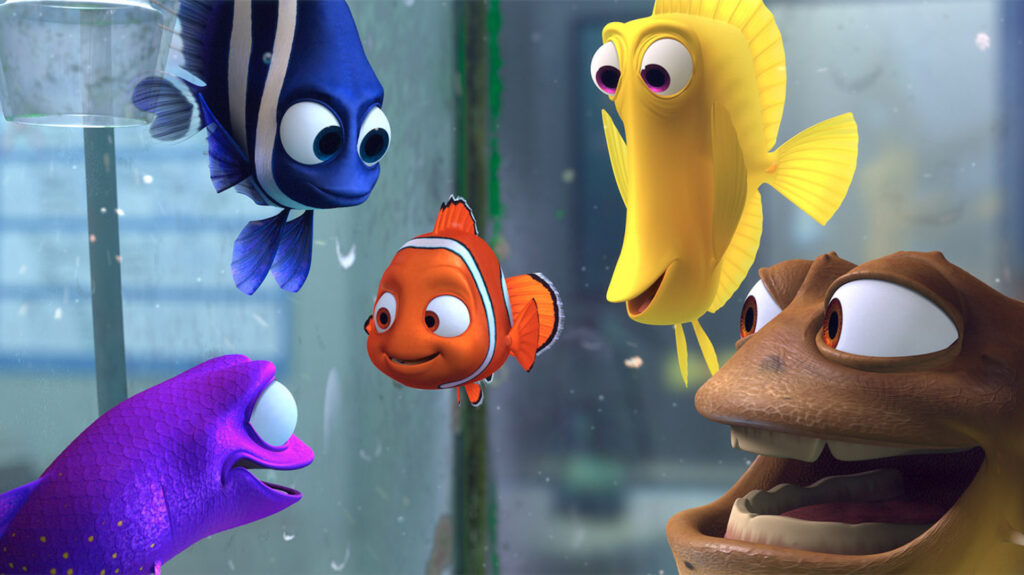
'Finding Nemo' (2003)
What Are the Character Archetypes in the Hero's Journey?
Many archetypes in the hero's journey—the threshold guardian, the herald, the shapeshifter, the trickster, the ally, and the tempter/temptress—are more defined in later interpretations and expansions of Campbell's work. People like Vogler applied his theories to modern storytelling so writers, readers, and audiences could more easily understand the dynamics of Campbell’s monomyth.
Here, we’ll break down the main character archetypes in the hero's journey utilized in Campbell’s Monomyth and Vogler’s expanded breakdowns and interpretations.
The hero is the central figure of the story (protagonist) who undergoes a journey, facing challenges and transformations. The hero often starts as an ordinary person who is then called to adventure. They are present throughout the entire journey , from the ordinary world to the return with newfound knowledge or power.
Luke Skywalker (Star Wars), Indiana Jones ( Raiders of the Lost Arc ), Katniss Everdeen ( The Hunger Games ), Barbie ( Barbie ), and Harry Potter (the Harry Potter series) are perfect examples of the hero character archetypes. You can include any protagonist within a story that goes on a physical or emotional journey.
As mentioned above, the hero in the hero’s journey usually begins their adventure within their ordinary world. This offers readers and audiences the chance to relate to the protagonist, empathize with their plight, and see the beginning of their character arc.
Read More: Why the 'Barbie' Movie is the Perfect Example of the Hero’s Journey
The shadow is the main antagonist of the story. The shadow reflects the darker aspects of the hero, sometimes represented as the mirror image (opposite) of the hero and their beliefs. Overall, they are the antagonist or villains present throughout the whole story in varied ways.
Read More: 15 Types of Villains Screenwriters Need to Know
The shadow can also be represented in metaphorical terms. If a story’s hero journey is the protagonist dealing with alcoholism or addiction, those vices can serve as the shadow/antagonist/villain.
The quintessential shadows in cinema include characters like Darth Vader ( Star Wars ), Voldemort (the Harry Potter series), and Sauron ( The Lord of the Rings series). But you can also find a less villainous shadow that takes on a lighter antagonistic role without purely evil intentions.
A perfect example of that would be Principal Rooney in Ferris Bueller’s Day Off . He doesn’t have evil intentions like a villain does. However, he is the shadow or mirror image of Ferris Bueller. Ferris believes in freedom an expression . Rooney believes in order and control of others.
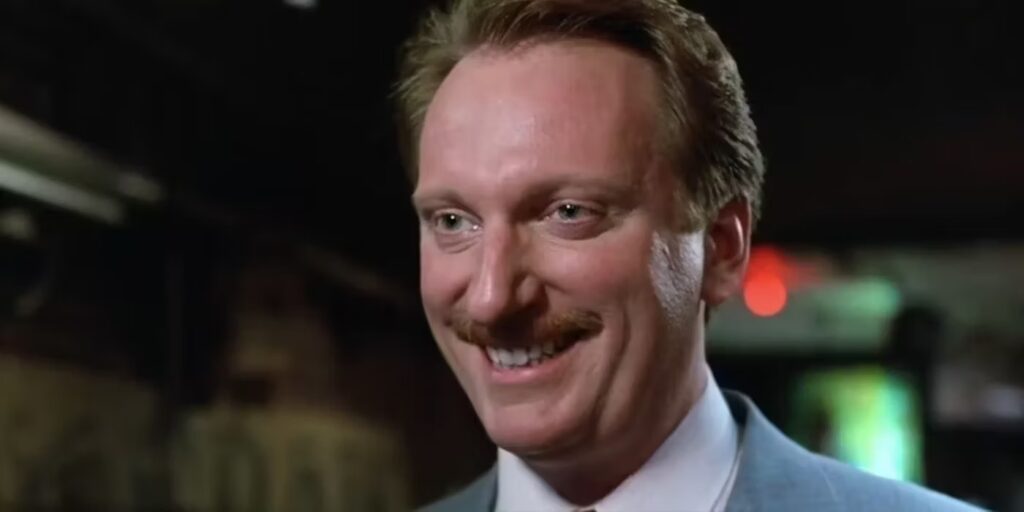
'Ferris Bueller's Day Off' (1986)
This character serves as a guide or teacher to the hero, providing them with advice, training, or magical assistance. The mentor is often a wise or experienced figure, although there have been literary and cinematic variances.
Look no further than the likes of Obi-Wan Kenobi ( Star Wars ), Yoda ( The Empire Strikes Back ), Mr. Miyagi ( The Karate Kid ), and Gandalf ( The Lord of the Rings series ) as core examples of the mentor.
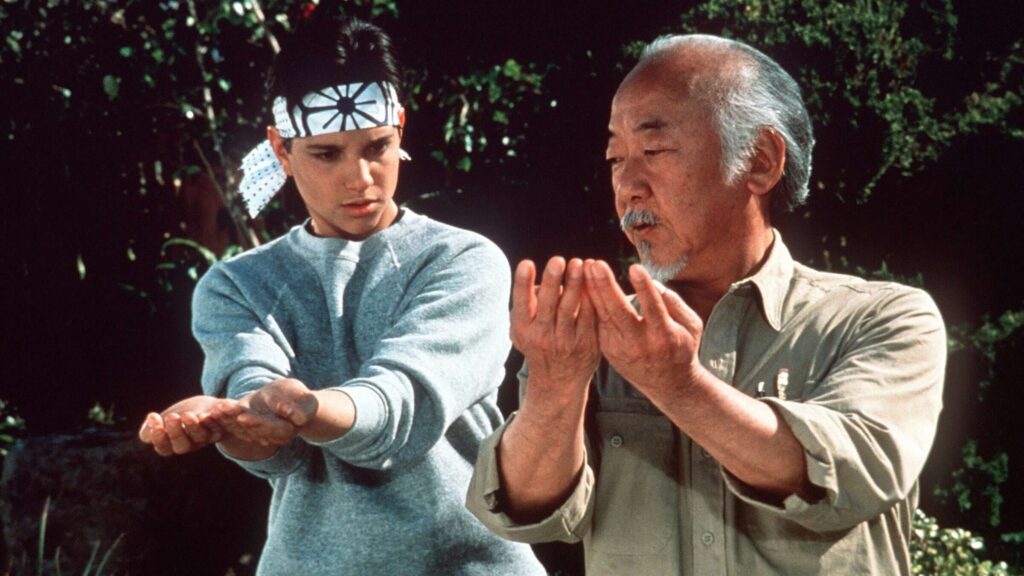
'The Karate Kid' (1984)
Allies are friends or companions who support and accompany the hero through their journey. They often complement the hero's skills and help them face challenges.
In Star Wars , the allies of Luke Skywalker include Han Solo, Chewbacca, and the droids. In The Lord of the Rings series , the fellowship companions of Frodo encompass this character archetype. You can also look to any sidekick-type character as the perfect example of an ally:
- Goose in Top Gun
- Patrick in Spongebob Squarepants
- Ron in Harry Potter
- Billy in Big
- Julie in Lady Bird
- Rod in Get Out
- Ned in the Spider-Man movies
- Sam in The Lord of the Rings
- Short Round in Indiana Jones and the Temple of Doom
Allies can also be characters who aren’t as close to the hero but offer some type of help along the way.
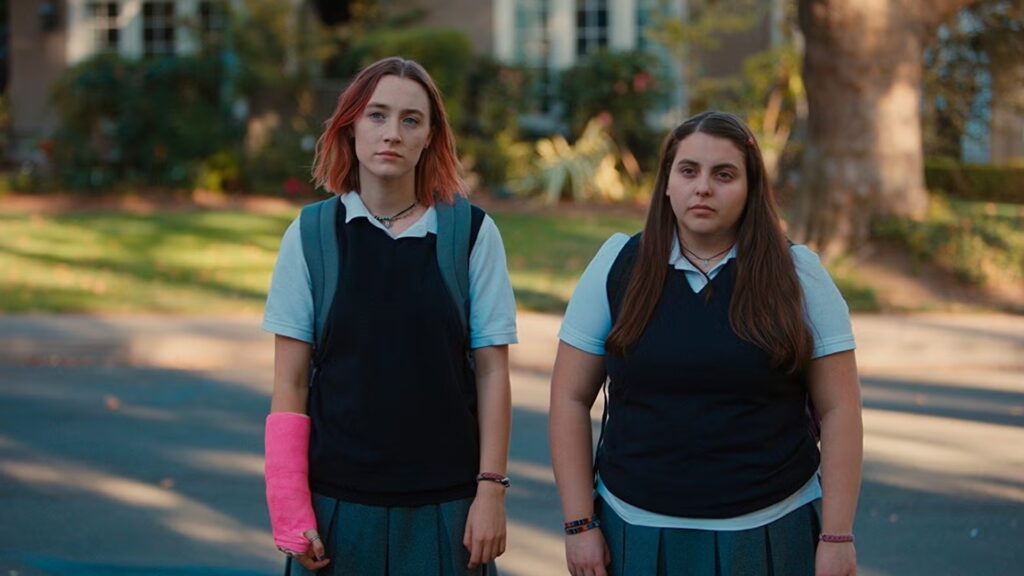
'Lady Bird' (2017)
The Threshold Guardian
These characters serve as obstacles the hero must overcome or circumvent on their journey. They are not always enemies but are present within the story to test the hero and give them the belief and ability to continue on their adventure.
Little John in the Robin Hood stories is initially the threshold guardian of the Sherwood Forest.
He eventually becomes an ally to Robin. But he’s initially a threshold guardian.
You can turn to Monthy Python and the Holy Grail as well. The Black Knight isn’t necessarily King Arthur’s foe. However, he’s there to defend the bridge at all costs.
The Herald
The herald is the character that initiates the call to adventure, pushing the hero to action, or providing the news or event that triggers their journey.
In Star Wars , R2-D2 is the herald of Luke’s journey because he delivers the message from Princess Leia to him . If Luke doesn’t see that message, he doesn’t show it to Obi-Wan Kenobi. And if Obi-Wan doesn’t see that message, he doesn’t convince Luke to come with him to join the Rebellion.
In Barbie , Weird Barbie is the one who tells Barbie the truth about what she is going through and what she must do to seek out the answers she needs.
The herald can be a major character, a supporting character, or even a minor character. In The Lord of the Rings , Gandalf is both mentor and herald, as he is the one who appears to Frodo, telling him he must bring the ring to Mordor.
The Shapeshifter
This archetype's loyalty and role are often unclear, and they can serve as an ally or an enemy to the hero. Sometimes both. Their unpredictable nature adds complexity to the story, usually resulting in twists and turns within the plot.
Snape in the Harry Potter series is one of the greatest shapeshifters in literature and film. His motives are unknown, mistaken, and hidden. He acts as both a shadow to Harry and later an ally.
Jack Sparrow in the Pirates of the Caribbean series is another great example, embodying the role of an unpredictable ally whose loyalty is often questionable. Yes, he can be looked upon as an antihero protagonist of the movie. However, the clear hero of the story is Will.
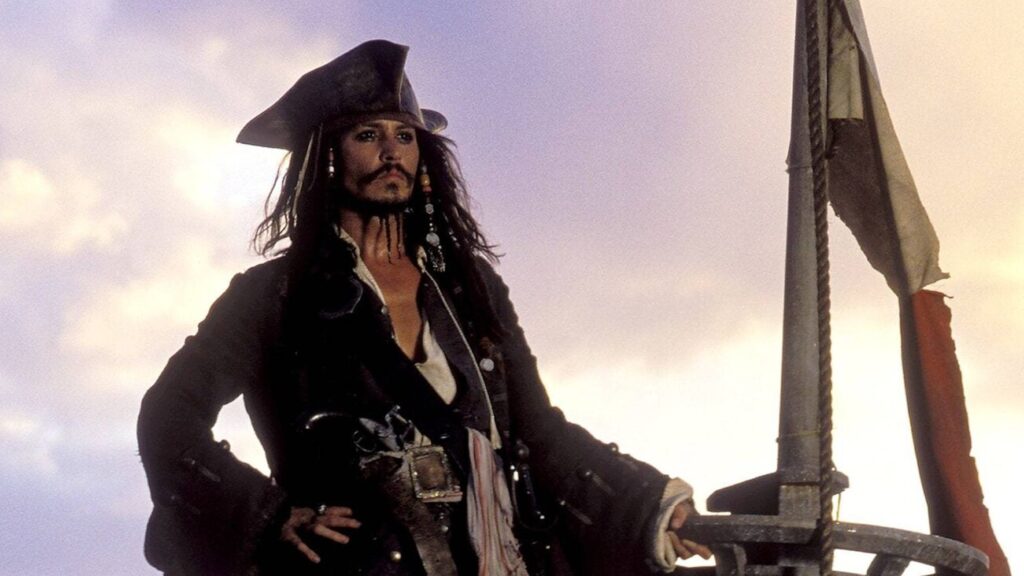
'Pirates of the Caribbean: The Curse of the Black Pearl' (2003)
The Trickster
The trickster usually adds levity to the story through comic relief. They can be allies or enemies, but typically they cause trouble for both.
Jack Sparrow falls under this character archetype as well. But a better example may be Loki in the Marvel Cinematic Universe movies. He embodies the definition of a trickster. He brings more comic relief to the movies after his initial first appearance in Thor .
Perhaps the better example would be Genie in Disney's Aladdin . He uses his powers for humorous and unexpected effects, often bending the rules and adding a lighthearted element to the story.
Tempter/Temptress
This archetype can be of any gender and represents temptation or distraction that diverts the hero from their path.
Catwoman in the Batman movies often plays the role of a temptress to Batman, combining allure with a morally ambiguous character.
Many of the Bond Girls in the James Bond films serve as temptresses, combining allure and mystery and often leading Bond into dangerous situations.
The Indiana Jones variation would be Elsa from Indiana Jones and the Last Crusade .
One of the best examples of the Tempter playing a more pivotal role in the story is Avery Tolar in The Firm . He’s a senior partner at the law firm Bendini, Lambert & Locke. His role is crucial in seducing the protagonist, Mitch McDeere, into the luxurious and corrupt world of the law firm.
He has a charismatic and persuasive personality. He mentors Mitch and exposes him to the high-stakes, high-reward lifestyle that the firm offers, including wealth, prestige, and power. Tolar's character is complex. He is a nuanced character who embodies the charm and allure that the firm uses to entice and trap its young associates.
His influence on Mitch is significant, as he represents the allure of success and the moral compromises that often accompany it. Tolar's character effectively demonstrates how the tempter archetype can be used to explore themes of corruption, temptation, and ethical dilemmas in a narrative.
The character archetypes found within the h ero’s journey offer writers the ability to take universal character templates and mold them to fit into stories that embrace the monomyth structure or use it as a starting point to tell a compelling and engaging story.
Use them in whatever way you’d like. They can encompass the more traditional definition within your story, or you can use these archetypes to set up expectations and later subvert those expectations to create a more enthralling and surprising plot.
Read More: Is Joseph Campbell's "The Hero's Journey" Dead in Screenwriting Today?
CHECK OUT OUR PREPARATION NOTES SO YOU START YOUR STORY OFF ON THE RIGHT TRACK!

Ken Miyamoto has worked in the film industry for nearly two decades, most notably as a studio liaison for Sony Studios and then as a script reader and story analyst for Sony Pictures.
He has many studio meetings under his belt as a produced screenwriter, meeting with the likes of Sony, Dreamworks, Universal, Disney, Warner Brothers, as well as many production and management companies. He has had a previous development deal with Lionsgate, as well as multiple writing assignments, including the produced miniseries Blackout, starring Anne Heche, Sean Patrick Flanery, Billy Zane, James Brolin, Haylie Duff, Brian Bloom, Eric La Salle, and Bruce Boxleitner, the feature thriller Hunter’s Creed, and many Lifetime thrillers. Follow Ken on Twitter @KenMovies and Instagram @KenMovies76
Get Our Screenwriting Newsletter!
Get weekly writing inspiration delivered to your inbox - including industry news, popular articles, and more!
Facebook Comments
Free download.

Screenwriting Resources:

$ 15.00 $ 12.00 Add to cart
Popular Posts

Recent Posts
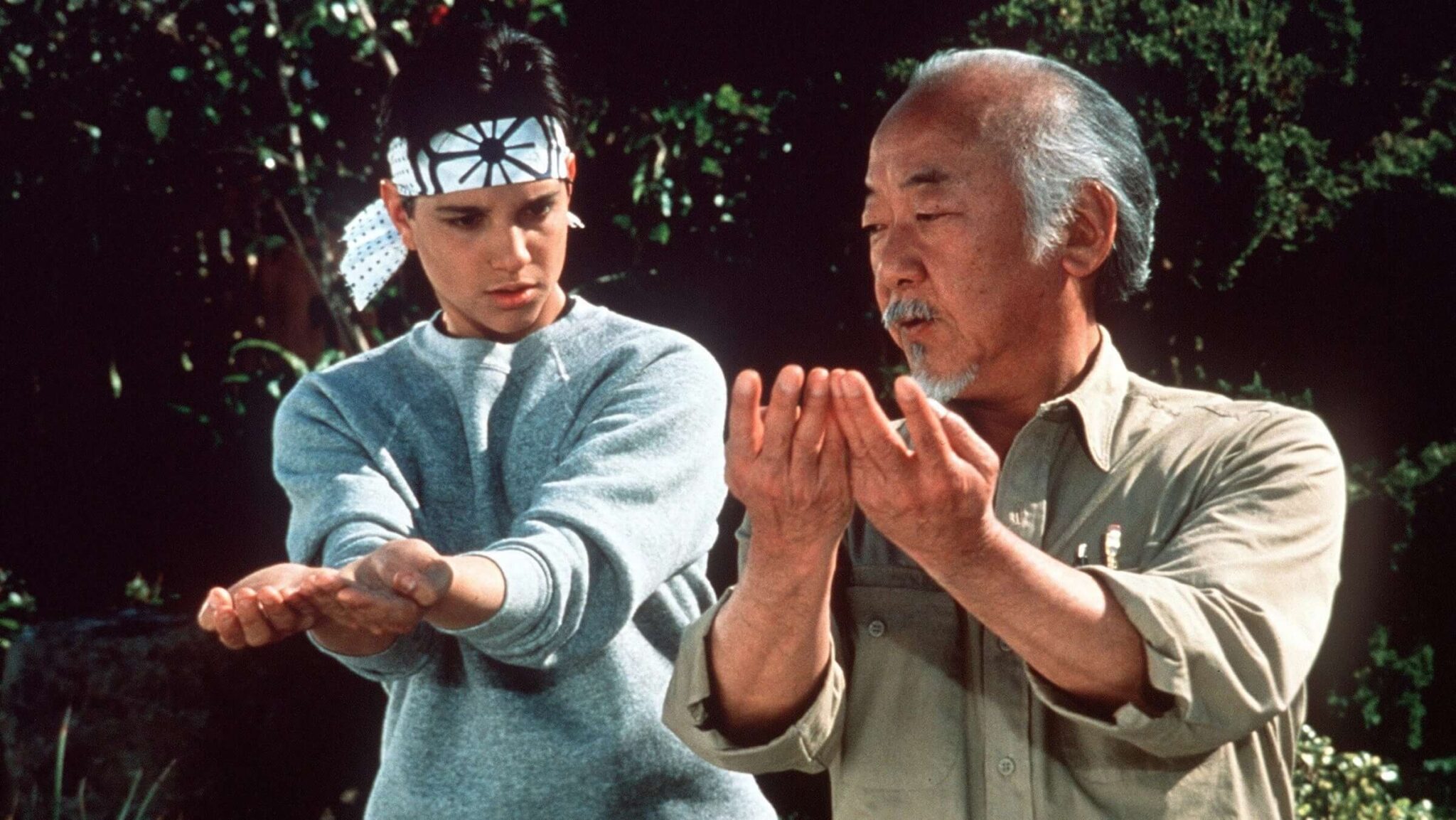
Next Related Post
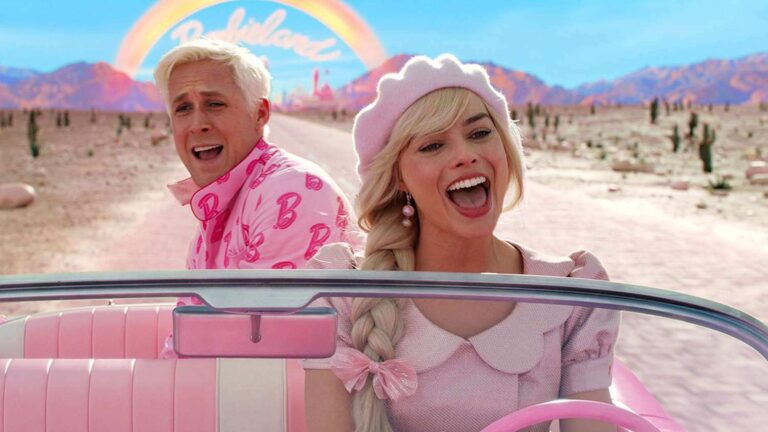
Get Our Newsletter!
Developing your own script.
We'll send you a list of our free eCourses when you subscribe to our newsletter. No strings attached.
You Might Also Like
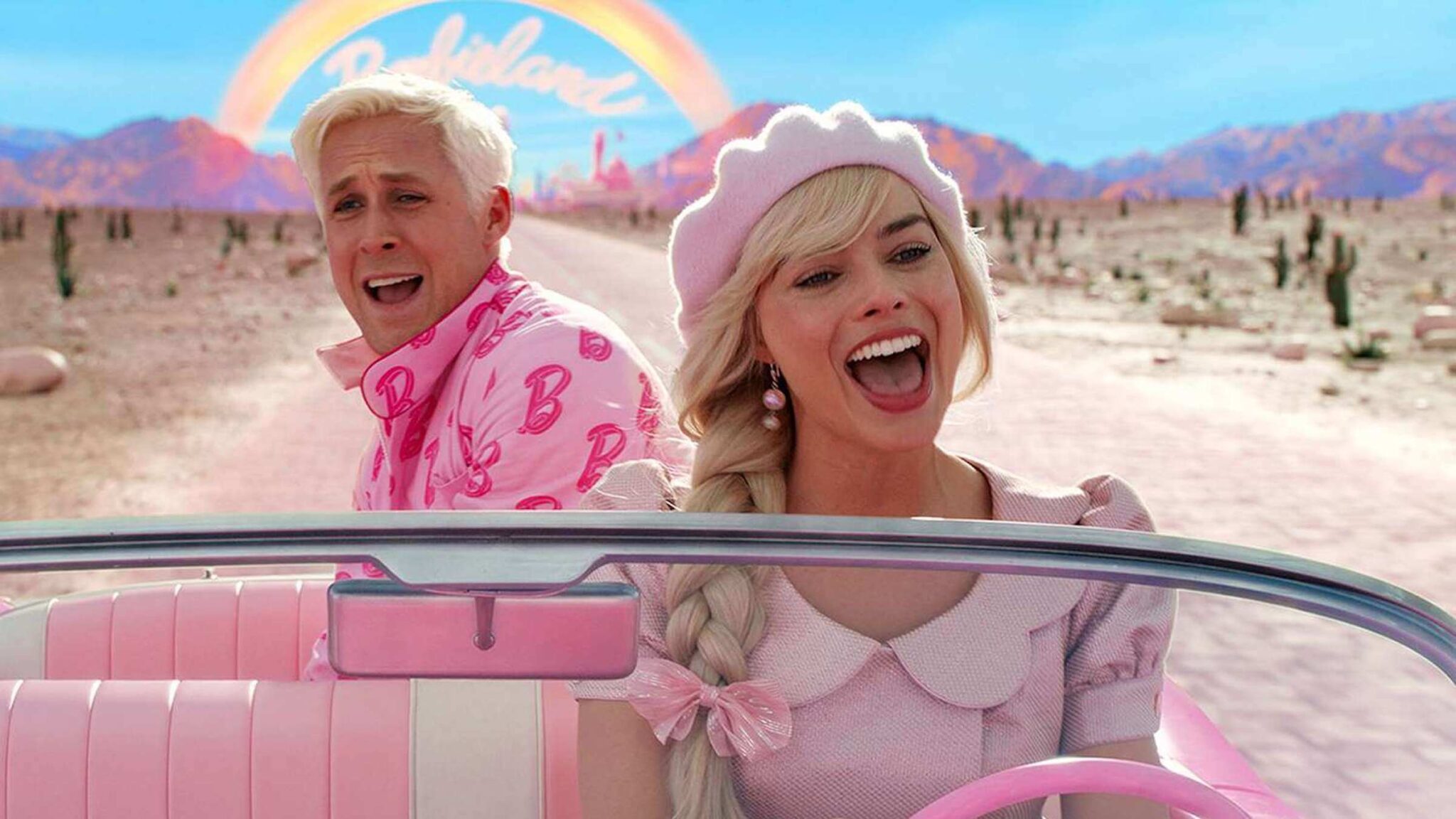
- Hidden Name
- Name This field is for validation purposes and should be left unchanged.
Connect With Us
Writing competitions, success stories.
© 2024 ScreenCraft | An Industry Arts Company
Wait! Subscribe to get our free Newsletter
Join our community of over 100,000 screenwriters and get weekly inspiration delivered to your inbox.
Screenwriting Newsletter
Join our community of over 100,000 screenwriters and get weekly inspiration delivered to your inbox:
✓ Popular blog posts and industry news ✓ New ScreenCraft online events ✓ Screenplay competition announcements!
" * " indicates required fields

30 Day Books
A book studio for self-published & indie authors
- Writing craft
Hero’s Journey: A Guide to the Ultimate Storytelling Framework

Every captivating story, from ancient myths to modern blockbusters, shares a common narrative structure that resonates with audiences across generations and cultures. This powerful storytelling framework is known as the hero’s journey, a concept rooted in the groundbreaking work of renowned mythologist and author, Joseph Campbell. In this blog post, we’ll delve deep into the fascinating world of the hero’s journey, exploring its key components, providing examples from iconic literature, and sharing insights on how you can harness this timeless narrative structure to elevate your own writing. So, buckle up and join us on this epic adventure as we unravel the secrets of the hero’s journey and uncover the universal threads that bind us all together through the power of storytelling.
What is the Hero’s Journey?
At its core, the hero’s journey is a narrative framework that outlines the transformative arc of a protagonist as they embark on an adventure, face and overcome challenges, and ultimately return home, forever changed by their experiences. The concept was popularized by Joseph Campbell in his seminal work, “The Hero with a Thousand Faces,” where he identified a common pattern in the myths and stories from different cultures and historical periods. Campbell believed that the hero’s journey resonated deeply with readers and audiences because it mirrored universal psychological and spiritual experiences, making it a powerful tool for creating engaging and meaningful stories.
The hero’s journey serves as both a structural blueprint and a symbolic template for stories, enabling writers to craft compelling narratives that reflect the trials, triumphs, and transformations we all encounter in our own lives. By understanding and incorporating the elements of the hero’s journey into your writing, you can create stories that not only entertain but also inspire and enlighten, transcending the boundaries of time and culture to connect with the very essence of human experience.
The Three Acts of a Hero’s Journey
Joseph Campbell’s hero’s journey can be broken down into three distinct acts, each comprising a series of stages that capture the essential elements of the protagonist’s transformative arc. These three acts provide a roadmap for writers, helping them navigate the complex landscape of their stories and ensuring that their heroes undergo meaningful and memorable journeys.
- Departure (The Call to Adventure)
- Initiation (Trials and Transformation)
- Return (Master of Two Worlds)
As we explore each act in greater detail, you’ll begin to recognize the familiar narrative beats that have captivated audiences for centuries, and discover how you can use these archetypal elements to bring your own stories to life.
It’s important to note that while the hero’s journey offers a structured framework for storytelling, it is by no means a rigid formula. Writers should feel free to adapt, modify, and expand upon the hero’s journey to suit the unique needs of their stories and characters, always bearing in mind that the ultimate goal is to create engaging, emotionally resonant narratives that connect with readers on a deeper level.
Act 1 – Departure
The first act of the hero’s journey, Departure, sets the stage for the protagonist’s transformative adventure. It introduces the hero in their familiar, ordinary world and presents them with a call to action that will propel them into the unknown. Here are the key stages of the Departure act:
- The Ordinary World: This stage establishes the hero’s everyday life, providing a relatable starting point for the reader. It highlights the hero’s wants, needs, and any underlying issues that will be addressed throughout the story.
- Call to Adventure: The hero is presented with a challenge, quest, or opportunity that disrupts their ordinary world and demands a response. This call to action sets the story in motion and paves the way for the protagonist’s transformative journey.
- Refusal of the Call: Often, the hero initially resists or doubts the call to adventure, revealing their fears and insecurities. This refusal adds tension and deepens the character’s complexity, making their eventual acceptance of the call more satisfying and impactful.
- Meeting the Mentor: The hero encounters a guide, teacher, or wise figure who provides advice, support, and sometimes magical aid. This mentor figure helps prepare the hero for the trials they will face, and often plays a crucial role in the protagonist’s development.
- Crossing the Threshold: The hero finally commits to the adventure, leaving their ordinary world behind and stepping into the unknown. This stage marks the point of no return, as the hero embarks on a journey that will forever change them.
The Departure act sets the foundation for the hero’s journey, establishing the protagonist’s relatable struggles and desires while setting them on a path toward growth and transformation. As a writer, it’s essential to carefully craft this act to create a compelling and believable starting point for your hero’s adventure.
Famous Example: The Departure of Harry Potter
To help illustrate the Departure act in action, let’s examine the early stages of the beloved hero’s journey in J.K. Rowling’s “Harry Potter and the Philosopher’s Stone.”
- The Ordinary World: Harry Potter’s life is far from ideal. He lives with his cruel and uncaring aunt, uncle, and cousin, the Dursleys, in the small, ordinary town of Little Whinging. Despite his miserable circumstances, Harry longs for a sense of belonging and yearns to learn more about his deceased parents.
- Call to Adventure: Harry receives a mysterious letter from Hogwarts School of Witchcraft and Wizardry, inviting him to attend the prestigious institution. This invitation promises to pull him out of his mundane life and into a world of magic, wonder, and hidden potential.
- Refusal of the Call: Initially, the Dursleys do everything in their power to prevent Harry from attending Hogwarts, hiding the letters and even fleeing to a remote island. Harry’s desire to learn about his parents and his true heritage is challenged by the Dursleys’ determination to keep him from discovering the truth.
- Meeting the Mentor: Harry meets Rubeus Hagrid, the half-giant groundskeeper of Hogwarts, who not only delivers Harry’s acceptance letter but also serves as his guide and protector in the magical world. Hagrid reveals the truth about Harry’s parents, his connection to the wizarding world, and the significance of the lightning-shaped scar on his forehead.
- Crossing the Threshold: Harry leaves his life with the Dursleys behind and steps into the magical realm by traveling through the hidden platform 9 ¾ at King’s Cross Station. As he boards the Hogwarts Express, he embarks on an adventure that will transform him from a downtrodden orphan into a powerful and celebrated wizard.
By skillfully weaving together the stages of the Departure act, J.K. Rowling creates an unforgettable introduction to Harry Potter’s hero’s journey, setting the stage for a thrilling and transformative adventure that has captivated readers for generations.
Act 2 – Initiation
As the hero steps into the unknown, the second act, Initiation, unfolds. This act is where the hero’s character and resolve are tested through a series of trials and tribulations. Through these challenges, the protagonist forms new relationships, acquires new skills, and grows as an individual. Here are the key stages of the Initiation act:
- Trials, Allies, and Enemies: The hero encounters a series of tests and obstacles that push them to their limits. They forge new alliances and face adversaries, which help them gain the skills and knowledge needed to confront their ultimate challenge. This stage is crucial for character development, as the protagonist’s reactions and choices reveal their true nature.
- Approach to the Innermost Cave: As the hero nears the climax of their journey, they must confront their deepest fears and darkest shadows. The “Innermost Cave” can be a physical location or a metaphorical space, representing the hero’s confrontation with their greatest personal or external challenge.
- The Ordeal: The protagonist faces their most significant trial, a life-or-death struggle that tests their strength, courage, and resourcefulness. This ordeal often leads to a symbolic or literal death and rebirth, signifying a profound transformation in the hero’s character or perception of themselves.
- Reward (Seizing the Sword): After overcoming the ordeal, the hero is granted a reward, which may take the form of a physical object, a new ability, or a revelation. This reward symbolizes the hero’s growth and newfound mastery, equipping them to face the final challenges of their journey.
The Initiation act is a crucible for the hero, as they confront adversity and evolve in response to the challenges they face. As a writer, it’s essential to craft compelling trials and conflicts that not only entertain but also illuminate the protagonist’s inner journey, revealing their strengths, weaknesses, and capacity for growth.
Famous Example: The Initiation of Luke Skywalker
To better understand the Initiation act, let’s delve into the captivating trials and tribulations of Luke Skywalker from George Lucas’s “ Star Wars : Episode IV – A New Hope.”
- Trials, Allies, and Enemies: Luke encounters numerous challenges on his journey, from evading Imperial forces to navigating the treacherous Death Star. Along the way, he forms alliances with characters such as Obi-Wan Kenobi, Princess Leia, Han Solo, and Chewbacca, each of whom plays a vital role in his development. He also confronts adversaries like Darth Vader and the ruthless Galactic Empire, which test his courage and convictions.
- Approach to the Innermost Cave: As the Rebel Alliance prepares for their daring assault on the Death Star, Luke faces his greatest fear: the possibility of failure and the loss of his newfound friends. This moment of self-doubt forces Luke to confront his insecurities and embrace the lessons he has learned from his mentor, Obi-Wan.
- The Ordeal: Luke’s ordeal comes during the climactic Battle of Yavin, where he pilots his X-wing fighter in a desperate attempt to destroy the Death Star before it can annihilate the Rebel base. As he faces seemingly insurmountable odds, Luke is guided by the spirit of Obi-Wan, who encourages him to trust in the Force.
- Reward (Seizing the Sword): After successfully destroying the Death Star, Luke is celebrated as a hero and awarded a medal by Princess Leia. More importantly, he gains newfound confidence in his abilities and his connection to the Force, setting the stage for his continued growth and transformation throughout the remainder of the saga.
By incorporating the stages of the Initiation act, George Lucas masterfully charts Luke Skywalker’s transformative journey from a naïve farm boy to a resourceful and courageous hero. This compelling narrative arc not only entertains but also reflects timeless themes of self-discovery, resilience, and the power of friendship, making “Star Wars” an enduring classic that continues to captivate audiences worldwide.
Act 3 – Return
The final act of the hero’s journey, Return, brings the protagonist’s transformative arc to a satisfying conclusion. Having overcome their trials and emerged victorious, the hero must now return to their ordinary world, where they will apply their newfound wisdom, skills, or power for the benefit of others. Here are the key stages of the Return act:
- The Road Back: The hero begins their journey back to the ordinary world, often facing challenges or temptations that test their resolve and commitment to their newfound purpose. This stage serves as an opportunity for the hero to demonstrate their growth and mastery, as they confront familiar obstacles with renewed strength and insight.
- Resurrection: The hero faces a final, climactic ordeal that represents their ultimate test of character, courage, and transformation. Often mirroring the earlier ordeal in the Initiation act, this confrontation requires the hero to draw upon all the lessons and experiences they have gained on their journey, leading to a powerful moment of catharsis and renewal.
- Return with the Elixir: Having triumphed over their final challenge, the hero returns to their ordinary world, bearing a tangible or intangible “elixir” that represents their transformation and the wisdom they have acquired. This elixir often serves as a solution to a problem or conflict within their community, fulfilling the hero’s ultimate purpose and bringing their journey full circle.
The Return act is a crucial component of the hero’s journey, as it not only completes the protagonist’s transformation but also reinforces the universal themes of growth, self-discovery, and the power of individual agency. As a writer, it’s essential to craft a compelling and emotionally resonant conclusion that both celebrates the hero’s achievements and emphasizes the lasting impact of their journey.
Famous Example: The Return of Frodo Baggins
To illustrate the power of the Return act, let’s explore the culmination of Frodo Baggins’s epic journey in J.R.R. Tolkien’s “The Lord of the Rings.”
- The Road Back: After the destruction of the One Ring and the defeat of Sauron, Frodo and his companions begin their journey back to the Shire, their home in the ordinary world. Despite their hard-won victory, the hobbits are not immune to the lingering effects of their experiences, as they continue to grapple with the emotional and physical scars of their adventure.
- Resurrection: Upon their return to the Shire, Frodo and his friends discover that their home has been ravaged by the villainous Saruman and his henchmen. This final confrontation serves as a test of the hobbits’ newfound strength and resourcefulness, as they apply the skills and lessons they have gained on their journey to rally their community and reclaim their homeland.
- Return with the Elixir: With the Shire restored and Saruman defeated, Frodo and his companions are hailed as heroes, and their once-ordinary lives are forever transformed by their extraordinary journey. Frodo, in particular, bears the intangible elixir of wisdom and courage, which he shares through his writing and storytelling, ensuring that the legacy of their adventure endures for future generations.
Through the stages of the Return act, J.R.R. Tolkien skillfully brings Frodo Baggins’s transformative journey to a close, emphasizing the lasting impact of his experiences and the power of individual agency in shaping not only his own destiny but the fate of his entire world. This emotionally resonant and satisfying conclusion is a testament to the enduring power of the hero’s journey as a framework for creating timeless and universally resonant narratives.
How to Use the Hero’s Journey in Your Writing
Now that we’ve delved into the three acts of the hero’s journey and explored some famous examples, you may be wondering how you can apply this timeless narrative structure to your own writing. While the hero’s journey offers a valuable framework for crafting compelling stories, it’s essential to approach it as a flexible blueprint rather than a rigid formula. Here are some tips for incorporating the hero’s journey into your writing:
Identify your hero’s core desires and fears
Understanding your protagonist’s motivations and inner struggles is crucial for crafting a meaningful and emotionally resonant hero’s journey. Consider what drives your hero, what they hope to achieve, and what obstacles they must overcome to realize their goals.
Adapt the structure to your unique story
While the hero’s journey is a proven narrative structure, not every stage will be relevant or necessary for your specific story. Don’t be afraid to modify, expand, or omit certain elements to suit the needs of your characters and plot. The key is to maintain a clear sense of the protagonist’s transformative arc and ensure that their journey remains engaging and emotionally satisfying.
Create compelling challenges and conflicts
The trials and ordeals your hero faces should not only test their physical and mental abilities but also push them to confront their deepest fears and insecurities. Design conflicts that force your protagonist to grow, change, and ultimately emerge as a stronger, more capable individual.
Balance the familiar with the unexpected
While the hero’s journey is based on universal archetypes and narrative beats, it’s crucial to infuse your story with originality and surprise. Experiment with unconventional approaches to the hero’s journey, such as subverting expectations, exploring unconventional hero archetypes, or employing an unconventional narrative structure.
Emphasize your hero’s transformation
The heart of the hero’s journey lies in the protagonist’s personal growth and transformation. Ensure that your hero’s arc is clear, believable, and emotionally resonant by highlighting the lessons they learn, the relationships they form, and the inner obstacles they overcome on their journey.
By integrating the hero’s journey into your writing and adapting it to suit your unique story, you can create compelling, emotionally resonant narratives that resonate with readers and stand the test of time. In essence, you become a better writer .
The Hero’s Journey Across Cultures and Time
The hero’s journey is not only a powerful narrative framework, but it also holds immense cultural and historical significance. Present in countless myths, legends, and stories from around the world, the hero’s journey transcends time and geography, offering a universal blueprint for storytelling that resonates with diverse audiences.
Mythology and folklore
The hero’s journey can be traced back to the earliest myths and legends, from the Mesopotamian Epic of Gilgamesh to the Greek hero’s journey of Odysseus in Homer’s “The Odyssey.” These ancient narratives reflect the hero’s journey’s timeless appeal and the universal themes of transformation, self-discovery, and redemption.
Religious narratives
The hero’s journey is also deeply ingrained in religious texts and stories, such as the journeys of Moses in the Hebrew Bible or the life of the Buddha in Buddhist traditions. These narratives not only convey spiritual and moral lessons but also embody the transformative power of the hero’s journey, emphasizing the potential for personal growth and enlightenment.
Literature and popular culture
From classic novels like “The Adventures of Huckleberry Finn” by Mark Twain to modern film franchises like “The Matrix” and “ The Hunger Games ,” the hero’s journey continues to captivate and inspire storytellers and audiences alike. Its enduring appeal is a testament to its ability to tap into universal human experiences and desires, transcending the boundaries of culture, language, and time.
Cross-cultural connections
The hero’s journey reveals a fascinating tapestry of interconnected narratives and themes, which can foster a greater appreciation and understanding of the diverse cultural traditions and perspectives that have shaped human history. By exploring the hero’s journey in various contexts, we can deepen our empathy and broaden our worldview, recognizing the shared human experiences that unite us all.
The hero’s journey’s remarkable longevity and cross-cultural resonance underscore its profound significance as a tool for storytelling and resource for writers . By embracing and celebrating the hero’s journey in its many forms, we can not only create compelling stories but also foster a deeper sense of connection and empathy with others, transcending the barriers of time and culture.
Leave a Reply
Your email address will not be published. Required fields are marked *
Save my name, email, and website in this browser for the next time I comment.
Recently on the blog
- 7 Brilliant Book Cover Designers in the Netherlands
- 8 Stellar Self-Publishing Companies for Indie Authors
- 5 Simple Steps to Help You Self-Publish a Book
- 8 Amazing Romance Illustrators to Make You Swoon
- 8 Historical Illustrators to Bring Your Book to Life
Also Check Out
- A Roundup of the Best Book Writing Software
- Directory of Literary Agents
- Directory of Writing Classes and Courses
- How to Design a Book Cover That Stands Out
- How to Find a Literary Agent
- How to Self-Publish a Book
- How to Write a Query Letter (+ Free Querying Toolkit)
- Templates for Writing a Book (Free Downloads)
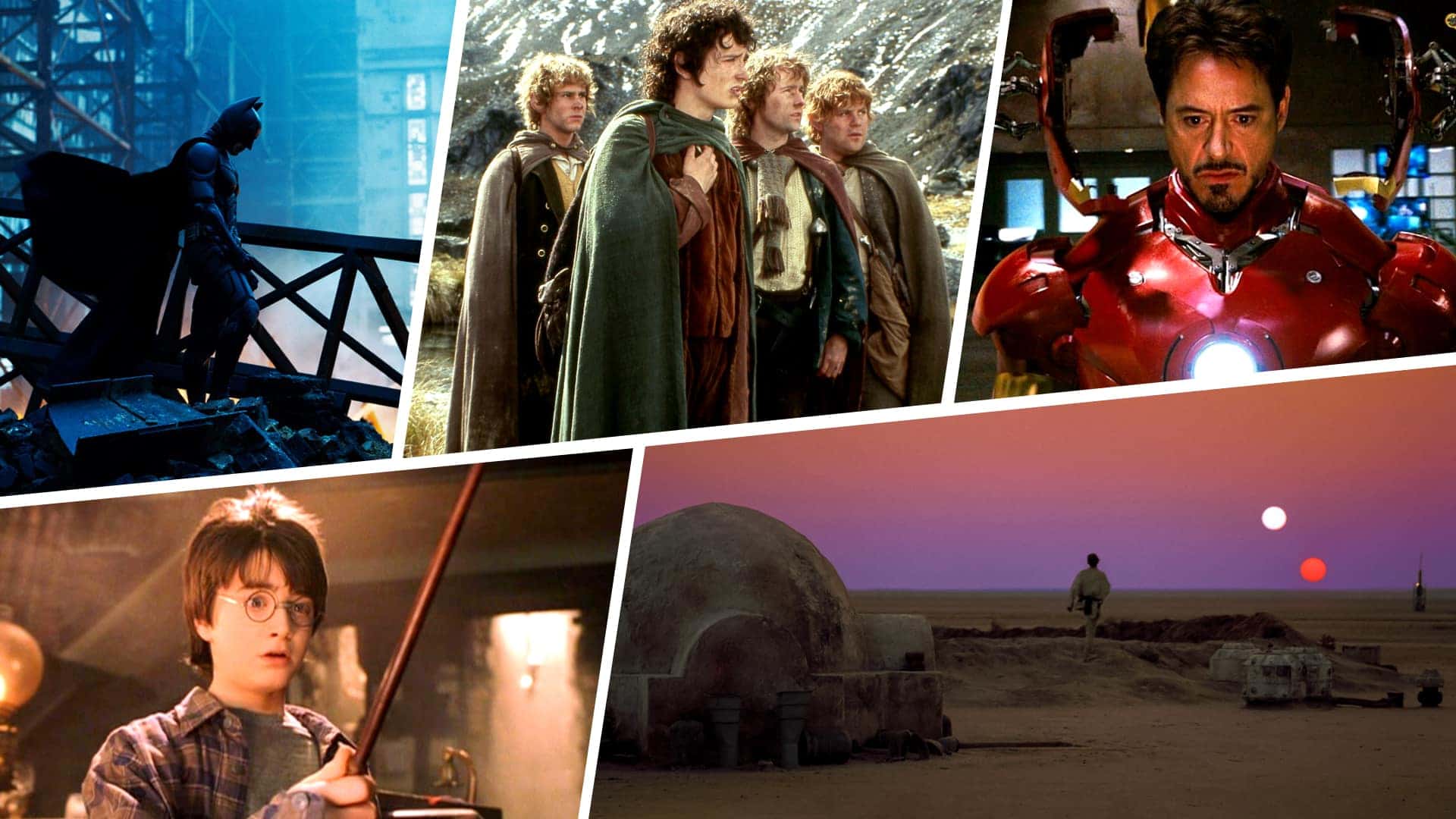
- Scriptwriting
Joseph Campbell’s Hero’s Journey: A Better Screenplay in 17 Steps
- What is a Scene
- What is The Three Act Structure
- What is Story Structure
- What is a Story Beat
- What Is a Plot
- Plot vs Story
- What is a Non-Linear Plot
- What is a Plot Device
- What is Freytag’s Pyramid
- Screenplay Structure Examples
- What is a Story Mountain
- Joseph Campbell’s Hero’s Journey
- What is Save the Cat
- Dan Harmon’s Story Circle
- What is Aristotle’s Poetics
- What is Exposition
- What is an Inciting Incident
- What is Rising Action
- What is the Climax of a Story
- What is the Falling Action
- What is Denouement
- How to Write the First Ten Pages of a Screenplay
- Plot Structure Tools
- The Ultimate Film Beat Sheet
- Secrets to Great Exposition in Screenwriting
- Writing Exposition in Film
- Best Inciting Incident Examples
- Examples of Midpoint In Movies
- Write Your Script For Free
dds are that if you’ve had any interest in writing a script within the past fifty years you’ve heard of the Hero’s Journey. A writer you got drinks with swore by it, a film professor suggested you read about it. Or you overheard the barista at your local coffee shop talking about how Die Hard is a picture-perfect template for it. But… what is it? I’ll explain all of the Hero’s Journey’s 17 steps and provide examples in the modern canon. Then you can kick writer’s block and get a strong script into the hands of agents and producers.
Watch: The Hero's Journey Explained
Subscribe for more filmmaking videos like this.
- Call to Action
- Refusal of Call
- Supernatural Aid
- Crossing The Threshold
- Belly of the Whale
- The Road of Trials
- Meeting the Goddess
- Atonement With the Father
- The Ultimate Boon
- Refusal of Return
- Magic Flight
- Rescue from Without
- Crossing the Return Threshold
- Master of Two Worlds
- Freedom to Live
Hero’s Journey Examples
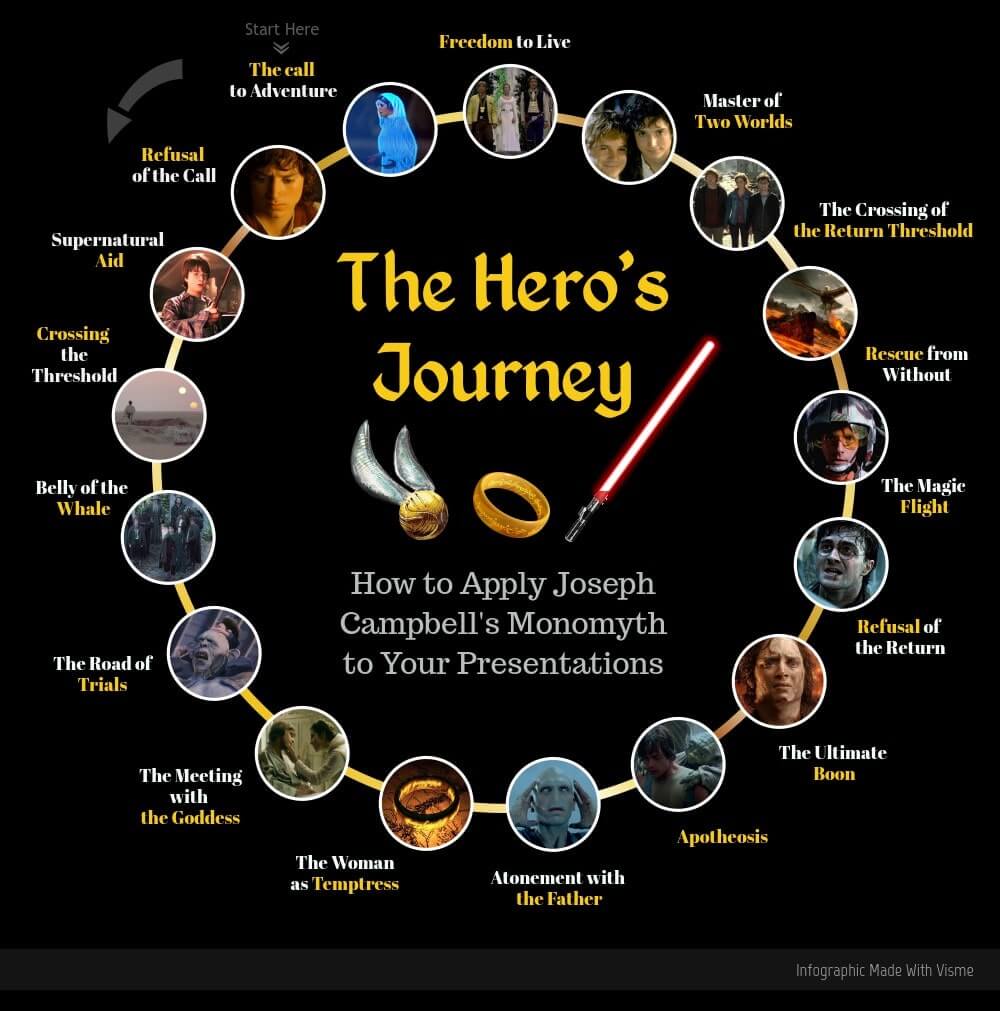
The monomyth featuring three of your favorite franchises!
The hero's journey begins, 1. call to action.
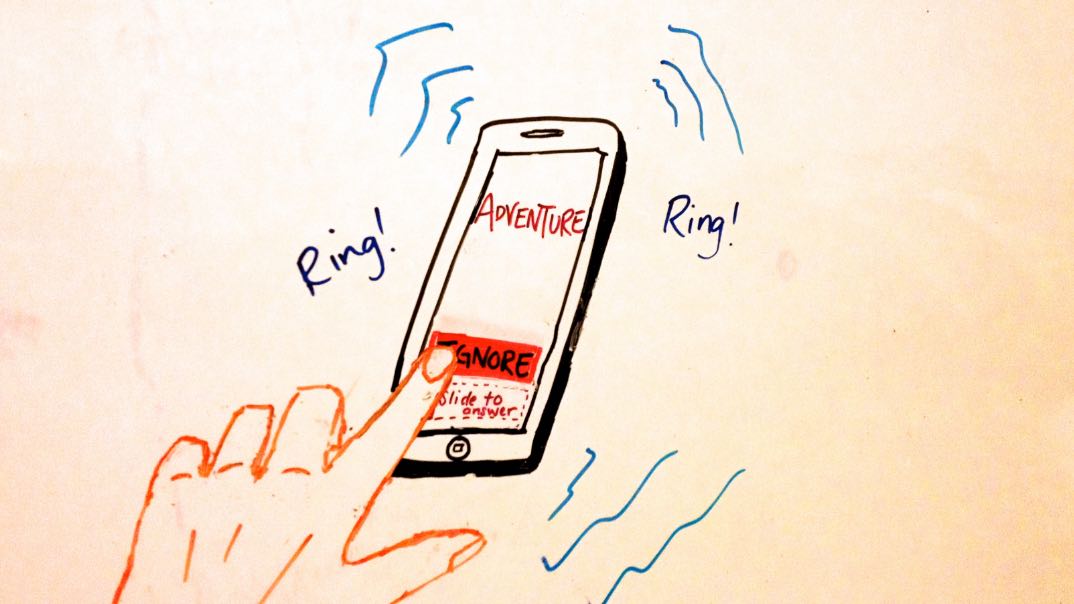
Adventure is calling. Will your hero pick up?
The initial step in the first act of the Hero’s Journey - known as the departure - is the “call to action." The Hero is beckoned to go on a journey. Think Frodo Baggins meeting Gandalf. Or the Owl inviting Harry Potter to Hogwarts.
If having a tall wizard extend a hand may be a little too on the nose for you, don't worry. This comes in all forms. In Citizen Kane , the mystery surrounding Charles Foster Kane’s final words is the call to action for the reporter, Jerry Thompson, to get to work.
The Hero Hesitates
2. refusal of call.
Next is the Hero’s “refusal of call.” The Hero initially balks at the idea of leaving their lives. The Shire is beautiful, after all, who wants to embark on a dangerous journey across the world?
This refusal is typically because of a duty or obligation they have at home. Be it family, or work, it’s something our Hero cares deeply about. But, as pressure mounts, they eventually succumb and decide to leave with the help of “supernatural aid.”
The Hero Receives Assistance
3. supernatural aid.
Once the Hero has committed themselves to embarking on whatever that quest may be (keep in mind, a Hero’s Journey can apply to a modern, emotional story, as well), they receive “supernatural aid.”
Individuals give the Hero information or tools at the start of their journey to help their chances of completing the task. Rome wasn’t built in a day, and it definitely wasn’t built alone. Every hero has a set of allies helping them get the job done. From Luke, Han, and Chewie to Harry, Ron, and Hermoine, these teams are iconic and nearly inseparable.
The tools provided come in handy as the Hero begins…
The Hero Commits
4. crossing the threshold.
Now the hero ventures into a new, unfamiliar world where the rules and dangers are unknown. They’re not in Kansas anymore, Toto, and that becomes evidently clear when monkeys start flying.
This stage often requires a few examples to crystalize the change in environment from familiar to dangerous. The contrast is key to play up how ill-prepared they initially are.
The Hero is Challenged
5. belly of the whale.
Next thing you know, we're in “the belly of the whale.” The first point of real danger in the Hero’s Journey. Taken from the Biblical story of Jonah entering a literal whale’s belly, it’s here that the dangers we’ve been warned about are manifested into tangible characters. Like hungry Orcs with swords.
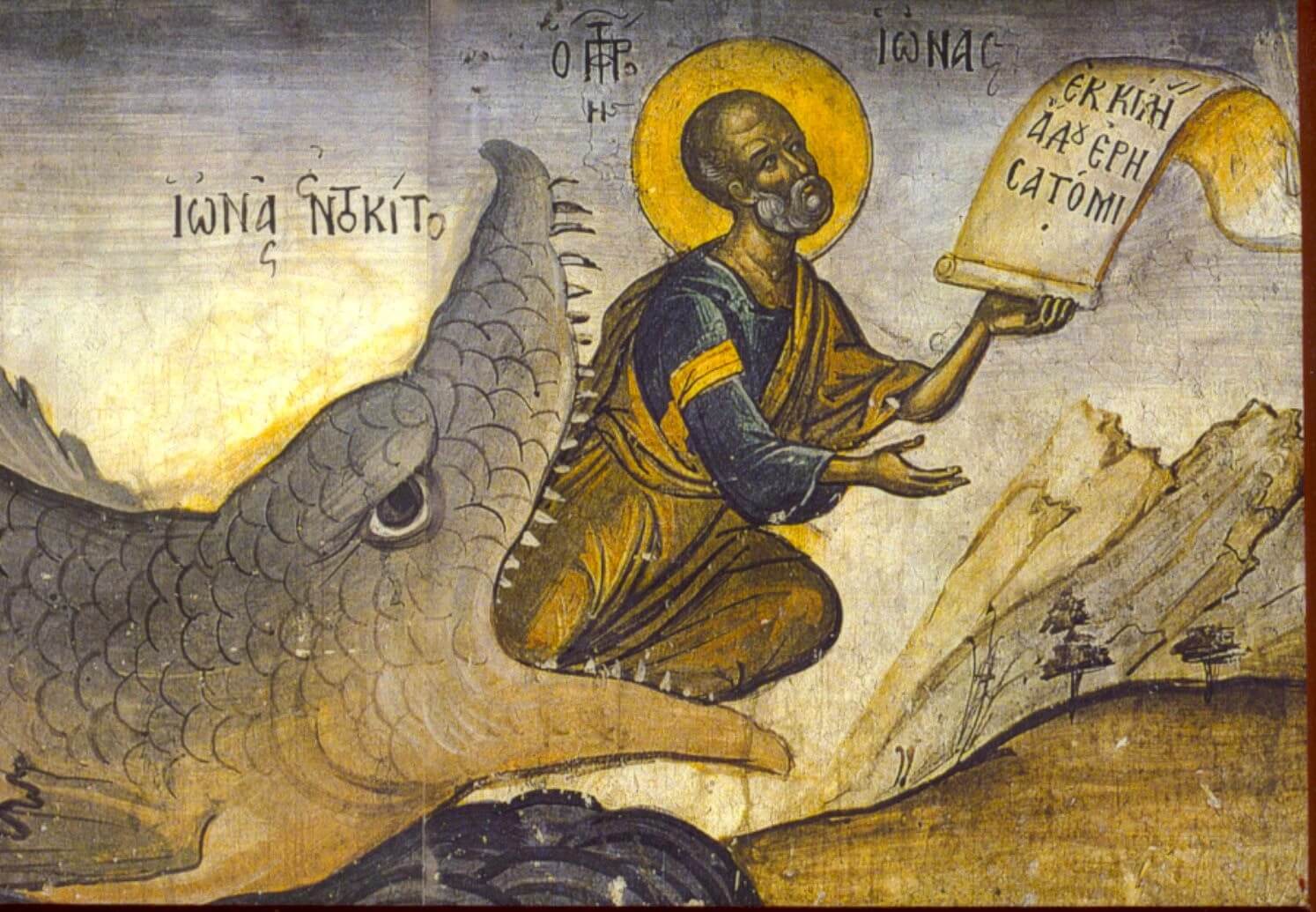
This is Jonah moments before actually being in the belly of the whale.
Now our Hero must make a decision to continue and, in turn, undergo a personal metamorphosis in the process.
They will not be the same individual at the end of this tale as they were in the beginning. This must be made clear while in the belly of the whale, as we enter Initiation, or act two. Which is the longest slice of the Hero’s Journey pie.
This part is filled with the most failure and risk, and ends with the climax. But first, it starts with...
The Hero is Tested
6. the road of trials.
“Road of trials” is a set of three tests that the Hero must take. Usually they will fail at least one of these tests. This could be a montage. It could also be a series of obstacles leading to a smaller goal in the journey.
Here is where the Hero learns to use his or her tools and allies while on their way to a...
The Great Advisor
7. meeting the goddess.
At this point in the monomyth, our Hero needs a break to adjust perspective and digest the ways they've changed. It’s here that they meet with an advisor, or a trusted individual, who will help them gain a better insight into the next steps of the journey. Frodo met with Galadriel, an elf who enlightened him with visions of potential futures.
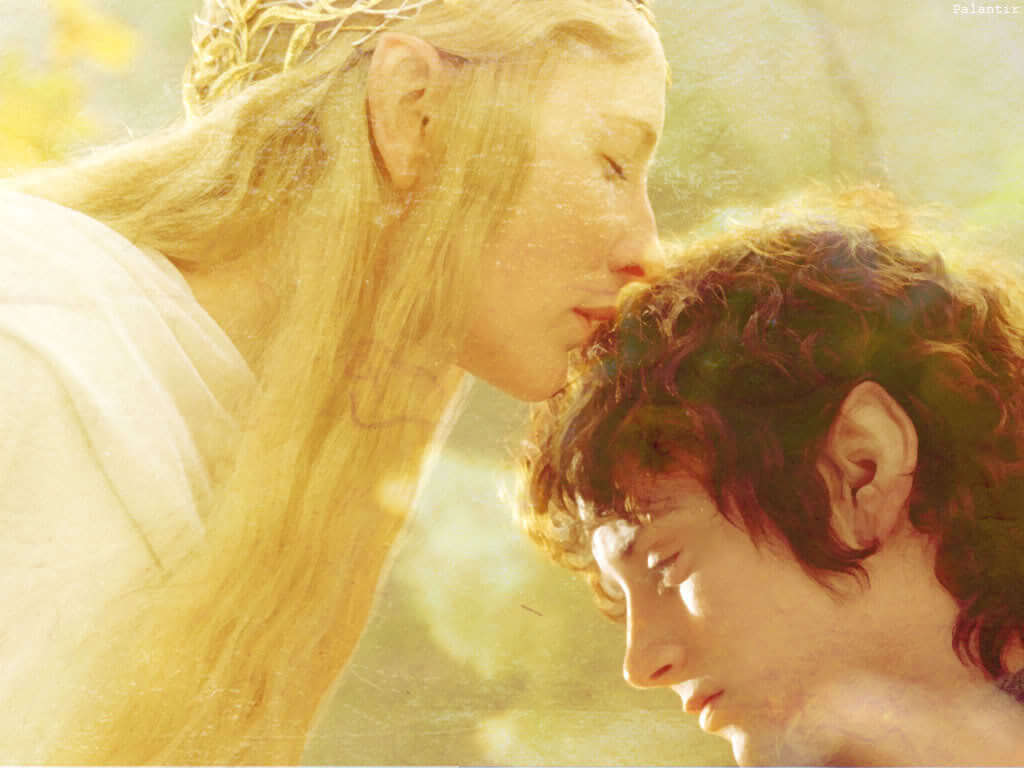
This is Frodo meeting with the goddess
Luke met Leia, and the two formed of a bond of kinship, motivating them to commit more to their cause. This individual doesn’t have to be a woman, but whoever it is our hero will gain something from the wisdom they impart.
But no good deed goes unpunished, and as we reward our Heroes in storytelling, we must also tempt them to failure.
The Hero is Torn
8. temptation.
Much like “road of trials,” “temptation” is a test in the Hero’s Journey. It presents a set of, well… temptations... that our Hero must either overcome or avoid. These temptations pick and pull at the insecurities of the Hero. A microcosm can be found in our own everyday lives with the simple act of getting out of bed.
The temptation to stay in the cozy confines of our comforters (and comfort zones) can be strong and sometimes overwhelming. This must be manifested in our story with some type of a cheap way out. Or an opportunity to throw in the towel. Our Hero must decline and press forward, nobly facing danger.
A Moment of Catharsis
9. atonement with the father.
Once they’ve thrown away their temptations, the Hero enters the “atonement with the father.” This is always an emotional part of the Hero’s Journey. It's a point in the monomyth where our protagonist must confront an aspect of their character from act one that has been slowing them down.
Something that could be fatal to their journey in the coming climactic stages. While this is actuated as a confrontation with a male entity, it doesn’t have to be.
The point here is that the Hero finds within themselves a change from who they were into someone more capable. Harry has to reconcile with the loss of his father figure, Dumbledore. Now take on Voldemort alone, using the lessons he’s learned on the way. Just like Luke...and every other hero ever. This is the emotional climax of the story.
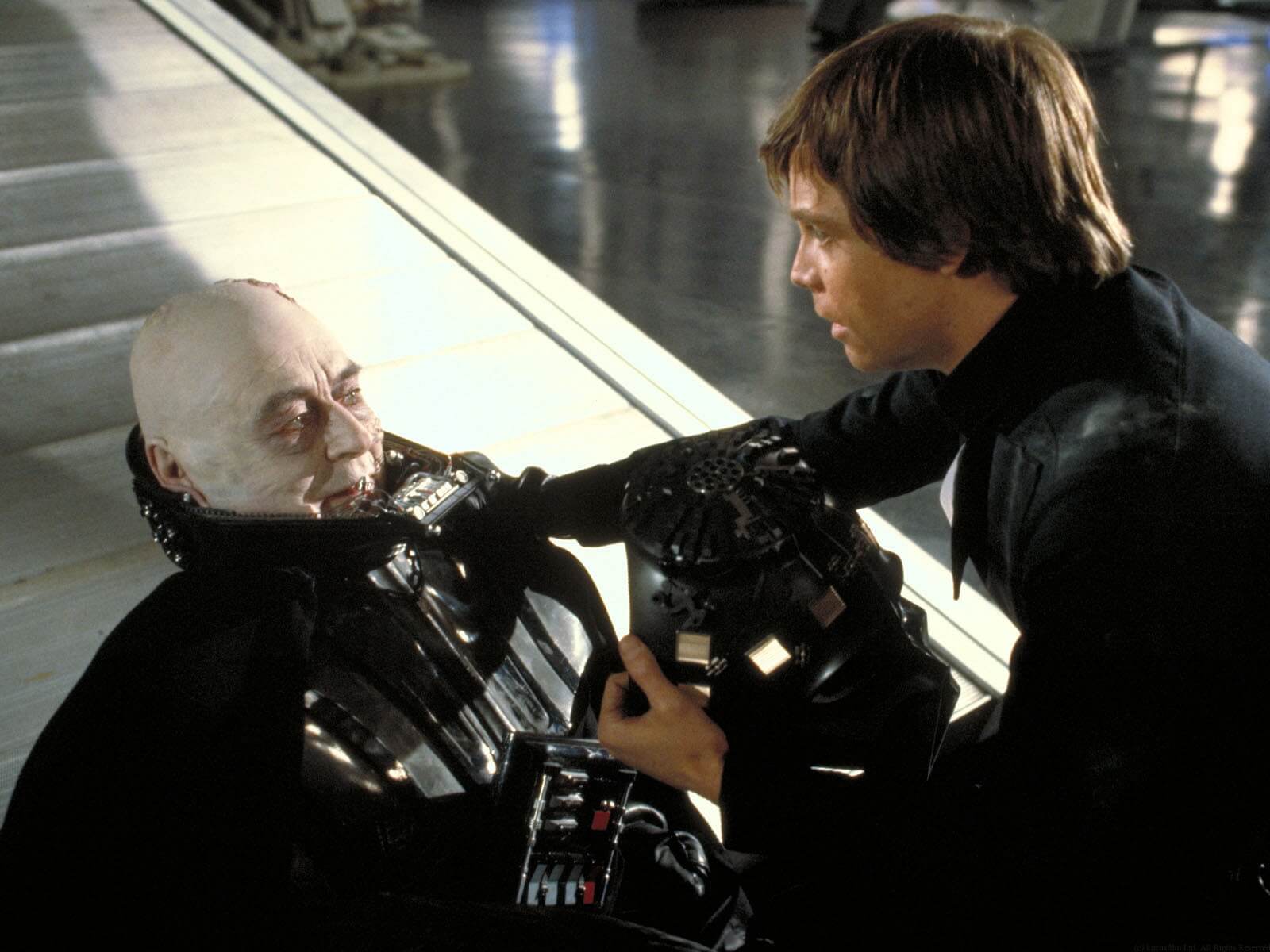

"Tell your sister... you were riiiiiiiiiight..."
Death of the hero, 10. apotheosis.
With a new sense of confidence and clarity we must then make our Hero deal with “apotheosis.” This is the stage of the Hero’s Journey where a greater perspective is achieved. Often embodied by a death of the Hero’s former self; where the old Frodo has died and the new one is born.
But this is sometimes interpreted as a more “a-ha!” moment — a breakthrough that leads to the narrative’s climax. This, too, can be tied to the death of Dumbledore and Harry’s reconciliation with the loss. This step is usually the final motivator for the Hero, driving the story into...
THe Hero Victorious
11. the ultimate boon.
This monomyth step is the physical climax of the story. This is often considered the MacGuffin of a film — the physical object that drives our Hero’s motivation. But it's a MacGuffin, to use Hitchcock's famous term, because ultimately... it doesn't matter.
In Pulp Fiction , we never find out what’s in the briefcase, but it’s the briefcase that led them on the wild journey. When we find out what “Rosebud” actually means, it simply forms a lynchpin to help us understand who Charles Foster Kane was. The mission is accomplished and the world can rest easy knowing that it is safe from evil.
The Hero's Journey Home
12. refusal of return.
Upon a successful completion of the Hero’s Journey, and a transformation into a different person, the Hero has a “refusal to return.” The Shire seems so boring now and the last thing Harry wants is to go back to that drawer under the stairs.
And, oftentimes, the return can be just as dangerous. This is the beginning of the third act of Campbell’s Hero’s Journey (known as the Return) and, while shorter, should still contain conflict. Our next step is an opportunity for that...
The Hero Transported
13. magic flight.
This is the point in the Hero’s Journey where they must get out alive, often requiring the help of individuals they met along the way. Dorothy still has to get back to Kansas, the solution to which may seem like a leap of faith.
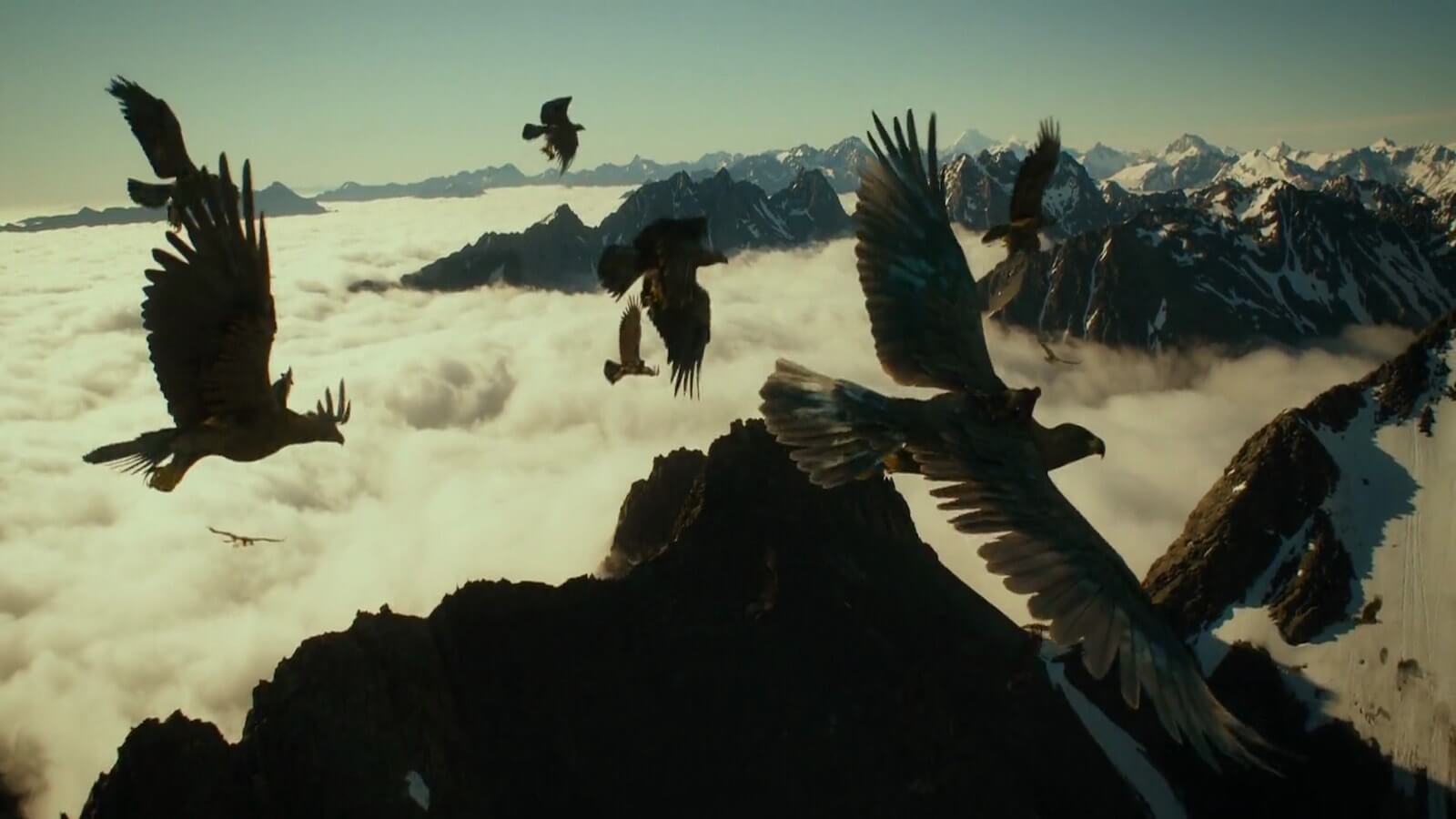
The eagles rescue from without with a magic flight to Frodo and friends
The hero's rescue, 14. rescue from without.
Bringing us to the “rescuers from without” point in the monomyth. Just because Frodo destroyed the one ring to rule them all doesn’t mean he gets a free ride back to the Shire. Remember those giant eagles we met a while back in act two? Well their back just in time!
Homeward Bound
15. crossing the return threshold.
Once the Hero is back home, it’s time to acknowledge their change in character. “Crossing the return threshold” is the stage in the monomyth where the hero has left the chaos of the outer world and return home.
But it's hard to adjust to the old world. Remember that scene where Frodo tried to enjoy a beer back at the shire? Hard to go back to normal when you essentially live with Dark Lord PTSD.
A Triumphant Return
16. master of two worlds.
The hero survived an adventure in the chaos realm, and now survives in the normal order realm. This makes him or her the master of two worlds. Not many people come back and live to tell the tale.
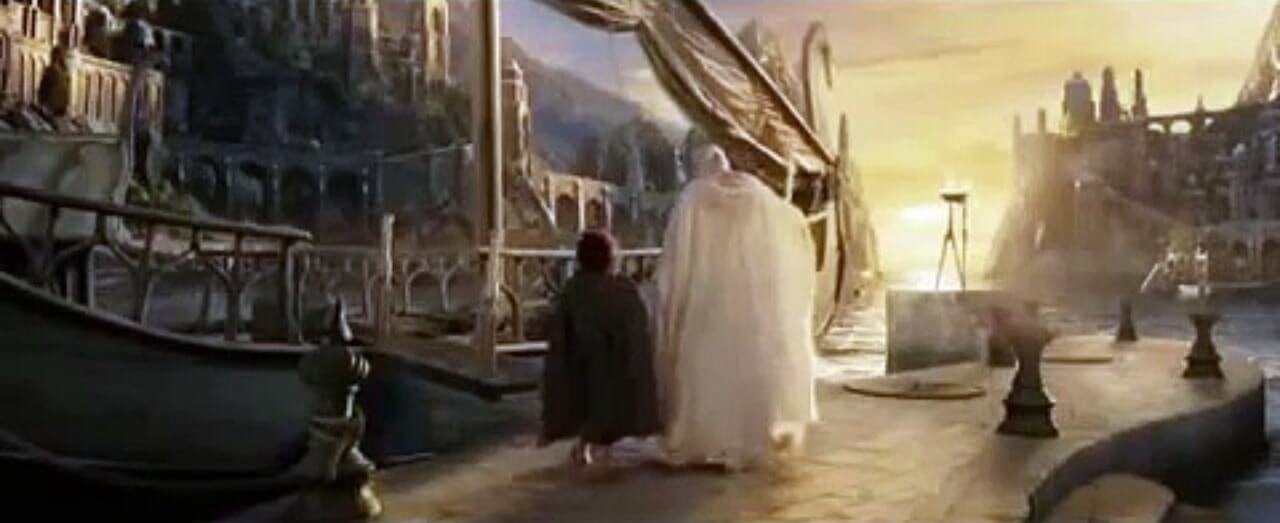
Frodo and Gandalf wandering off into the sunset post accomplishing their mission
Plus which, throughout the story, they’ve become someone much more capable and resilient than they were in act one. They've learned lessons, and brought what they learned home with them.
Whatever issues they may have had before embarking on this chaotic tale (often the ones preventing from taking the call to action) now pale in comparison with what they’ve been through.
It’s easier to deal with your annoying cousin, Dudley, after you’ve defeated Voldemort. This, in turn, leads to...
The New Status Quo
17. freedom to live.
In many ways the Hero's Journey is about death and rebirth. The story may manifest as the death of an aspect of character, and the birth of some new way of life. But the metaphor behind any story is one about mortality.
Change is constant. Hero's living through the Hero's Journey are models for us. Models that we can travers the constant change of existence, face our mortality, and continue. In a religious sense, and religions are all part of the monomyth, this is about the eternal spirit.
Look no farther than the prayer of St. Francis to understand this final step in the Hero's quest. "It is in dying that we are born to eternal life."
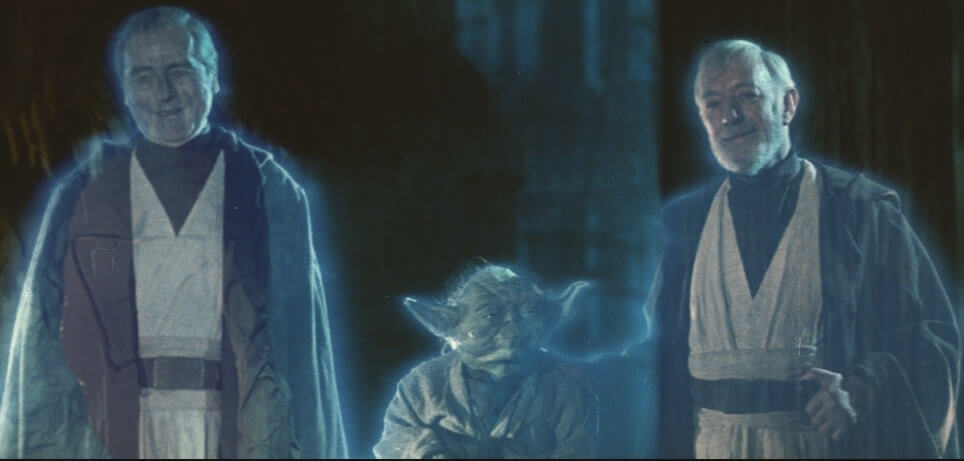
The Hero’s Journey Concludes
Cinematic heroes.
The monomyth is practically ubiquitous in Hollywood. As you’ve read earlier, Harry Potter , Star Wars , Lord of the Rings , and Citizen Kane all follow the Hero’s Journey. But, because this concept was built upon the foundations of major mythologies, it's truly a "tale as old as time."
Because Campbell discovered the Hero's Journey. He didn't make it up. Neither did those older myths. He realized as an anthropologist, that every culture all around the globe had the same story beats in all their myths.
Sure, some myths, and some movies, use 10 of the 17, or even just 5. But throughout human history, around the world, these story beats keep showing up. In cultures that had nothing to do with one another.
The Hero's Journey is a concept innate to being human.
And if remembering these 17 steps may seem a little daunting, fear not. Make sure to check out Dan Harmon's abridged 8-step variation of the Hero's Journey monomyth. Same structure, just made more digestible.
Dan Harmon’s Story Circle
Practically speaking, the Hero’s Journey is an excellent tool for structuring an outline in a clear and familiar way. It has the power to make your script much more powerful and emotionally resonant.
It’s circular, allowing for repeat adventures (which works well if you're learning how to write a TV pilot ) and each aspect drives the hero to the next. From the Goddess, the Hero finds temptation. From reconciling with the father, the Hero is now prepared for the final boon.
Story Circle • 8 Proven Steps to Better Stories
Using a Hero’s Journey worksheet can help you write a treatment or create a well-structured outline , which is a valuable tool for creating a strong first draft.
By putting in the 17 steps of the Hero’s Journey before building the outline, you can ensure that the writing process will flow smoothly and efficiently. Let us know in the comments how the monomyth has helped you craft a story that escalates with every beat to an exciting climax.
Up Next: Dan Harmon's Story Circle →
Write and produce your scripts all in one place..
Write and collaborate on your scripts FREE . Create script breakdowns, sides, schedules, storyboards, call sheets and more.
- Pricing & Plans
- Product Updates
- Featured On
- StudioBinder Partners
- The Ultimate Guide to Call Sheets (with FREE Call Sheet Template)
- How to Break Down a Script (with FREE Script Breakdown Sheet)
- The Only Shot List Template You Need — with Free Download
- Managing Your Film Budget Cashflow & PO Log (Free Template)
- A Better Film Crew List Template Booking Sheet
- Best Storyboard Softwares (with free Storyboard Templates)
- Movie Magic Scheduling
- Gorilla Software
- Storyboard That
A visual medium requires visual methods. Master the art of visual storytelling with our FREE video series on directing and filmmaking techniques.
We’re in a golden age of TV writing and development. More and more people are flocking to the small screen to find daily entertainment. So how can you break put from the pack and get your idea onto the small screen? We’re here to help.
- Making It: From Pre-Production to Screen
- TV Script Format 101 — Examples of How to Format a TV Script
- Best Free Musical Movie Scripts Online (with PDF Downloads)
- What is Tragedy — Definition, Examples & Types Explained
- What are the 12 Principles of Animation — Ultimate Guide
- What is Pacing in Writing — And Why It’s So Important
- 299 Facebook
- 238 Pinterest
- 12 LinkedIn
Holiday Savings
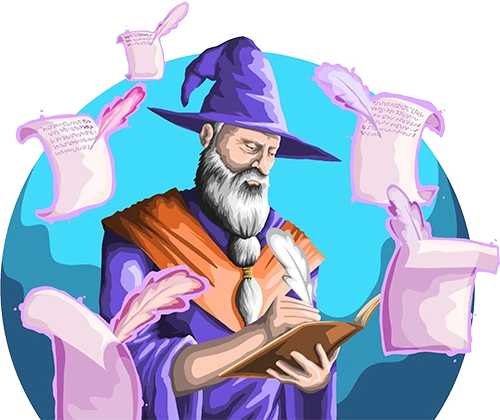
cui:common.components.upgradeModal.offerHeader_undefined
The hero's journey: a story structure as old as time, the hero's journey offers a powerful framework for creating quest-based stories emphasizing self-transformation..

Table of Contents
Holding out for a hero to take your story to the next level?
The Hero’s Journey might be just what you’ve been looking for. Created by Joseph Campbell, this narrative framework packs mythic storytelling into a series of steps across three acts, each representing a crucial phase in a character's transformative journey.
Challenge . Growth . Triumph .
Whether you're penning a novel, screenplay, or video game, The Hero’s Journey is a tried-and-tested blueprint for crafting epic stories that transcend time and culture. Let’s explore the steps together and kickstart your next masterpiece.
What is the Hero’s Journey?
The Hero’s Journey is a famous template for storytelling, mapping a hero's adventurous quest through trials and tribulations to ultimate transformation.

What are the Origins of the Hero’s Journey?
The Hero’s Journey was invented by Campbell in his seminal 1949 work, The Hero with a Thousand Faces , where he introduces the concept of the "monomyth."
A comparative mythologist by trade, Campbell studied myths from cultures around the world and identified a common pattern in their narratives. He proposed that all mythic narratives are variations of a single, universal story, structured around a hero's adventure, trials, and eventual triumph.
His work unveiled the archetypal hero’s path as a mirror to humanity’s commonly shared experiences and aspirations. It was subsequently named one of the All-Time 100 Nonfiction Books by TIME in 2011.
How are the Hero’s and Heroine’s Journeys Different?
While both the Hero's and Heroine's Journeys share the theme of transformation, they diverge in their focus and execution.
The Hero’s Journey, as outlined by Campbell, emphasizes external challenges and a quest for physical or metaphorical treasures. In contrast, Murdock's Heroine’s Journey, explores internal landscapes, focusing on personal reconciliation, emotional growth, and the path to self-actualization.
In short, heroes seek to conquer the world, while heroines seek to transform their own lives; but…
Twelve Steps of the Hero’s Journey
So influential was Campbell’s monomyth theory that it's been used as the basis for some of the largest franchises of our generation: The Lord of the Rings , Harry Potter ...and George Lucas even cited it as a direct influence on Star Wars .
There are, in fact, several variations of the Hero's Journey, which we discuss further below. But for this breakdown, we'll use the twelve-step version outlined by Christopher Vogler in his book, The Writer's Journey (seemingly now out of print, unfortunately).

You probably already know the above stories pretty well so we’ll unpack the twelve steps of the Hero's Journey using Ben Gates’ journey in National Treasure as a case study—because what is more heroic than saving the Declaration of Independence from a bunch of goons?
Ye be warned: Spoilers ahead!
Act One: Departure
Step 1. the ordinary world.
The journey begins with the status quo—business as usual. We meet the hero and are introduced to the Known World they live in. In other words, this is your exposition, the starting stuff that establishes the story to come.

National Treasure begins in media res (preceded only by a short prologue), where we are given key information that introduces us to Ben Gates' world, who he is (a historian from a notorious family), what he does (treasure hunts), and why he's doing it (restoring his family's name).
With the help of his main ally, Riley, and a crew of other treasure hunters backed by a wealthy patron, he finds an 18th-century American ship in the Canadian Arctic, the Charlotte . Here, they find a ship-shaped pipe that presents a new riddle and later doubles as a key—for now, it's just another clue in the search for the lost treasure of the Templars, one that leads them to the Declaration of Independence.
Step 2. The Call to Adventure
The inciting incident takes place and the hero is called to act upon it. While they're still firmly in the Known World, the story kicks off and leaves the hero feeling out of balance. In other words, they are placed at a crossroads.
Ian (the wealthy patron of the Charlotte operation) steals the pipe from Ben and Riley and leaves them stranded. This is a key moment: Ian becomes the villain, Ben has now sufficiently lost his funding for this expedition, and if he decides to pursue the chase, he'll be up against extreme odds.
Step 3. Refusal of the Call
The hero hesitates and instead refuses their call to action. Following the call would mean making a conscious decision to break away from the status quo. Ahead lies danger, risk, and the unknown; but here and now, the hero is still in the safety and comfort of what they know.
Ben debates continuing the hunt for the Templar treasure. Before taking any action, he decides to try and warn the authorities: the FBI, Homeland Security, and the staff of the National Archives, where the Declaration of Independence is housed and monitored. Nobody will listen to him, and his family's notoriety doesn't help matters.
Step 4. Meeting the Mentor
The protagonist receives knowledge or motivation from a powerful or influential figure. This is a tactical move on the hero's part—remember that it was only the previous step in which they debated whether or not to jump headfirst into the unknown. By Meeting the Mentor, they can gain new information or insight, and better equip themselves for the journey they might to embark on.

Abigail, an archivist at the National Archives, brushes Ben and Riley off as being crazy, but Ben uses the interaction to his advantage in other ways—to seek out information about how the Declaration of Independence is stored and cared for, as well as what (and more importantly, who) else he might be up against in his own attempt to steal it.
In a key scene, we see him contemplate the entire operation while standing over the glass-encased Declaration of Independence. Finally, he firmly decides to pursue the treasure and stop Ian, uttering the famous line, "I'm gonna steal the Declaration of Independence."
Act Two: Initiation
Step 5. crossing the threshold.
The hero leaves the Known World to face the Unknown World. They are fully committed to the journey, with no way to turn back now. There may be a confrontation of some sort, and the stakes will be raised.

Ben and Riley infiltrate the National Archives during a gala and successfully steal the Declaration of Independence. But wait—it's not so easy. While stealing the Declaration of Independence, Abigail suspects something is up and Ben faces off against Ian.
Then, when trying to escape the building, Ben exits through the gift shop, where an attendant spots the document peeking out of his jacket. He is forced to pay for it, feigning that it's a replica—and because he doesn't have enough cash, he has to use his credit card, so there goes keeping his identity anonymous.
The game is afoot.
Step 6. Tests, Allies, Enemies
The hero explores the Unknown World. Now that they have firmly crossed the threshold from the Known World, the hero will face new challenges and possibly meet new enemies. They'll have to call upon their allies, new and old, in order to keep moving forward.
Abigail reluctantly joins the team under the agreement that she'll help handle the Declaration of Independence, given her background in document archiving and restoration. Ben and co. seek the aid of Ben's father, Patrick Gates, whom Ben has a strained relationship with thanks to years of failed treasure hunting that has created a rift between grandfather, father, and son. Finally, they travel around Philadelphia deciphering clues while avoiding both Ian and the FBI.
Step 7. Approach the Innermost Cave
The hero nears the goal of their quest, the reason they crossed the threshold in the first place. Here, they could be making plans, having new revelations, or gaining new skills. To put it in other familiar terms, this step would mark the moment just before the story's climax.
Ben uncovers a pivotal clue—or rather, he finds an essential item—a pair of bifocals with interchangeable lenses made by Benjamin Franklin. It is revealed that by switching through the various lenses, different messages will be revealed on the back of the Declaration of Independence. He's forced to split from Abigail and Riley, but Ben has never been closer to the treasure.
Step 8. The Ordeal
The hero faces a dire situation that changes how they view the world. All threads of the story come together at this pinnacle, the central crisis from which the hero will emerge unscathed or otherwise. The stakes will be at their absolute highest here.
Vogler details that in this stage, the hero will experience a "death," though it need not be literal. In your story, this could signify the end of something and the beginning of another, which could itself be figurative or literal. For example, a certain relationship could come to an end, or it could mean someone "stuck in their ways" opens up to a new perspective.
In National Treasure , The FBI captures Ben and Ian makes off with the Declaration of Independence—all hope feels lost. To add to it, Ian reveals that he's kidnapped Ben's father and threatens to take further action if Ben doesn't help solve the final clues and lead Ian to the treasure.
Ben escapes the FBI with Ian's help, reunites with Abigail and Riley, and leads everyone to an underground structure built below Trinity Church in New York City. Here, they manage to split from Ian once more, sending him on a goose chase to Boston with a false clue, and proceed further into the underground structure.
Though they haven't found the treasure just yet, being this far into the hunt proves to Ben's father, Patrick, that it's real enough. The two men share an emotional moment that validates what their family has been trying to do for generations.
Step 9. Reward
This is it, the moment the hero has been waiting for. They've survived "death," weathered the crisis of The Ordeal, and earned the Reward for which they went on this journey.

Now, free of Ian's clutches and with some light clue-solving, Ben, Abigail, Riley, and Patrick keep progressing through the underground structure and eventually find the Templar's treasure—it's real and more massive than they could have imagined. Everyone revels in their discovery while simultaneously looking for a way back out.
Act Three: Return
Step 10. the road back.
It's time for the journey to head towards its conclusion. The hero begins their return to the Known World and may face unexpected challenges. Whatever happens, the "why" remains paramount here (i.e. why the hero ultimately chose to embark on their journey).
This step marks a final turning point where they'll have to take action or make a decision to keep moving forward and be "reborn" back into the Known World.
Act Three of National Treasure is admittedly quite short. After finding the treasure, Ben and co. emerge from underground to face the FBI once more. Not much of a road to travel back here so much as a tunnel to scale in a crypt.
Step 11. Resurrection
The hero faces their ultimate challenge and emerges victorious, but forever changed. This step often requires a sacrifice of some sort, and having stepped into the role of The Hero™, they must answer to this.

Ben is given an ultimatum— somebody has to go to jail (on account of the whole stealing-the-Declaration-of-Independence thing). But, Ben also found a treasure worth millions of dollars and that has great value to several nations around the world, so that counts for something.
Ultimately, Ben sells Ian out, makes a deal to exonerate his friends and family, and willingly hands the treasure over to the authorities. Remember: he wanted to find the treasure, but his "why" was to restore the Gates family name, so he won regardless.
Step 12. Return With the Elixir
Finally, the hero returns home as a new version of themself, the elixir is shared amongst the people, and the journey is completed full circle.
The elixir, like many other elements of the hero's journey, can be literal or figurative. It can be a tangible thing, such as an actual elixir meant for some specific purpose, or it could be represented by an abstract concept such as hope, wisdom, or love.
Vogler notes that if the Hero's Journey results in a tragedy, the elixir can instead have an effect external to the story—meaning that it could be something meant to affect the audience and/or increase their awareness of the world.
In the final scene of National Treasure , we see Ben and Abigail walking the grounds of a massive estate. Riley pulls up in a fancy sports car and comments on how they could have gotten more money. They all chat about attending a museum exhibit in Cairo (Egypt).
In one scene, we're given a lot of closure: Ben and co. received a hefty payout for finding the treasure, Ben and Abigail are a couple now, and the treasure was rightfully spread to those it benefitted most—in this case, countries who were able to reunite with significant pieces of their history. Everyone's happy, none of them went to jail despite the serious crimes committed, and they're all a whole lot wealthier. Oh, Hollywood.
Variations of the Hero's Journey
Plot structure is important, but you don't need to follow it exactly; and, in fact, your story probably won't. Your version of the Hero's Journey might require more or fewer steps, or you might simply go off the beaten path for a few steps—and that's okay!

What follows are three additional versions of the Hero's Journey, which you may be more familiar with than Vogler's version presented above.
Dan Harmon's Story Circle (or, The Eight-Step Hero's Journey)
Screenwriter Dan Harmon has riffed on the Hero's Journey by creating a more compact version, the Story Circle —and it works especially well for shorter-format stories such as television episodes, which happens to be what Harmon writes.
The Story Circle comprises eight simple steps with a heavy emphasis on the hero's character arc:
- The hero is in a zone of comfort...
- But they want something.
- They enter an unfamiliar situation...
- And adapt to it by facing trials.
- They get what they want...
- But they pay a heavy price for it.
- They return to their familiar situation...
- Having changed.
You may have noticed, but there is a sort of rhythm here. The eight steps work well in four pairs, simplifying the core of the Hero's Journey even further:
- The hero is in a zone of comfort, but they want something.
- They enter an unfamiliar situation and have to adapt via new trials.
- They get what they want, but they pay a price for it.
- They return to their zone of comfort, forever changed.
If you're writing shorter fiction, such as a short story or novella, definitely check out the Story Circle. It's the Hero's Journey minus all the extraneous bells & whistles.
Ten-Step Hero's Journey
The ten-step Hero's Journey is similar to the twelve-step version we presented above. It includes most of the same steps except for Refusal of the Call and Meeting the Mentor, arguing that these steps aren't as essential to include; and, it moves Crossing the Threshold to the end of Act One and Reward to the end of Act Two.
- The Ordinary World
- The Call to Adventure
- Crossing the Threshold
- Tests, Allies, Enemies
- Approach the Innermost Cave
- The Road Back
- Resurrection
- Return with Elixir
We've previously written about the ten-step hero's journey in a series of essays separated by act: Act One (with a prologue), Act Two , and Act Three .
Twelve-Step Hero's Journey: Version Two
Again, the second version of the twelve-step hero's journey is very similar to the one above, save for a few changes, including in which story act certain steps appear.
This version skips The Ordinary World exposition and starts right at The Call to Adventure; then, the story ends with two new steps in place of Return With Elixir: The Return and The Freedom to Live.
- The Refusal of the Call
- Meeting the Mentor
- Test, Allies, Enemies
- Approaching the Innermost Cave
- The Resurrection
- The Return*
- The Freedom to Live*
In the final act of this version, there is more of a focus on an internal transformation for the hero. They experience a metamorphosis on their journey back to the Known World, return home changed, and go on to live a new life, uninhibited.
Seventeen-Step Hero's Journey
Finally, the granddaddy of heroic journeys: the seventeen-step Hero's Journey. This version includes a slew of extra steps your hero might face out in the expanse.
- Refusal of the Call
- Supernatural Aid (aka Meeting the Mentor)
- Belly of the Whale*: This added stage marks the hero's immediate descent into danger once they've crossed the threshold.
- Road of Trials (...with Allies, Tests, and Enemies)
- Meeting with the Goddess/God*: In this stage, the hero meets with a new advisor or powerful figure, who equips them with the knowledge or insight needed to keep progressing forward.
- Woman as Temptress (or simply, Temptation)*: Here, the hero is tempted, against their better judgment, to question themselves and their reason for being on the journey. They may feel insecure about something specific or have an exposed weakness that momentarily holds them back.
- Atonement with the Father (or, Catharthis)*: The hero faces their Temptation and moves beyond it, shedding free from all that holds them back.
- Apotheosis (aka The Ordeal)
- The Ultimate Boon (aka the Reward)
- Refusal of the Return*: The hero wonders if they even want to go back to their old life now that they've been forever changed.
- The Magic Flight*: Having decided to return to the Known World, the hero needs to actually find a way back.
- Rescue From Without*: Allies may come to the hero's rescue, helping them escape this bold, new world and return home.
- Crossing of the Return Threshold (aka The Return)
- Master of Two Worlds*: Very closely resembling The Resurrection stage in other variations, this stage signifies that the hero is quite literally a master of two worlds—The Known World and the Unknown World—having conquered each.
- Freedom to Live
Again, we skip the Ordinary World opening here. Additionally, Acts Two and Three look pretty different from what we've seen so far, although, the bones of the Hero's Journey structure remain.
The Eight Hero’s Journey Archetypes
The Hero is, understandably, the cornerstone of the Hero’s Journey, but they’re just one of eight key archetypes that make up this narrative framework.

In The Writer's Journey , Vogler outlined seven of these archetypes, only excluding the Ally, which we've included below. Here’s a breakdown of all eight with examples:
1. The Hero
As outlined, the Hero is the protagonist who embarks on a transformative quest or journey. The challenges they overcome represent universal human struggles and triumphs.
Vogler assigned a "primary function" to each archetype—helpful for establishing their role in a story. The Hero's primary function is "to service and sacrifice."
Example: Neo from The Matrix , who evolves from a regular individual into the prophesied savior of humanity.
2. The Mentor
A wise guide offering knowledge, tools, and advice, Mentors help the Hero navigate the journey and discover their potential. Their primary function is "to guide."
Example: Mr. Miyagi from The Karate Kid imparts not only martial arts skills but invaluable life lessons to Daniel.
3. The Ally
Companions who support the Hero, Allies provide assistance, friendship, and moral support throughout the journey. They may also become a friends-to-lovers romantic partner.
Not included in Vogler's list is the Ally, though we'd argue they are essential nonetheless. Let's say their primary function is "to aid and support."
Example: Samwise Gamgee from Lord of the Rings , a loyal friend and steadfast supporter of Frodo.
4. The Herald
The Herald acts as a catalyst to initiate the Hero's Journey, often presenting a challenge or calling the hero to adventure. Their primary function is "to warn or challenge."
Example: Effie Trinket from The Hunger Games , whose selection at the Reaping sets Katniss’s journey into motion.
5. The Trickster
A character who brings humor and unpredictability, challenges conventions, and offers alternative perspectives or solutions. Their primary function is "to disrupt."
Example: Loki from Norse mythology exemplifies the trickster, with his cunning and chaotic influence.
6. The Shapeshifter
Ambiguous figures whose allegiance and intentions are uncertain. They may be a friend one moment and a foe the next. Their primary function is "to question and deceive."
Example: Catwoman from the Batman universe often blurs the line between ally and adversary, slinking between both roles with glee.
7. The Guardian
Protectors of important thresholds, Guardians challenge or test the Hero, serving as obstacles to overcome or lessons to be learned. Their primary function is "to test."
Example: The Black Knight in Monty Python and the Holy Grail literally bellows “None shall pass!”—a quintessential ( but not very effective ) Guardian.
8. The Shadow
Represents the Hero's inner conflict or an antagonist, often embodying the darker aspects of the hero or their opposition. Their primary function is "to destroy."
Example: Zuko from Avatar: The Last Airbender; initially an adversary, his journey parallels the Hero’s path of transformation.
While your story does not have to use all of the archetypes, they can help you develop your characters and visualize how they interact with one another—especially the Hero.
For example, take your hero and place them in the center of a blank worksheet, then write down your other major characters in a circle around them and determine who best fits into which archetype. Who challenges your hero? Who tricks them? Who guides them? And so on...
Stories that Use the Hero’s Journey
Not a fan of saving the Declaration of Independence? Check out these alternative examples of the Hero’s Journey to get inspired:
- Epic of Gilgamesh : An ancient Mesopotamian epic poem thought to be one of the earliest examples of the Hero’s Journey (and one of the oldest recorded stories).
- The Lion King (1994): Simba's exile and return depict a tale of growth, responsibility, and reclaiming his rightful place as king.
- The Alchemist by Paolo Coehlo: Santiago's quest for treasure transforms into a journey of self-discovery and personal enlightenment.
- Coraline by Neil Gaiman: A young girl's adventure in a parallel world teaches her about courage, family, and appreciating her own reality.
- Kung Fu Panda (2008): Po's transformation from a clumsy panda to a skilled warrior perfectly exemplifies the Hero's Journey. Skadoosh!
The Hero's Journey is so generalized that it's ubiquitous. You can plop the plot of just about any quest-style narrative into its framework and say that the story follows the Hero's Journey. Try it out for yourself as an exercise in getting familiar with the method.
Will the Hero's Journey Work For You?
As renowned as it is, the Hero's Journey works best for the kinds of tales that inspired it: mythic stories.
Writers of speculative fiction may gravitate towards this method over others, especially those writing epic fantasy and science fiction (big, bold fantasy quests and grand space operas come to mind).
The stories we tell today are vast and varied, and they stretch far beyond the dealings of deities, saving kingdoms, or acquiring some fabled "elixir." While that may have worked for Gilgamesh a few thousand years ago, it's not always representative of our lived experiences here and now.
If you decide to give the Hero's Journey a go, we encourage you to make it your own! The pieces of your plot don't have to neatly fit into the structure, but you can certainly make a strong start on mapping out your story.
Hero's Journey Campfire Template
The Timeline Module in Campfire offers a versatile canvas to plot out each basic component of your story while featuring nested "notebooks."

Simply double-click on each event card in your timeline to open up a canvas specific to that card. This allows you to look at your plot at the highest level, while also adding as much detail for each plot element as needed!
If you're just hearing about Campfire for the first time, it's free to sign up—forever! Let's plot the most epic of hero's journeys 👇
Lessons From the Hero’s Journey
The Hero's Journey offers a powerful framework for creating stories centered around growth, adventure, and transformation.
If you want to develop compelling characters, spin out engaging plots, and write books that express themes of valor and courage, consider The Hero’s Journey your blueprint. So stop holding out for a hero, and start writing!
Does your story mirror the Hero's Journey? Let us know in the comments below.

Hero's Journey
Ever notice that every blockbuster movie has the same fundamental pieces? A hero, a journey, some conflicts to muck it all up, a reward, and the hero returning home and everybody applauding his or her swag? Yeah, scholar Joseph Campbell noticed first—in 1949. He wrote The Hero with a Thousand Faces , in which he outlined the 17 stages of a mythological hero's journey.
About half a century later, Christopher Vogler condensed those stages down to 12 in an attempt to show Hollywood how every story ever written should—and, uh, does —follow Campbell's pattern. We're working with those 12 stages, so take a look. (P.S. Want more? We have an entire Online Course devoted to the hero's journey.)
Ordinary World
Harry spends his summers in the Muggle world where he has to put up with constant harassment from his cousin, Dudley.
Call To Adventure
When Harry and Dudley are attacked by dementors, Harry manages to fight them off. Woo-hoo—Harry's a hero.
Refusal Of The Call
Not quite. Harry receives a letter from the Ministry of Magic informing him that he's being expelled from Hogwarts. Wow. This is gonna be a short movie.
Meeting The Mentor
Harry is whisked away to a safe house in London by members of the Order of the Phoenix—a secret society fighting Voldemort. Dumbledore also swoops in and saves Harry from expulsion. Old mentors die hard.
Crossing The Threshold
Choo-cho: all aboard the Hogwarts Express. There, Harry realizes that he can see magical creatures called Thestrals for the first time because he has witnessed a person dying. The boy's all grown up now.
Tests, Allies, Enemies
At Hogwarts, Harry finds out he has many enemies—namely Dolores Umbridge and Cornelius Fudge, who think he's lying about Voldemort being back. But he's got friends, too. Harry starts teaching a Defense Against the Dark Arts club in his spare time called Dumbledore's Army.
Approach To The Inmost Cave
One day, Harry sees a vision of his godfather, Sirius Black, being tortured and knows he needs to go to the Ministry of Magic to rescue him.
He'll have to get through Umbridge first. When she catches Harry and his friends trying to escape through the Floo Network in her office, they trick her into going to the Forbidden Forest and a herd of centaurs carry her off. Professor Umbridge really does hate children.
Reward (Seizing The Sword)
Harry and friends make it to the Ministry of Magic to save Sirius but he's not there. Instead they find a glowing white orb with Harry's name on it…which turns out to be a prophecy which explains his connection to Voldemort…that the Death Eaters are after. Oops.
The Road Back
Harry escapes the Hall of Prophecies and is joined by Sirius and other members of the Order of the Phoenix. Just when the fight with the Death Eaters is going their way, Sirius is killed by Bellatrix Lestrange.
Resurrection
In the main hall of the Ministry of Magic, Dumbledore and Voldemort battle it out. In the end, Voldemort possesses Harry but Harry manages to fight him off with all the love and friendship he feels in his heart. Seriously, Voldemort hates hugs.
Return With The Elixir
Harry and friends head home for the summer with the knowledge that their fight against Voldemort is a gonna be a real pain in the butt.
Tired of ads?
Logging out…, logging out....
You've been inactive for a while, logging you out in a few seconds...
W hy's T his F unny?
The Approach to the Inmost Cave: How to Write This Scene in the Hero’s Journey
by David Safford | 0 comments
Free Book Planning Course! Sign up for our 3-part book planning course and make your book writing easy . It expires soon, though, so don’t wait. Sign up here before the deadline!
Every great heroic story has that moment. It's the deep breath before the plunge. The quiet before the calamity. If you're writing a Hero's Journey story, you'll want to include this moment, too: the Approach and Ordeal. Or, the Approach to the Inmost Cave.
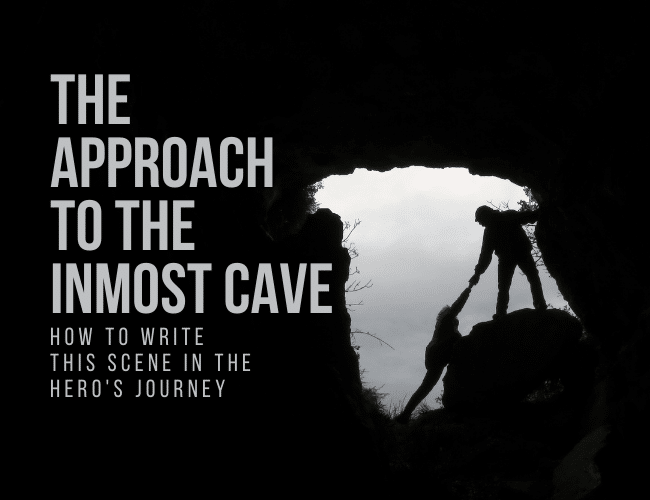
The Approach and Ordeal are essential moments you need to plan for as you draft your story. And to do it right, you're going to need to figure out three key elements:
- Your Story's Shadow
- The Task to Complete
Let's explore each of these and talk about how they will take your story from “Meh” to “Amazing!”
Step 7: Approach to the Inmost Cave
This step can take many shapes depending on the story's genre and world. However, no matter where your story takes place, this definition applies:
The Approach is a moment of nervous contemplation before the massive Ordeal the hero must face. It is often a moment of final preparation, confession of secrets and fears, and abandonment by uncommitted companions, leaving the hero uncertain and isolated.
If you're outlining the Approach to the Inmost Cave scene for your story, you must keep the Ordeal, or the Climax, in mind. They are two halves of the whole, and one must keep both in mind when planning. However, in order to plan, you need to also understand the purpose of each (and how they work together).
For today, let's focus on the Approach to the Inmost Cave. And if you'd like to learn more about the Ordeal than what's discussed in this article, read about the Ordeal here .
How Did We Get Here?
As a quick refresher, the Hero's Journey is a storytelling theory by Joseph Campbell.
Refined by Christopher Vogler into a convenient twelve-step process, the Hero's Journey begins when the hero starts humbly ( Ordinary World ) and then experiences a Call to Adventure. The hero refuses that call, and finds themself encouraged and trained by a Mentor .
Next, through a combination of will and force, the hero steps over the boundary between safety and danger, the Threshold , and begins their journey in a world of Trials, Allies, and Enemies .
This usually brings you about two-thirds of the way through your story, up to the moment you've been waiting for: the Climax.
But before every Climax, a story needs an Approach to the Inmost Cave moment.
Step #7: Approach to the Inmost Cave
Before every climactic action scene is a deep breath. Sometimes portrayed as beginning with a montage or training scene, this scene is the moment when the Hero pauses, considers all that is at Stake in order to defeat the Shadow , and then soldiers onward.
This, in Christopher Vogler's words, is called the “Approach to the Inmost Cave.”
This moment is essential, and captures the universal human emotion of fear. All heroes experience some kind of fear, whether it's fear of death, failure, or the unknown. But before any great campaign against evil, there must be an Approach.
And with an Approach, comes a Hero's Ordeal (step eight in the Hero's Journey).
The Ordeal is the scene when your hero must complete a deadly task, putting everything that's at stake on the line, and ultimately confront the Shadow. This moment is the eighth step in the Hero's Journey, and comes directly after the Approach to the Inmost Cave.
Before this moment, though, you need a scene where the hero approaches the awaiting, climatic feat.
If you want to increase the tension and raise stakes in the Climax, you first need to write a scene that creates that calm before the storm. To do this, you need an Approach to the Inmost Cave scene that upholds three core elements.
3 Core Elements in the Approach to the Inmost Cave
In the Ordeal, the Hero confronts the Shadow and makes ultimate choices. This moment is thrilling, often action-packed, and offers the highest-stakes. However, the moment before this scene can't do the same thing. Instead there needs to be a brief, calm moment before plunging the Hero into battle.
Without this pause, the story won't elevate the suspense and tension. To get here, you're going to need to plan three storytelling elements:
- A Shadow character
- High stakes for success/failure
- A nearly-impossible task associated with the Shadow
With these elements in-hand, you'll be able to craft the next two steps of the Hero's Journey: The Approach (this article) and the Ordeal .
Let's start with the Shadow.
1. The Shadow: Get Your Villain Right
Joseph Campbell identified an archetypal character who appears in almost every heroic myth: The Shadow.
The Shadow is often called the villain. But what is more important is that they are a darker version of the hero.
Belloc, the greedy archeologist who steals from Indiana Jones in Raiders of the Lost Ark , says to him, “I am but a shadowy reflection of you.” For the Shadow to work, they need to be the “bad” version of what makes the Hero good.
Here are some elements that are often similar between Hero and Shadow:
- Physicality
- Background, family, and/or culture
However, other elements must be in opposition, otherwise there will be no reason to call your Hero “good” and the Shadow “evil.” Some include:
- Leadership style
- Physical strengths
- Belief in “freedom” or some other positive societal value
- Opinions on physical violence
When the Hero and Shadow share several characteristics , this gives them reason to threaten one another and even consider teaming up.
In fact, you've probably seen the scene where the Villain invites the Hero to join them a thousand times:
- Darth Vader to Luke Skywalker in Star Wars
- Voldemort to Harry Potter in Harry Potter and the Sorcerer's Stone
- Magneto to Professor X (or other X-Men heroes) in the X-Men
They don't just share physical traits though; what must be common are deeply held beliefs about the central conflict.
Digging deeper into Star Wars, both Luke and Vader possess strongly held views on one essential element of the narrative: The Force.
Should the Force be used for “good,” or wisdom and defense, as Yoda teaches? Or should it be used for power, strength, and control, as The Emporer declares?
This life crisis is what gives Star Wars it's true power. It isn't just that Vader is Luke's father — it's that Luke's father is wedded to evil and all its virtues, and Luke fears what that means for his own life.
Without a shared trait like this, there'd be no reason for intense internal conflict. There would only be stark opposition, and the relationship would never find any depth.
And this is what readers love.
They may claim to love action or conflict, but what they really love is intense internal conflict within the hero. It's your job to create it.
So as you plan the latter sections of your heroic journey, make sure you get your Shadow right by designing shared traits with your Hero to keep things interesting.
2. The Stakes: Make Them Both Specific and General
When the time comes for the Hero to face the Shadow late in the journey, the stakes need to be higher than ever.
This has to be true specifically, for the hero themself, and it has to be true generally, for the world at large and the cast of characters you've put around the Hero.
No heroic journey is about the Hero alone, as every hero symbolizes a greater societal value: Hope. Freedom. Faith.
Yet the Hero must also have plenty to lose as well. That's why it's your job to place difficult hurdles before them, especially during this climactic event in the story.
Take the example of the Harry Potter books.
From a point of view perspective, the books are incredibly intimate, taking the reader inside Harry's tortured mind and lonely soul. Yet his epic adventures have worldwide consequences as he must confront the rising evil of the Dark Lord Voldemort.
If Voldemort wins, the bigotry of “pure blood” magic will win and wreak havoc on both the magical world and the realm of unsuspecting Muggles. Harry's character arc isn't just about him dealing with a big baddie; it's about saving two entire worlds from Lord Voldemort and his minions.
This is what heroes do: They go in place of the people and face a most ultimate form of death. They put their own skin on the line, but their actions have universal impact.
That's what makes them so beloved when they win, and so worshiped when they suffer and die.
As you plan this climactic moment when Hero and Shadow finally clash, make sure the stakes — both local to the hero and general to the world — are at their peak intensity.
3. The Task: Challenging and Unidirectional
Whatever the Hero must do to pursue their ultimate goal, there must be a massive task to accomplish.
Examples include:
- Storming a castle
- Surviving a death match
- Escaping from a monster
- Winning a fight
- Delivering a great audition
These are the kinds of tasks we write poetry and songs about. These are the kinds of events that Lego builds toys about (except the audition/interview, of course).
There are two aspects of your confrontational task that must be incorporated into the design in order for them to be successful: Challenge and Direction.
First, the Task must be incredibly challenging.
It must be so challenging that your hero could not have succeeded in the first fifty percent of the book, and there's doubt whether or not they can succeed even now. It must be so challenging that the hero, or their companions, suffer to achieve it.
In this instance, consider The Hunger Games. One could argue that the games themselves represent the entire “Ordeal” stage of Katniss's hero's journey. It's not a common story structure, but it works in the world author Suzanne Collins is creating.
In the games, Katniss faces a monumental challenge: Defeat twenty-three other tributes, some from bloodthirsty Districts determined to capture victory. One of those tributes, of course, is her professed lover, Peta Malark. No easy task!
Note that the framing of the story shows Katniss approach the inmost cave, or the games, as she waits in the preparation room before rising into the arena. She and Peta eventually take revenge in a literal cave during the most critical moment when they are both injured and badly need medicine.
Not all stories prolong the Ordeal like Collins does. Others are brief but intense events, like an action or chase scene.
As an example of storming the castle, a common task in all sorts of stories from Game of Thrones to James Bond, the Shadow will lurk in a fortress with the object of desire (maybe a princess, a throne, a weapon, etc). In order to win the day (and prevent the awful Stakes from befalling humanity), the hero must infiltrate the castle, obtain the object of desire, and escape.
If you want this scene to be convincing, you can't have your hero sneak (or fight) in, grab the goods, and flee unscathed—at least not in this part of the Hero's Journey. You can get away with it as an opening bit (like in a Bond movie), but NOT as the climactic battle.
The Task must be overwhelmingly expensive in sweat and blood. The Shadow and their evil cannot be overcome with ease. Otherwise you'll lose your reader's catharsis and compassion.
Second, the Task must be unidirectional.
In other words, there can be no turning back. The consequences for even starting must be immediate. Everything must change. This is the turning point in your story.
So what needs to change?
Usually these elements must transform the hero and their world:
- The Hero no longer doubts the mission and will pursue it to the end
- The Shadow no longer exhibits patience or mercy and will do anything to destroy the Hero
- The world reacts to the Hero's choices: Evil creatures begin to actively hunt the Hero, good creatures actively protect the Hero
- The object of desire is moved, destroyed, or transformed somehow
Consider yet another example:
Pixar's Toy Story. Woody and Buzz's major challenge is to escape the hellscape that is Sid's bedroom. They do so, but emerge to a changed world.
Their Ordinary World, Andy's bedroom, is no longer where it used to be. It is in a moving truck, rolling away from them with great speed. They have emerged from their trial only to find that all is not well anymore, and the story continues from there.
Consider, finally, this last note. After the climactic scene between Hero and Shadow, the object of desire is often transformed in a way that alters the rest of the action. It all depends on what the particular MacGuffin is.
Often it is revealed that the desired object wasn't anything special at all, forcing the hero to reconsider their goals and priorities.
Often a key character is killed during the Ordeal, heightening the stakes and lessening the desireability of the goal itself. These crises are what make hero's journeys powerful, and don't be afraid to throw your hero to the wolves in the final act of your tale.
No matter what object of desire your Hero is pursuing, the climactic moment must change everything. There is no turning back. The choice must be unidirectional.
Bring it All Together
These three elements will help you plan steps seven and eight of the Hero's Journey. Let's bring them together to form a powerful one-two punch in the climax of your story.
Remember that your Shadow must represent all the evil and selfishness that your Hero fears. That Shadow must have the potential to ruin everything the Hero holds dear. And the Task set before the Hero must be monumental and seemingly impossible to achieve.
These elements, when properly designed and blended, will yield an incredible climax that your reader will love.
What are your favorite Hero's Journey Approach and Ordeal scenes from books and movies you love? Can you find these elements in them? Let us know in the comments .
Take fifteen minutes to freewrite a scene where a hero contemplates facing an ordeal ahead. Don't worry about the specifics; instead, lean into the emotional challenge of facing the coming challenges. Here are some to inspire you as dream up a scenario:
- Your Hero's “Shadow” character: What traits might your Hero and the Shadow have in common? What separates them and makes them enemies?
- The Stakes involved: What could your Hero have to risk in order to defeat the Shadow and any other threat to the world?
- The Task: What incredibly challenging feat might the Hero have to accomplish in order to successfully confront the Shadow?
Post your writing in the Practice box, then find another writer's plan and leave a helpful comment on it!
David Safford
You deserve a great book. That's why David Safford writes adventure stories that you won't be able to put down. Read his latest story at his website. David is a Language Arts teacher, novelist, blogger, hiker, Legend of Zelda fanatic, puzzle-doer, husband, and father of two awesome children.

Submit a Comment Cancel reply
Your email address will not be published. Required fields are marked *
Submit Comment
Join over 450,000 readers who are saying YES to practice. You’ll also get a free copy of our eBook 14 Prompts :
Popular Resources
Book Writing Tips & Guides Creativity & Inspiration Tips Writing Prompts Grammar & Vocab Resources Best Book Writing Software ProWritingAid Review Writing Teacher Resources Publisher Rocket Review Scrivener Review Gifts for Writers
Books By Our Writers

You've got it! Just us where to send your guide.
Enter your email to get our free 10-step guide to becoming a writer.
You've got it! Just us where to send your book.
Enter your first name and email to get our free book, 14 Prompts.
Want to Get Published?
Enter your email to get our free interactive checklist to writing and publishing a book.

20 Magical Movies Like Harry Potter to Watch Next
T he holiday season is all about having fun. What can be more fun than getting under your coziest blanket and having a glorious Harry Potter movie marathon? The Harry Potter franchise is a winter staple nowadays, and no matter how many times we watch the series, we can't seem to get enough. The films follow a young Harry (Daniel Radcliffe) as he moves through each year at Hogwarts School of Witchcraft and Wizardry, where he faces some of the darkest and most threatening forces in the Wizarding World.
The Harry Potter franchise is one of history's most immersive and complex film franchises. With that, the magic, fun, and nostalgia attached to it are something we all search for beyond the confines of the films themselves. There are many films out there that create the same allure as Harry Potter , from the fantastical sense of adventure to the coming-of-age themes. Come with us as we explore more films and franchises that harness the same sense of magic as the Harry Potter franchise once did.
Fantastic Beasts Franchise (2016-2022)
Starting off on the most predictable foot, the Fantastic Beasts prequel spin-off series is the closest you can get to just watching the Harry Potter films. This series takes place in the same universe as the Harry Potter films, but decades before its events. Fantastic Beasts and Where to Find Them came out in 2016, followed by The Crimes of Grindelwald in 2018 and The Secrets of Dumbledore in 2022. These films follow the adventures of one Newt Scamander, played by Eddie Redmayne, and explore the deep lore surrounding the intricate history of the Wizarding World.
What Makes It Great
Although the Fantastic Beasts franchise fell short of recreating the magic of the original Harry Potter series, some of the elements we all know and love are expanded upon. Some of the slang is there, some creatures and spells are familiar, and if diving deep into Harry Potter history is your thing, the Fantastic Beasts series is the perfect next watch for you. What these films have going for them is the nostalgia factor through and through. Stream on Max
The Chronicles of Narnia: The Lion, the Witch, and the Wardrobe (2005)
The chronicles of narnia: the lion, the witch and the wardrobe.
Release Date 2005-12-07
Director Andrew Adamson
Cast Anna Popplewell, Tilda Swinton, Skandar Keynes, Georgie Henley, James McAvoy, William Moseley
Main Genre Adventure
Part of Harry Potter 's magic falls upon the fantasy adventure aspect, especially since it is primarily set in its own intricate world. Another book-to-film adaptation that takes this level of adventure and magical fantasy to a whole new level is The Chronicles of Narnia: The Lion, the Witch, and the Wardrobe .
This 2005 film follows the four Pevensie siblings as they flee their home in the midst of World War II. In their new home, the youngest sibling, Lucy (Georgie Henley), stumbles upon a wardrobe that transports her and her siblings into the magical land of Narnia where they are destined to fight the White Witch, played by Tilda Swinton.
The Chronicles of Narnia: The Lion, the Witch, and the Wardrobe is the perfect post- Harry Potter watch. There are mystical creatures, a magic system, epic action sequences, and four interlocked coming-of-age stories. The Narnia franchise perfected the young adult fantasy genre, and this film delivers every sense of nostalgia and wonder you could want. With more buzz surrounding Greta Gerwig's upcoming adaptation , the time is now to revisit Narnia. Stream on Hulu and Disney+
The Sorcerer's Apprentice (2010)
The sorcerer's apprentice.
Release Date 2010-07-13
Director Jon Turteltaub
Cast Jay Baruchel, Alfred Molina, Toby Kebbell, Nicolas Cage, Ethan Peck, Monica Bellucci
Main Genre Action
Magic has always been at the center of what makes Harry Potter special. Well, take a young kid and toss him into a world of magic he once thought impossible, and you get a story like The Sorcerer's Apprentice . Starring Nicolas Cage as the mentor, Balthazar Blake, and Jay Baruchel as the apprentice, David Stutler, this film is a magical journey you want to go on. We follow David's apprenticeship as he harnesses the beginnings of his sorcery talents. Along the way, he finds his life in danger and a love story that could complicate things.
The Sorcerer's Apprentice is not presented as the kind of fantasy film that would seemingly stand out. However, a pleasant surprise, the film is entirely wholesome and full of charm. The cast is charismatic, and with such an adventurous and goofy plot, this film is just a lot of fun magic that makes it a great pick after the Harry Potter films. Stream on Disney+
Percy Jackson Franchise (2010-2013)
In the era where YA book-to-film adaptations were all the rage, and we got masterpieces like The Hunger Games, Divergent, and Maze Runner , we also got the Percy Jackson series. These films are adaptations of the book series by Rick Riordan. The first film, Percy Jackson & the Olympians: The Lightning Thief , follows Percy (Logan Lerman) when he finds out that he is a demigod with a mortal mother and Poseidon as his father. He is brought to Camp Half-Blood to learn the tricks of the trade and ends up encountering some new friends and foes that drag him into some dangerous adventures.
Mystical bloodlines, magic, and Greek mythology are a great jump from the Harry Potter series. The Percy Jackson films were not exactly what fans wanted in an adaptation, as they fell short in some aspects. However, the deep love for Lerman's portrayal of Percy Jackson was never questioned. With the upcoming Disney+ series reboot, which is full of promise and a young and bright-eyed cast, the Percy Jackson films are a great way to introduce yourself to the world. Stream on Disney+
Miss Peregrine's Home for Peculiar Children (2016)
2016's Miss Peregrine's Home for Peculiar Children is a fantasy adventure film that somehow manages to utilize its own peculiarities to stand in the same realm as Harry Potter . The film follows a young boy named Jake, who comes across the magical Miss Peregrine's School for Peculiar Children. Here, Jake learns that the other children there have a unique set of powers. He is now on a journey to discover his own in order to save the day.
This Tim Burton film is as mystical and magical as it is quirky and sometimes dark. There is a sense of mystery that envelopes this movie's plot, roping us into a world unknown much like Harry's journey in the Wizarding World. As another book-to-film adaptation, there was a lot of pressure for this film to live up to book standards, and yet, Miss Peregrine's Home for Peculiar Children stands a child's dark magic dream film, if you ask us. Stream on Disney+
Related: The Harry Potter Movies Are the Perfect Cozy Christmas Binge
The Bridge to Terabithia (2007)
Bridge to terabithia.
Release Date 2007-02-15
Director Gabor Csupo
Cast Kate Butler, Bailee Madison, Josh Hutcherson, Zooey Deschanel, Robert Patrick, AnnaSophia Robb
Grab your tissues and run. With the internet resurfacing our obsession with Josh Hutcherson , there is no way to forget the film Bridge to Terabithia . This young-adult fantasy film follows Jesse Aarons (Hutcherson) and his newfound friendship with Leslie Burke (AnnaSophia Robb). The two use the power of childhood imagination to conjure up a fictional realm called Terabithia, where they come across magical creatures and other fantastical elements their minds could hardly wrap around. The two find refuge in this imaginary land in order to escape the hardships of their reality.
You're going to cry: Bridge to Terabithia is a film designed to send tears down your face. Nostalgia is a powerful thing and many of us remember where we were when this movie emotionally destroyed our young hearts. Both Hutcherson and Robb are relatable and lovable. And, above all, the film is deeply wholesome and full of wonder. Stream on Disney+
The Lord of the Rings Trilogy (2001-2003)
As far as beloved fantasy series go, nothing holds a candle to Harry Potter like The Lord of the Rings does. The Lord of the Rings trilogy — comprising The Fellowship of the Ring , The Two Towers , and The Return of the King — is epic high fantasy at its finest. The film follows a very important ring that ends up in the hands of a very ordinary Frodo Baggins, played by Elijah Wood, who, along with the Fellowship, must bring the Ring to Mordor to destroy it and save Middle-earth.
The entire Middle-earth franchise, which includes The Lord of the Rings trilogy and The Hobbit trilogy, is almost the perfect thing to watch if you loved Harry Potter. The sense of fantasy in the films' world-building and the magic of building a franchise is hard to recreate. However, both Harry Potter and Lord of the Rings do a fantastic job of taking audiences and fans to places they never thought possible. Stream on Prime Video
The Hobbit Trilogy (2013-2014)
The great thing about The Hobbit trilogy — which consists of An Unexpected Journey , The Desolation of Smaug , and The Battle of the Five Armies — is that you can either watch it after the Lord of the Rings trilogy or before, and still appreciate its expansion of Tolkien's lore.
A prequel to the events of The Fellowship of the Ring and after, The Hobbit sees Bilbo Baggins (Martin Freeman) as he embarks on an unexpected journey across Middle-earth and first comes across the One Ring . Familiar faces like Sir Ian McKellen's Gandalf, Cate Blanchett's Galadriel, and Hugo Weaving's Elrond make appearances of varying degrees in this trilogy, which is a treat for LOTR fans.
The Hobbit marked Peter Jackson's return to Middle-earth after almost a decade since the release of The Return of the King . With the advancement of cinema technology between the two trilogies, he was able to bring a more vibrant and spectacular Middle-earth to the big screen. The Hobbit may not have been without its flaws, but it served as a great introduction to Tolkien's stories for a new generation of fantasy film-lovers, particularly those who had aged out of Harry Potter (which ended the year prior) and were ready for something more mature. Stream on Max
Doctor Strange (2016)
Doctor strange.
Release Date 2016-10-25
Director Scott Derrickson
Cast Chiwetel Ejiofor, Rachel McAdams, Amy Landecker, Michael Stuhlbarg, Tilda Swinton, Benedict Cumberbatch
Rating PG-13
Magic in the MCU was brought to the forefront with the epic introduction of Doctor Strange . Played by the fantastic Benedict Cumberbatch, Dr. Strange is an MCU Avenger who started off as an arrogant doctor living a life of luxury in New York. After a tragic accident that left the mobility in his hands detrimental to his career, Strange seeks out a magical loophole to hopefully get his career back. Instead, he finds something even more thrilling.
Doctor Strange has easily become one of the most beloved heroes in the MCU. Cumberbatch breathes a comedic and sophisticated life into the Marvel hero, who works expertly with the other characters (from Rachel McAdams' Christine to Benedict Wong's Wong). This film brings together adventure, action, and, of course, magic into our worlds like nothing else. If any MCU film is going to serve as your next magical adventure, it has to be Doctor Strange. Stream on Disney+
Seventh Son (2014)
Seventh son.
Release Date 2014-12-12
Director Sergey Bodrov
Cast Julianne Moore, Jeff Bridges, Olivia Williams, Kit Harington, Ben Barnes, Antje Traue
In the 2014 film Seventh Son , audiences follow the clash between Master Gregory, played by Jeff Bridges, and Mother Malkin, played by Julianne Moore. Mother Malkin was an evil witch who was defeated and imprisoned by Master Gregory, and after many years, she escapes and is thirsty for revenge. In order to take her down once again, Master Gregory takes Tom Ward (Ben Barnes) as an apprentice, and the two navigate the world of magic.
More than just the appeal of Ben Barnes, this film is adventurous and full of some of the best fantasy elements that could be used in film, such as adventure, a unique magic system, and a threatening woman antagonist. With a fantastic cast, including Barnes, the incomparable Julianne Moore, Jeff Bridges, Alicia Vikander, and Kit Harrington, Seventh Son should be on your watch list ASAP. Rent on Prime Video
Related: The Best TV Series About Magic, Ranked
The House with a Clock in Its Walls (2018)
2018's The House with a Clock in Its Walls is a fantasy film that is perfect for the whole family. Investigating a mysterious noise from an old and abandoned house sounds like a great activity for 10-year-old Lewis (Owen Vaccaro) and his Uncle Jonathan (Jack Black). Here, Lewis learns that his uncle and their neighbor have magic powers that lead to Lewis breathing new life into the undead. The town he once knew emerges as a cesspool of witches and warlocks alike.
Any movie with Jack Black is going to be a fun ride. This has just the right amount of mystery and magic to keep audiences interested. What's more, the cast is extremely fun and charismatic — a bonus to this solid fantasy film. Releasing at a time when fantasy was at its peak on television (courtesy of Game of Thrones ), while fantasy on the big screen was falling behind, The House with a Clock in Its Walls was a solid effort to restore magic and wonder in theaters. Stream on Hulu
Mr. Magorium's Wonder Emporium (2007)
Mr. magorium's wonder emporium.
Release Date 2007-11-14
Director Zach Helm
Cast Paula Boudreau, Madalena Brancatella, Ted Ludzik, Natalie Portman, Zach Mills, Dustin Hoffman
Main Genre Comedy
Mr. Magorium's Wonder Emporium stars Dustin Hoffman as Mr. Magorium, Natalie Portman as Molly Mahoney, and Jason Bateman as Henry. The film surrounds the wondrous and magical Wonder Emporium that is owned by 243-year-old Mr. Edward Magorium. However, once Magorium places the responsibility on his manager, Molly, the Emporium's mood shifts. Molly and accountant, Henry, are left to figure out how to manage the Emporium's magic to make it in the business.
Fantasy films are always meant to be fun. And, here, we are taken to the purest corners of childish imagination. This film is whimsical, colorful, and full of life. Just think about the stores in Diagon Alley in Harry Potter , and how they are full of magic and mystery around every turn — Mr. Magorium's Wonder Emporium captures that perfectly and then some. Buy on Apple TV
Abigail (2019)
One of the best parts of the Harry Potter franchise is the integration of dark magic. 2019's Abigail dives all the way into a world of dark magic that makes it a needed entry on this list. In the film, a young Abigail (Tinatin Dalakishvili) has been locked within the walls of a city, a necessary protection to keep the population safe from disease. However, in a search to find her missing father, Abigail discovers that she also has magical powers.
Seeing dark magic at the forefront of a film is an interesting premise that immediately sets Abigail apart from Harry Potter and many other films on this list, which makes this one worth a watch. That said, it remains faithful to the magical movie subgenre, offering complex world-building, characters to root for, and a visual feast for the eyes. Stream on Prime Video
Matilda (1996)
Release Date 1996-08-02
Director Danny DeVito
Cast Pam Ferris, Danny DeVito, Paul Reubens, Mara Wilson, Rhea Perlman, Embeth Davidtz
A young kid with powers they have trouble navigating that is also mistreated by their family? Sounds Harry-Potter -coded to us. Matilda came out in 1966 and follows Matilda Wormwood ( played by Mara Wilson ), a young genius who is living in a "me against the world" environment. She is neglected at home by her own family, and she is constantly tormented by a classmate at school. However, Matilda, the gifted and resilient girl she is, discovers the telekinesis powers that she uses to protect herself and her friends.
The nostalgia we have attached to this film is so comforting. Matilda is hilarious and the addition of some dark undertones makes this film something special. The genius of Roald Dahl's mind comes to life in this film adaptation of his beloved story, and we cannot get enough of it. In many ways, Matilda primed audiences for Harry Potter , bringing us into the world of a young girl navigating her magical powers. Stream on Roku
Now You See Me (2013)
Now you see me.
Release Date 2013-05-29
Director Louis Leterrier
Cast Mlanie Laurent, Woody Harrelson, Jesse Eisenberg, Mark Ruffalo, Isla Fisher, Dave Franco
Main Genre Crime
Harry Potter is magic — real magic. However, what about some magic that can exist in the world we live in? Now You See Me is a film that leans into the kind of magic that we see in a real-life show. There is sleight of hand, tricky illusions, and heart-stopping stunts.
Starring Jesse Eisenberg, Mark Ruffalo, Woody Harrelson, Dave Franco, Morgan Freeman, and Isla Fisher, this film follows a band of misfit magicians who come together to create the greatest magic act (and heist) known to man. However, along the way, the group gets caught up in some testy encounters with law enforcement, and they become fugitives.
Entertainment is the main goal of magicians in our reality. Well, this film is entertainment at its finest. Now You See Me is such a standout film and is designed to take you on a wild and magical journey full of twists and turns that even the best of us could not predict. The film is perfectly cast and the fast-paced nature of the plot will have you at the edge of your seat from start to finish. Stream on Max
Stardust (2007)
Love is a theme that spans throughout the entirety of all eight Harry Potter films. Love is also the takeoff point in the adventure fantasy film Stardust . In the film, a young man named Tristan (Charlie Cox) goes on an adventure to find a fallen star that he believes will win over his lover Victoria (Sienna Miller). Instead of retrieving the stone, Tristan is met with Yvaine (Claire Danes), a woman whose power is valuable to more than one foe.
This 2007 adventure fantasy has a star-studded cast including Danes and Cox, but also Henry Cavill as Humphrey, Michelle Pfeiffer as Lamia, and Ben Barnes as Dunstan Thorn. Magic kingdoms, super-powerful magical beings, and evil witches make up a recipe for a great fantasy film. Stardust is such an unexpected gem in the fantasy realm, and cannot be missed. Stream on Prime Video and Paramount+
The Spiderwick Chronicles (2008)
The Spiderwick Chronicles is a 2008 fantasy adventure film that follows a family that faces the introduction of magic into their ordinary world. The Grace family has provided Jared, one of the three Grace children, with the title of a resident troublemaker. Therefore, when the family moves, and strange things start to happen, and Jared is thought to be the culprit. However, a magical book that Jared finds could be the key to handling the magical creatures that stalk the grounds of the old estate.
There are magic and magical creatures — what could be more Harry Potter ? This film is pure fantasy. The plot is face-paced, has high stakes, and is full of adventure and action. Also, actors Freddie Highmore, Sarah Bolger, Seth Rogen, and David Strathairn are perfect in their roles. Stream on Prime Video and Paramount+
Coraline (2009)
Release Date 2009-02-05
Director Henry Selick
Cast Teri Hatcher, Keith David, Dawn French, John Hodgman, Jennifer Saunders, Dakota Fanning
Main Genre Animation
The Harry Potter franchise does a great job at mixing dark and horror elements with whimsical childhood wonder. The stop-motion animated film Coraline does just that, too. The 2009 film follows a young Coraline as she explores the ins and outs of her new home. When she comes across a secret door, she enters an alternate universe that is almost a mirror of her reality. However, in this alternate universe, everyone has buttons for eyes, and they are ready to do everything they can to get her to stay there.
Coraline is one of the darkest and creepiest children's films out there. This film feels like pure imagination and wonder come to life, and there are magical aspects throughout. However, it is the story that draws people in; themes of family, loss, and coming-of-age are standouts. Coraline has garnered such a passionate cult following and is easily one of the best-animated films of all time. Stream on Max
Alice in Wonderland (2010)
Alice in wonderland.
Release Date 2010-03-03
Director Tim Burton
Cast Crispin Glover, Matt Lucas, Anne Hathaway, Johnny Depp, Mia Wasikowska, Helena Bonham Carter
Tim Burton's Alice in Wonderland utilizes a more whimsical and fairytale style of fantasy than Harry Potter . Starring Mia Wasikowska as Alice, this classic story follows Alice after she flees her own wedding and ends up falling down the rabbit hole. After landing in Wonderland, Alice begins to piece together her role in the ongoing Wonderland conflict involving the threatening Red Queen, played by Helena Bonham Carter.
Alice in Wonderland is a story we all know and love. Tim Burton's distinct style has left a lasting impression on the film world, and the implementation of his visual trademarks into such a bright and charismatic story makes for a unique and engaging watch. This film is full of charm and is sure to knock your socks off. Stream on Disney+
Howl's Moving Castle (2004)
Howl's moving castle.
Release Date 2004-11-19
Director Hayao Miyazaki
Cast Mitsunori Isaki, Akihiro Miwa, Chieko Baisho, Rynosuke Kamiki, Tatsuya Gashin, Takuya Kimura
If there is any animated franchise out there that does magic in such a masterful way, we have to give it to Studio Ghibli. Specifically, Howl's Moving Castle is the film that you should be watching after Harry Potter . This film follows a wizard named Howl, who befriends a young woman named Sophie. After a pretty ordinary life, Sophie is ready to take on an adventure with Howl and his magic flying castle. However, not all is sunshine and rainbows: the pair is forced to navigate a curse placed on Sophie by the Witch of Waste.
Howl's Moving Castle is a must-watch for any fan of Studio Ghibli. The breathtaking animation is a given, the storyline is adventurous, and the characters are lovable beyond belief. Beyond the magical aspect of this animated film, Howl's Moving Castle is one of those films that will stick with you long after the credits roll. Like Harry Potter , it will leave you wishing you could transport yourself into Howl and Sophie's world. Stream on Max
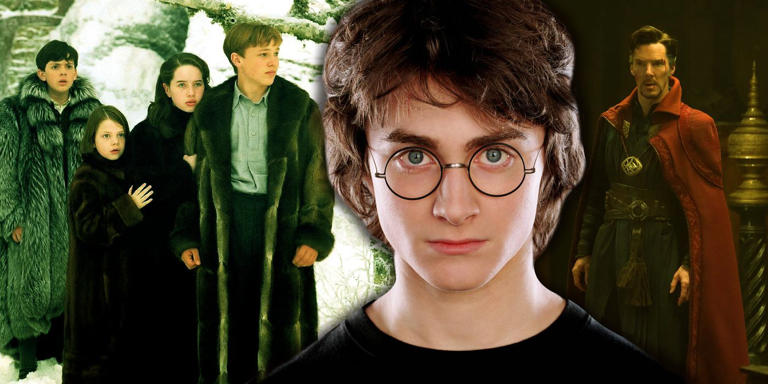

IMAGES
VIDEO
COMMENTS
10 Min Read. The Hero's Journey is a popular writing framework that outlines a main character's journey from zero to hero. Famous movies and stories have been shown to fit the narrative pattern of the Hero's Journey. One of those titles is Harry Potter and the Philosopher's Stone. Given the fame of the story and the series in general ...
How does Harry Potter's story match the pattern of Joseph Campbell's monomyth? See the analysis of the seventeen stages of adventure and the examples from the Harry Potter series.
The Hero's Journey, a concept popularized by Joseph Campbell, is a common narrative structure found in many epic tales throughout history. It follows the path of a hero as they embark on a transformative quest, facing challenges, discovering their true potential, and ultimately emerging victorious. In the Harry Potter books, this narrative ...
The hero's journey itself is a universal narrative archetype that transcends cultures and time periods, reflecting fundamental truths about the human experience. Subversion of Tropes. While the Harry Potter series adheres to many conventions of the hero's journey, it also subverts expectations and challenges traditional tropes.
Twitter: https://twitter.com/MovieFlameProdPersonal Instagram: https://www.instagram.com/morgan_ross18/Facebook: https://www.facebook.com/MovieFlame/I'm very...
The Hero must enter into the unknown. This is typically told as a descent, a journey down into the depths. When Harry enters the trapdoor, he is doing exactly that. The entrance is guarded by a mythical and fearsome creature, the three headed dog Fluffy. After gaining entrance, Harry must confront and overcome various obstacles.
Ordeal. Down in the Chamber of Secrets, Harry runs into a "memory" from a diary of a former Hogwarts student named Tom Riddle. He reveals that he possessed Ginny Weasley to open the chamber and release a monster called a basilisk to attack students. Oh, and he also mentions that he's a younger version of Lord Voldemort.
In the case of Harry Potter and the Sorcerer's Stone, the Hero's Journey is actually divided in two. You can look at the film on its own—as a single beginning/middle/end story—or you could look at it as Chapter One of a seven-chapter (or eight-movie) saga, which means it probably just encapsulates the first four of five stops on the Joseph ...
The second part of the Hero's Journey is Initiation. It has five sub-divisions - The Road of Trials, Atonement with the Father, Apotheosis, and the Ultimate Boon. The Road of Trials has tasks that prepare the hero to pursue an ultimate goal. In the Harry Potter series, this stage basically comprises books two through four.
Learn how Harry Potter follows the 12 stages of a mythological hero's journey in this movie adaptation of the fourth book. See how he faces challenges, allies, enemies, and ordeals in his quest to defeat Voldemort.
The hero's journey is a storytelling framework that follows the adventures of a protagonist as they embark on a transformative quest. In the Harry Potter movies, this framework is used to depict the growth and development of Harry Potter as he navigates through the wizarding world. From his ordinary life at Privet Drive to his ultimate battle ...
Harry Potter fits into the hero's archetype because he comes from an ordinary world of "Muggles" until he realizes that he has wizard-like qualities. He goes to a new world, Hogwarts School of ...
Campbell's definition, as an infant Harry is very literally "marked" for an extraordinary. life with a lightning bolt-shaped scar on his forehead, a constant reminder of Voldemort's. failed attempt to murder him {Sorcerer's Stone 99). After the murder of his parents, Harry's consequent childhood mirrors that of.
Harry's "Hero's Journey" The boy Harry Potter nonchalantly strolled onto J. K. Rowling's mind, fully formed, one day during a long train ride — a handsome orphan, with a scar, who didn't know he was a wizard until he recieved a letter of entrance from a wizarding school. Harry had a job to do, which was more fully discovered in the few ...
Luke Skywalker (Star Wars), Indiana Jones (Raiders of the Lost Arc), Katniss Everdeen (The Hunger Games), Barbie (Barbie), and Harry Potter (the Harry Potter series) are perfect examples of the hero character archetypes. You can include any protagonist within a story that goes on a physical or emotional journey.
This powerful storytelling framework is known as the hero's journey, a concept rooted in the groundbreaking work of renowned mythologist and author, Joseph Campbell. ... J.K. Rowling creates an unforgettable introduction to Harry Potter's hero's journey, setting the stage for a thrilling and transformative adventure that has captivated ...
The Hero's Journey Home 12. Refusal of Return. Upon a successful completion of the Hero's Journey, and a transformation into a different person, the Hero has a "refusal to return." The Shire seems so boring now and the last thing Harry wants is to go back to that drawer under the stairs. And, oftentimes, the return can be just as dangerous.
Hagrid helps Harry begin his journey and introduces him to the magical world, assisting him throughout the course of the story. 4. The Crossing of the Threshold. Harry must leave behind the Muggle World to enter the wizarding world. He crosses The Leaky Cauldron threshold with Hagrid and crosses the barrier to Platform 9 3/4 with the Weasleys.
The Hero's Journey was invented by Campbell in his seminal 1949 work, The Hero with a Thousand Faces, where he introduces the concept of the "monomyth." A comparative mythologist by trade, Campbell studied myths from cultures around the world and identified a common pattern in their narratives.
He wrote The Hero with a Thousand Faces, in which he outlined the 17 stages of a mythological hero's journey. About half a century later, Christopher Vogler condensed those stages down to 12 in an attempt to show Hollywood how every story ever written should—and, uh, does —follow Campbell's pattern.
As a quick refresher, the Hero's Journey is a storytelling theory by Joseph Campbell. Refined by Christopher Vogler into a convenient twelve-step process, the Hero's Journey begins when the hero starts humbly (Ordinary World) and then experiences a Call to Adventure. The hero refuses that call, and finds themself encouraged and trained by a Mentor.
Then we'll examine each of the stages in detail, with examples from popular fiction: The Hunger Games, Harry Potter and the Philosopher's Stone, Interview with a Vampire and Interstellar. ... The Hero's Journey stages are the backbone to a vast amount of popular fiction, and appear in everything from Star Wars to Harry Potter to The Da ...
Harry refuses, causing Voldemort to instruct Quirrell to attack Harry. Harry's life is in danger when Voldemort's soul passes right through him as he leaves without the stone after Quirrell has been defeated. Harry encounters various tests that challenge both his wits and wizardry skills. One of the major tests he goes through is facing the troll.
In episode 6 of Justice For Dean Thomas our hosts delve into the heart of Harry Potter and the Sorcerer's Stone, focusing on a character who embodies resilience and bravery in the face of adversity: Neville Longbottom. Through chapters 12-15, Kevin, Natasha, Chantae, and CJ explore the trials and tr…
What Makes It Great. The Chronicles of Narnia: The Lion, the Witch, and the Wardrobe is the perfect post-Harry Potter watch. There are mystical creatures, a magic system, epic action sequences ...